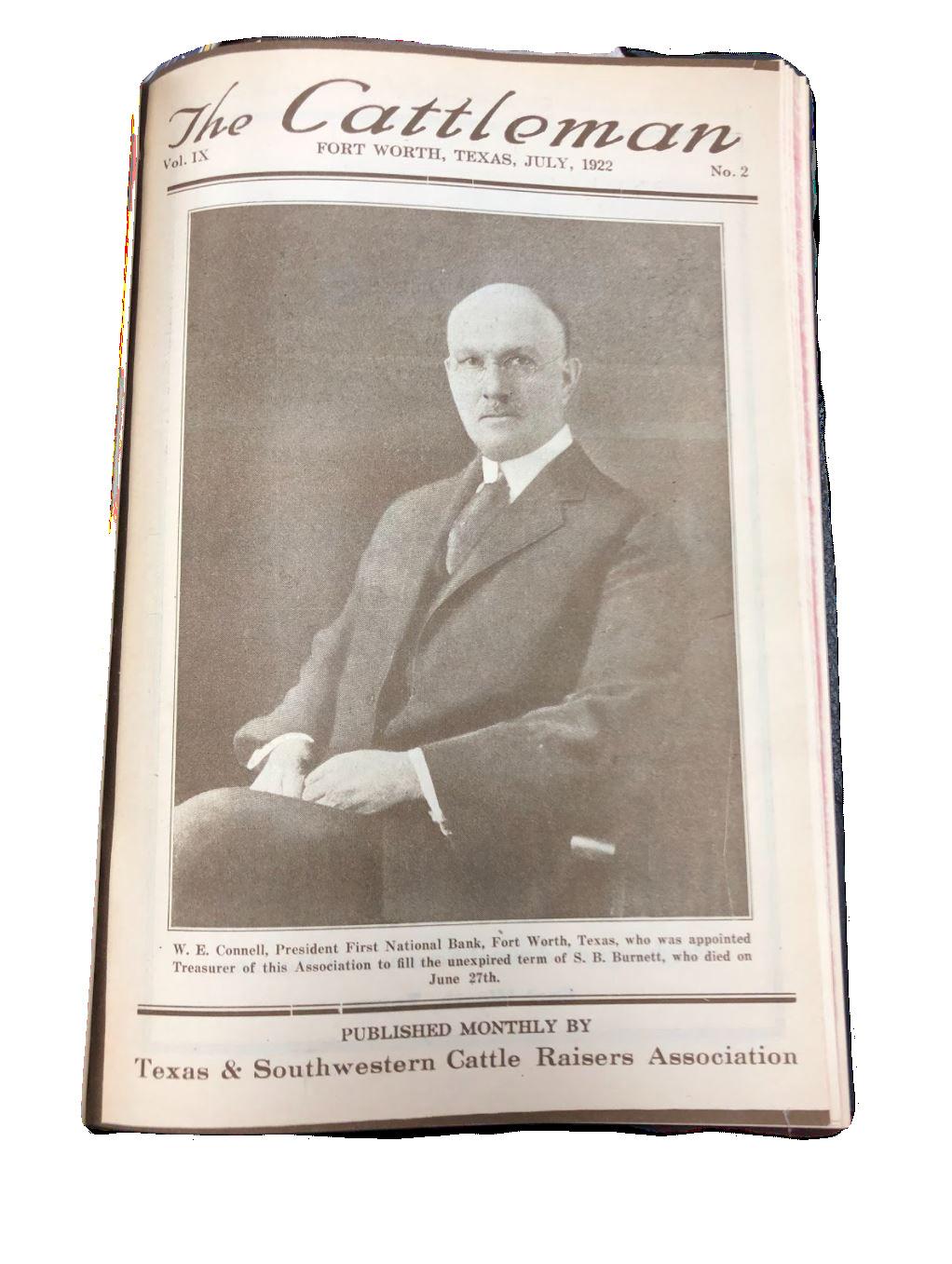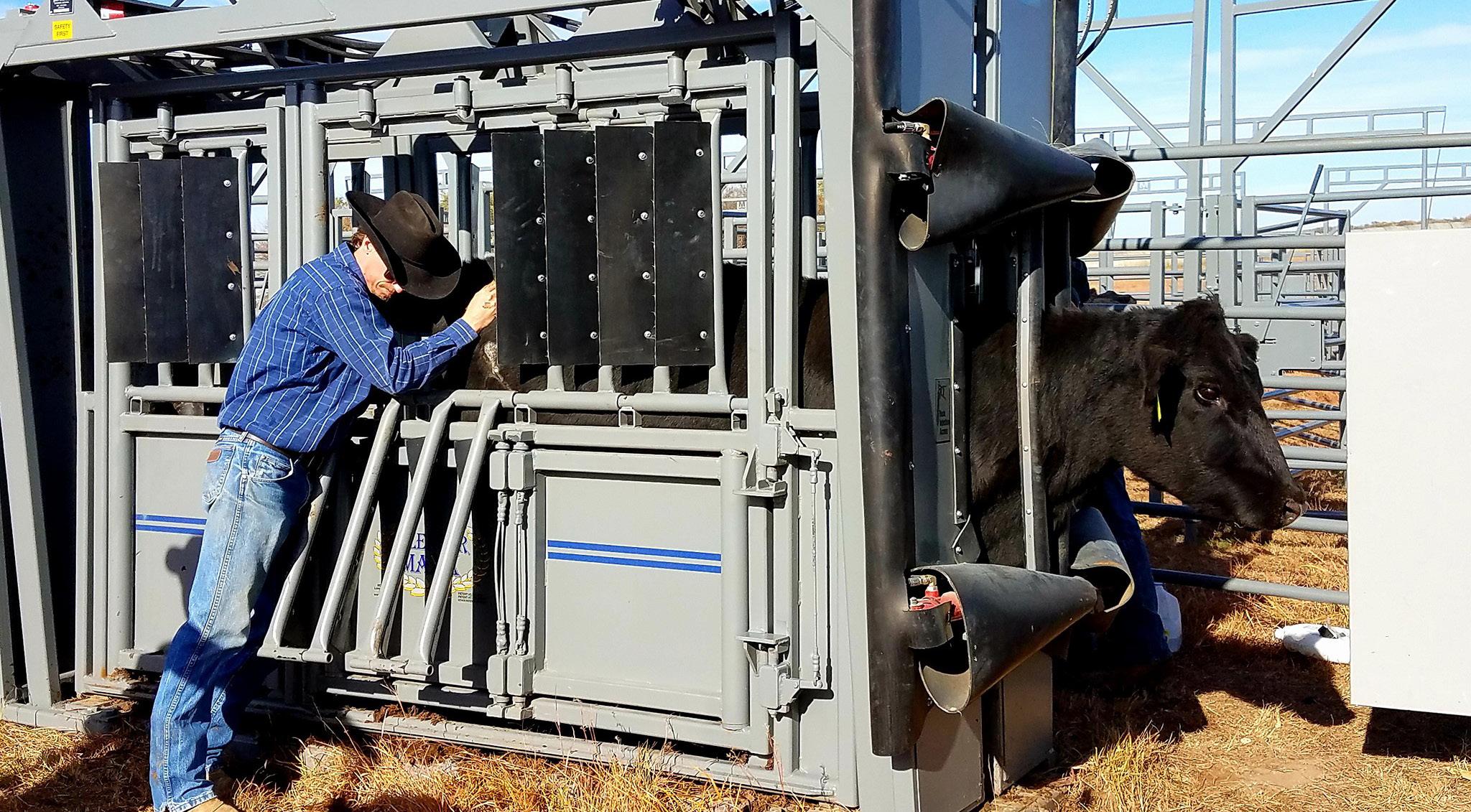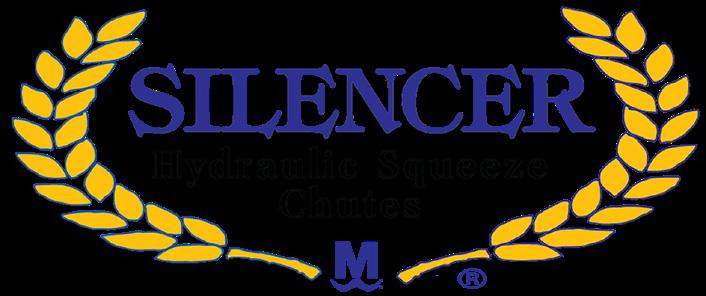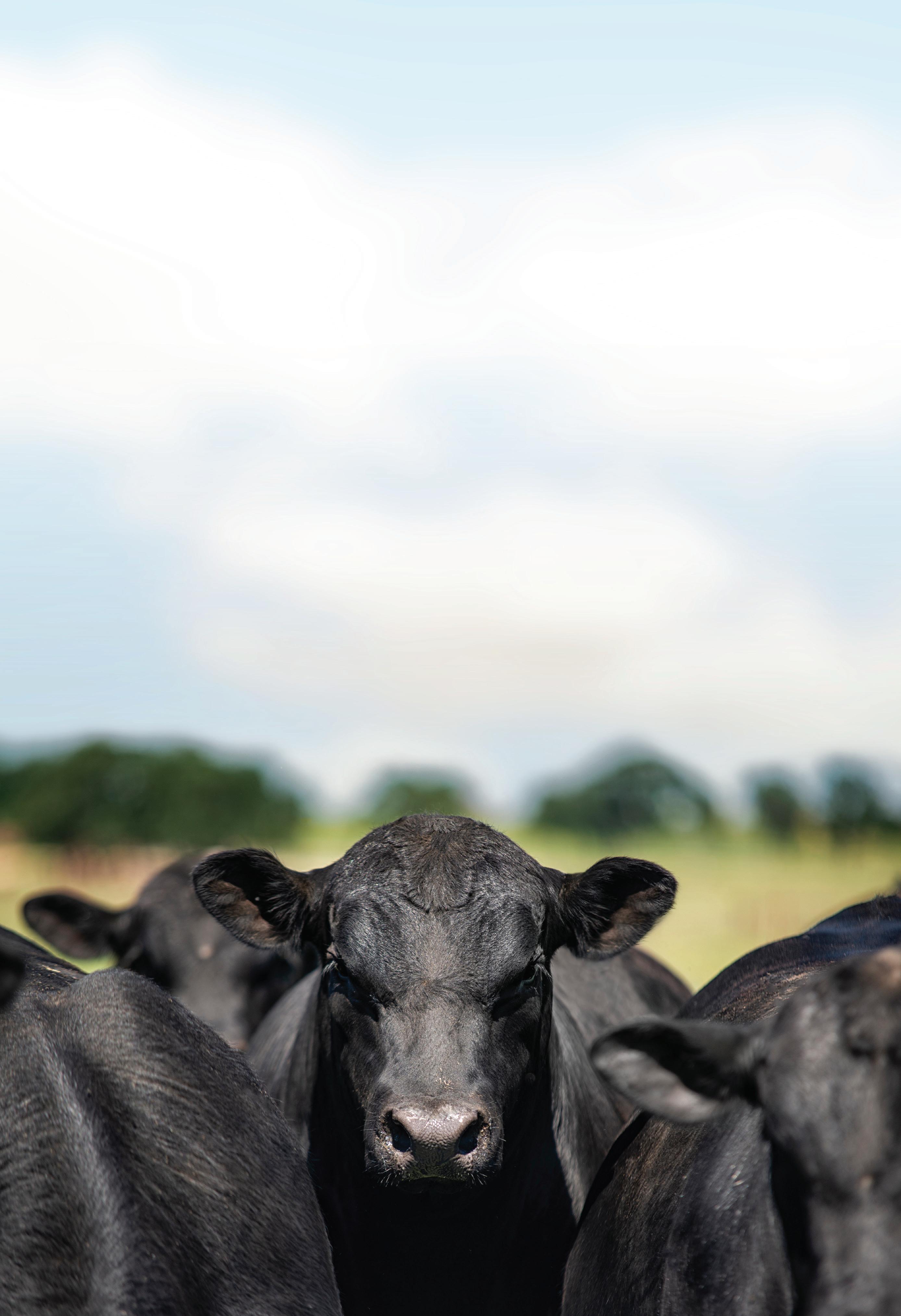A Calling to Serve








As board chairman of Texas Beef Council, TSCRA Director Dan Gattis finds another way to advocate for fellow cattle raisers.
By Sarah HarrisDeep in the heart of developing urban communities, Seguin Cattle Co. opens its doors to share market traditions.
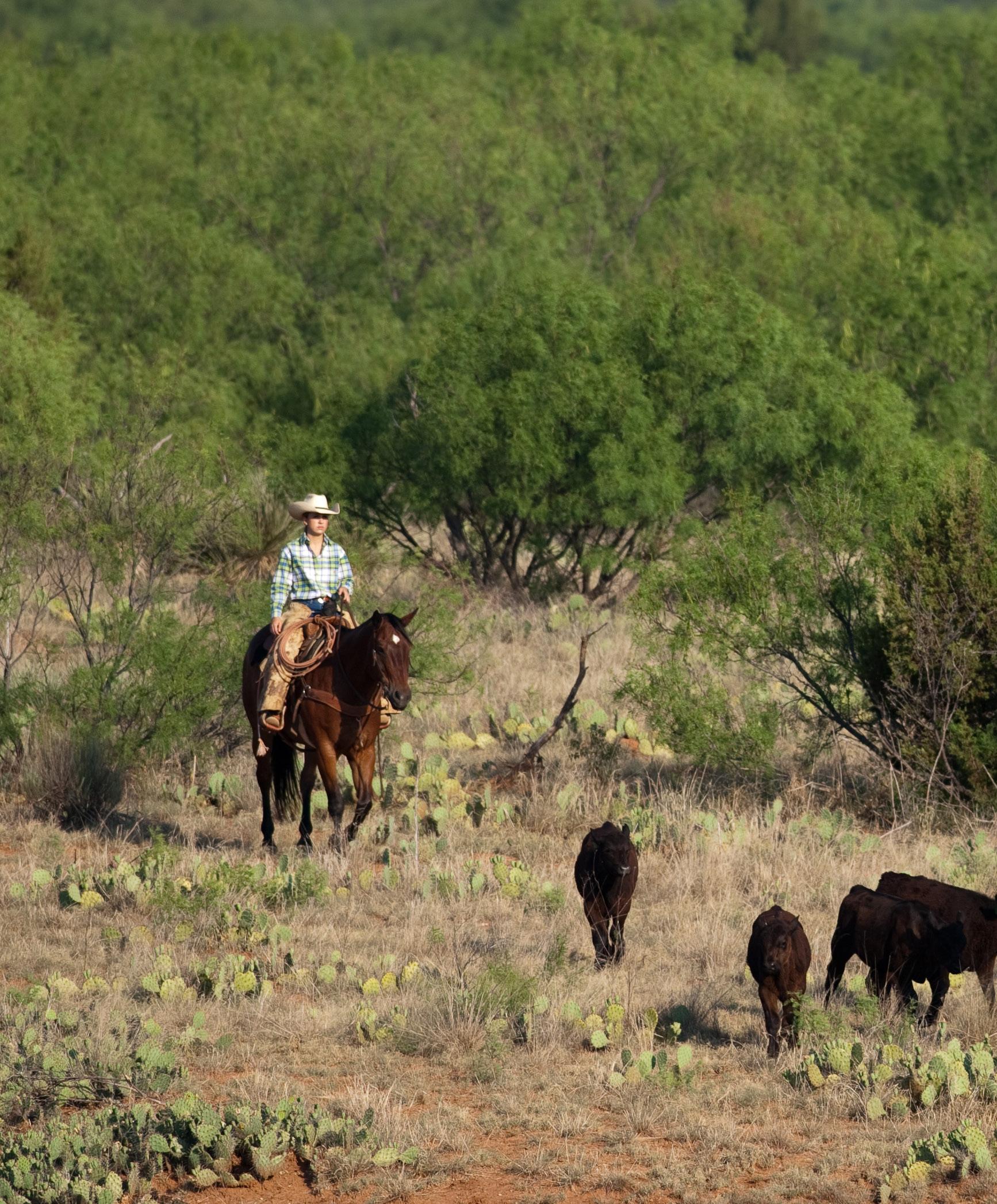 By Diane Meyer
By Diane Meyer
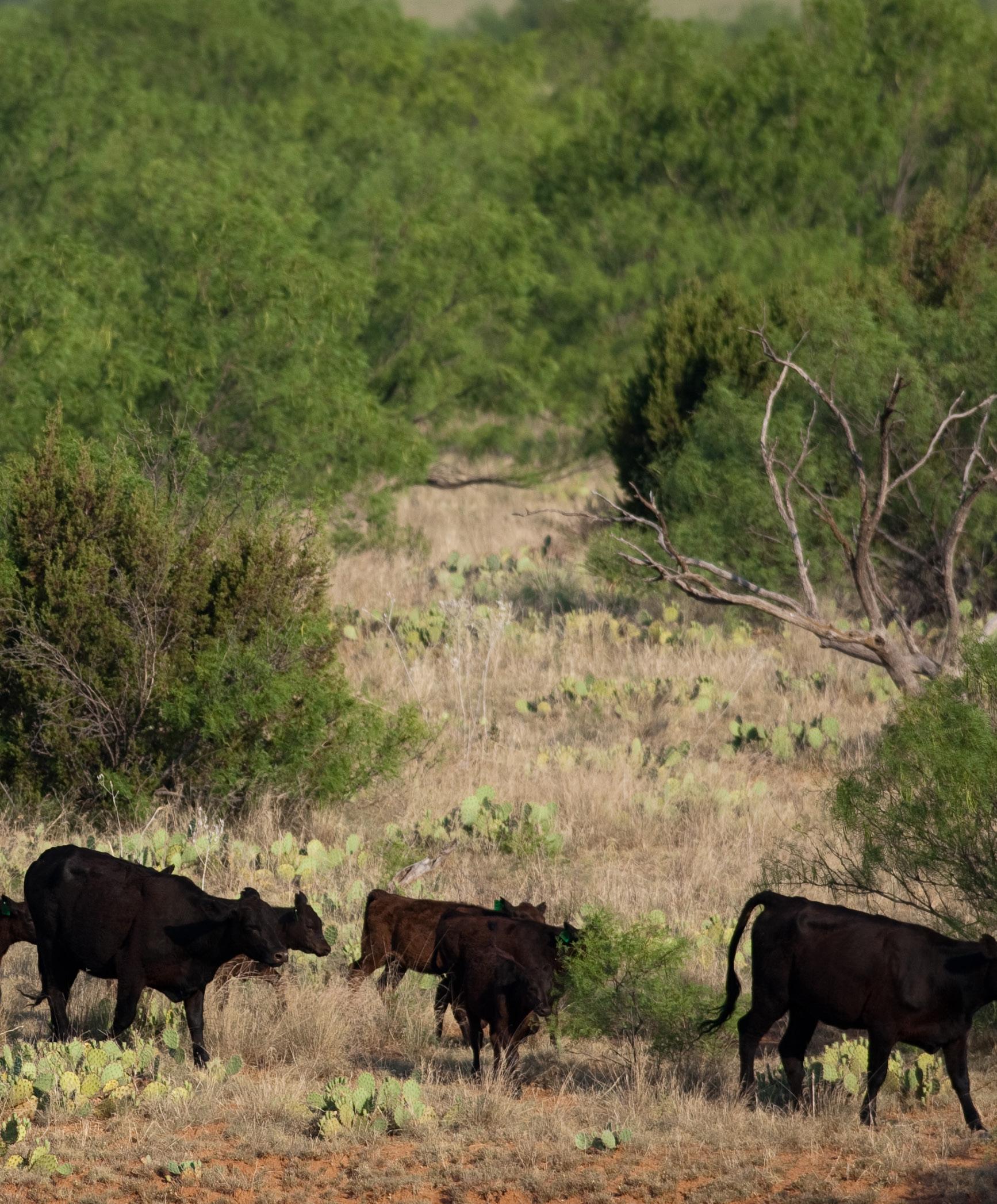
Published by Texas & Southwestern Cattle Raisers Association
P.O. Box 101988 Fort Worth, Texas 76185
Phone: 817-332-7155 Fax: 817-332-6441
Subscription Inquiries: (orders, address change, problems) tscra@tscra.org or 800-242-7820 tscra.org
Jena McRell Managing Editor
Kayla Jennings Proofreader
Jana Earp Advertising and Partnership Manager jearp@tscra.org • 817-916-1744
Heather Heater Graphic Designer
Kendy Scudder Assistant Graphic Designer
Bart Ashford Creative Director
Production support by GRANT COMPANY grantcompany.net
The Cattleman/ TSCRA tscra.org
Cattle Raisers Insurance cattleraisersinsurance.com
Law Enforcement tscra.org, click on Theft & Law
Cattle Raisers Convention cattleraisersconvention.com
While cattle, like the Angus cow pictured on the cover, are the focal point of the beef business, it is also an industry built on people and partnerships. In this issue, read how individuals and organizations look out for livestock producers.
Published on the first day of each month by Texas & Southwestern Cattle Raisers Association Inc., P.O. Box 101988, Fort Worth, Texas 76185. The Cattleman (ISSN 0008-8552, USPS 095000), copyright 2022 by Texas & Southwestern Cattle Raisers Association. Title registered U.S. Patent and Trademark Office.
Alliance for Audited Media. Subscription $50 per year; foreign $70 per year.
The Cattleman magazine.
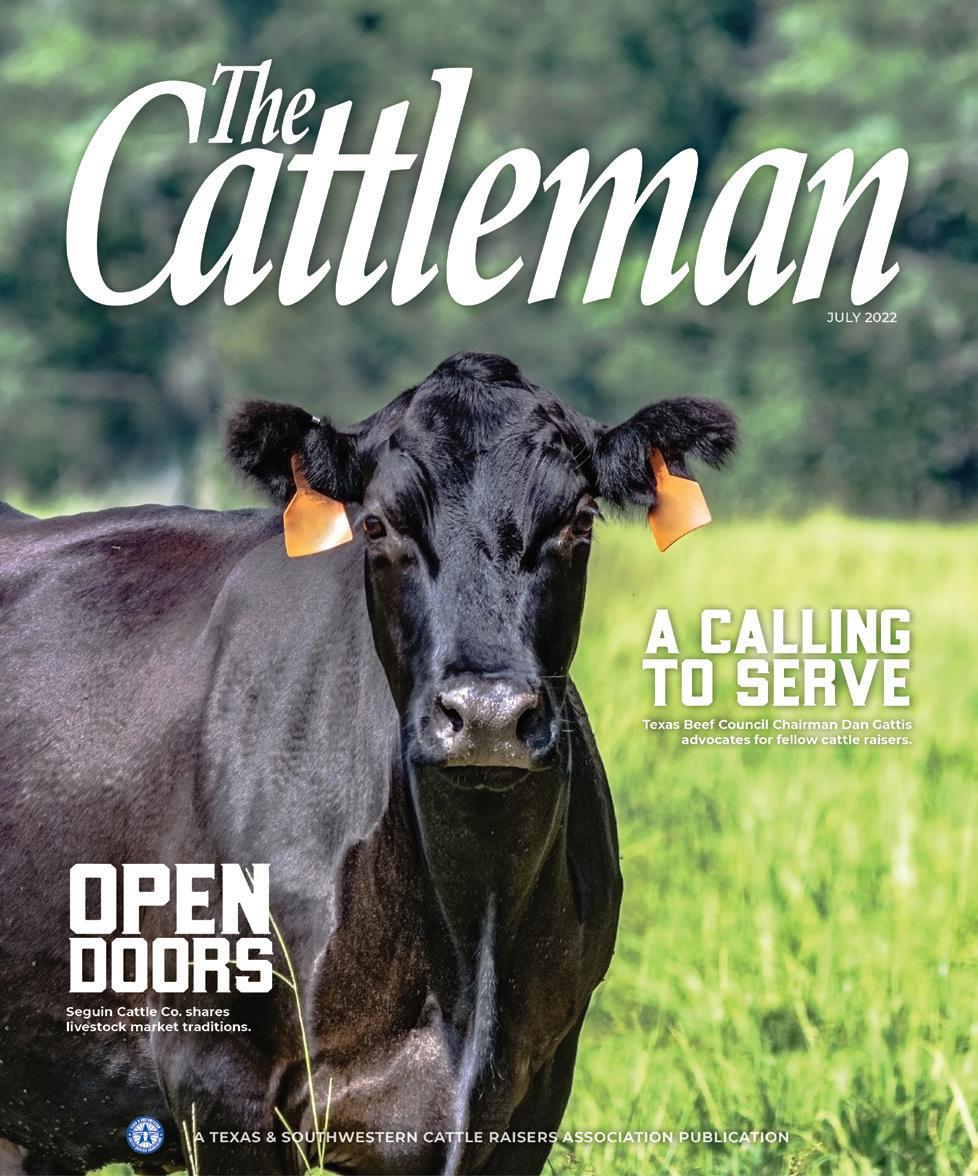
POSTMASTER: Send address changes to: The Cattleman, P.O. Box 101988, Fort Worth, Texas 76185, 817-332-7155, FAX 817-332-6441. All members of Texas & Southwestern Cattle Raisers Association receive a monthly copy of The Cattleman as a benefit of their membership.
editorial
As a local cooperative, we share our profits with the Texans we serve. Since 2006, we’ve returned $2.2 billion in combined cash and allocated equities to our members through our cooperative returns program. So, when you’re ready to expand or enhance your ranching operation, try a partnership that really pays. Together we’re better.

As board chairman of Texas Beef Council, TSCRA Director Dan Gattis finds another way to advocate for fellow cattle raisers.
 By Sarah Harris
By Sarah Harris
During his eight years in the Texas House of Representatives, Dan Gattis regularly passed by a portrait in the Capitol basement of his great-greatgrandfather, Henry Meyer, a legislator in the late 1890s. With a wave of his hand, Gattis would pay silent tribute to his ancestor and the long line of Texas history between the two men.
Woven into this history is a passed-down calling to serve others. But since Gattis’ civil service career ended, he has found a new
benefactor for his personal calling — the Texas beef industry. Most recently, he was named board chairman of Texas Beef Council, representing ranchers across the state, including more than 17,000 Texas & Southwestern Cattle Raisers Association members.
“Life is a really lonely place if it’s all about you,” Gattis says. “My parents were both teachers, so service to others has been instilled in me, and I get great satisfaction from it. I truly enjoy the roles I’ve had to serve the industry.”
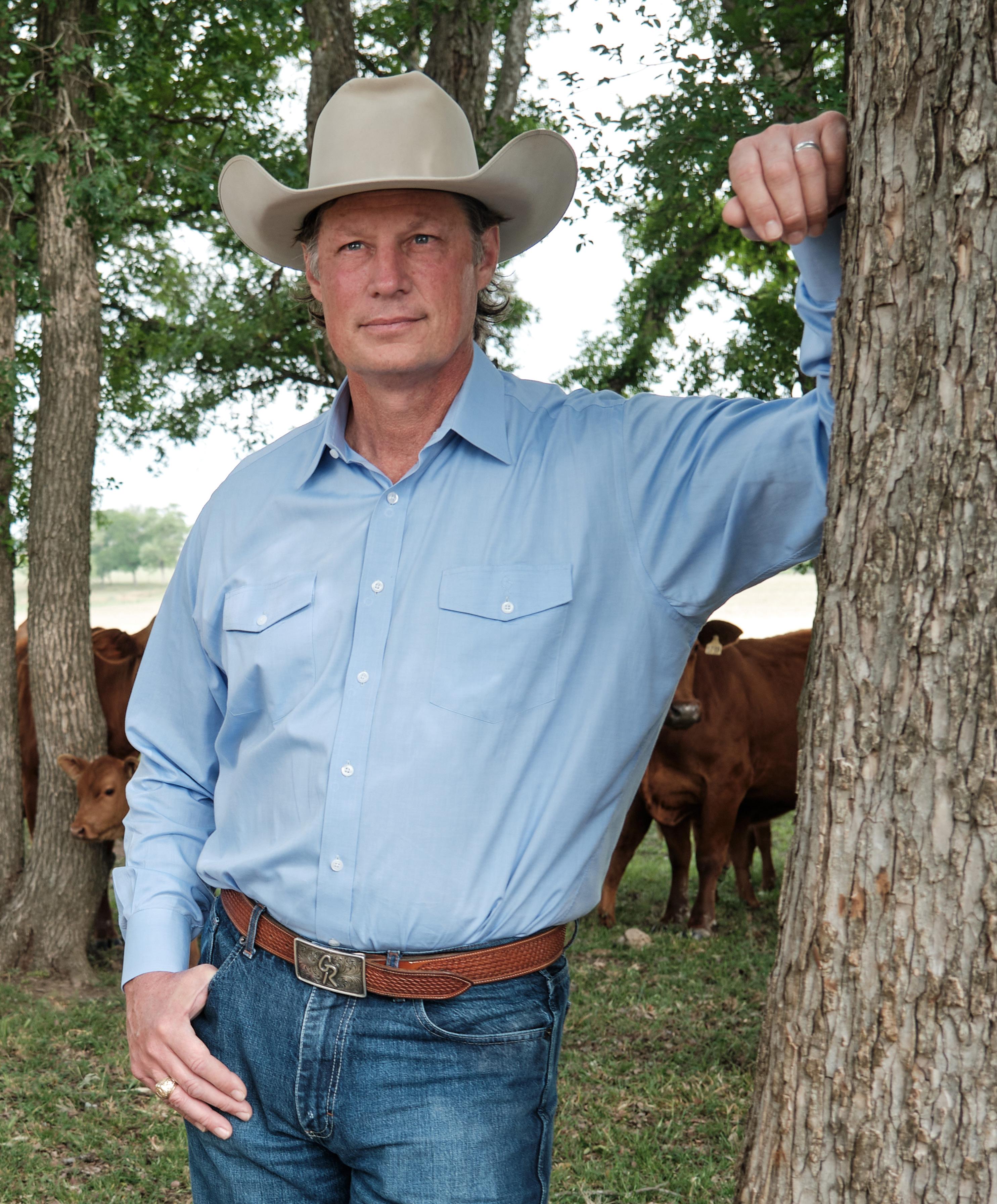 Photo by Mark Matson
Photo by Mark Matson
Gattis roots run more than a century deep in Williamson County, where Dan and his family — wife, Shana; son, Sterling; and daughters, Carson and Kenedy — still ranch today. Previous generations farmed and raised cattle and horses, and the family land was handed down from Gattis’ great-grandfather to his grandfather and then his father, Dan Sr., who was instrumental in purchasing and restoring additional family land to the operation.
After a career in education, Dan Sr. served as president and CEO of the Houston Livestock Show and Rodeo, so the farm was leased out for many years. Gattis had graduated from law school and was a year into his career in Houston when he approached his father about reclaiming the leased acres and getting serious about the cattle industry.
“Every partner in the law firm was talking about when they retired to the Hill Country or when they retire and
move to Austin,” he says. “I had an opportunity to come home, so I said, ‘Everybody else wants to go there — I’m going now.’”
He moved home to one of the family’s farms and formed Gattis Cattle Co. with his parents. They started out with crossbred cows before eventually moving to the Beefmaster breed, which has been the foundation of their herd for the last 30 years, and now into Red Angus.

Gattis didn’t give up practicing law, though. Today, he is a trial lawyer with a practice in nearby Georgetown. He is passionate about representing fellow landowners in eminent domain and condemnation cases, ensuring families are compensated, and land is protected for future generations.
“The biggest thing I’ve learned is the land truly becomes a part of you,” he says. “You begin to understand you don’t own it; you’re just a steward of it for the next generation. And the older I get, the more I understand that truth.”






Gattis says his family has been Texas & Southwestern Cattle Raisers Association members for decades and recalls attending a few conventions growing up. As he got more involved in the cattle industry, he knew he wanted to dive deeper into the organization. After years of serving on various association committees, he recalls asking a fellow member and director, “How do I do more?”
That fateful conversation led to Gattis serving on multiple committees and ultimately being elected to the board of directors in 2015.
“My dad always said, ‘If you’re the smartest guy in the room, find a new room,’” Gattis says. “That’s what I saw with the board of directors. It was a way for me to get into a room of people who were much smarter and much more accomplished than myself.”
Still striving to do more, Gattis says he always asks association leadership where he can best be of service. He’s chaired committees, spoken to media and testified in legislative hearings on behalf of Texas & Southwestern Cattle Raisers Association members.
In 2017, he was asked to represent the association on the Texas Beef Council board of directors. The group controls and directs all Texas Beef Checkoff activities, and consists of 18 directors nominated by nine Texas beef and cattle organizations and two at-large directors elected by the board.
“TSCRA has a history of selecting great leadership for the board and Dan Gattis is no exception,” says Molly McAdams, Texas Beef Council executive vice president. “Dan exudes the qualities of a leader who shows up deeply engaged, thoughtful and accessible.”
After four years, Gattis was appointed chairman in 2021. And while his tenure is of service to his fellow cattlemen and the beef industry, he is quick to call his appointment one of the “greatest things anyone has done for me.”
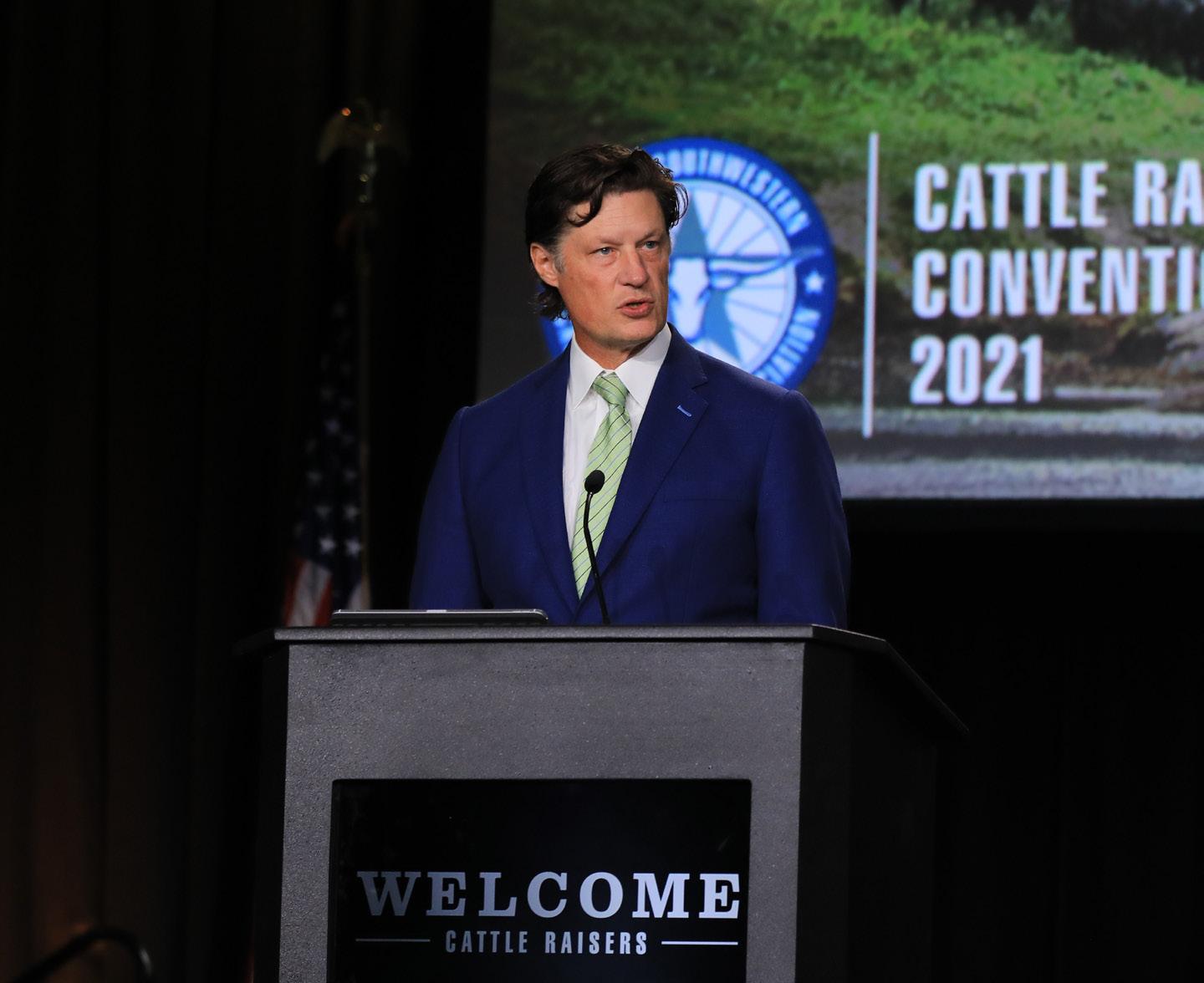
He remarks on the advancements made with Checkoff, including creating more avenues for producers to share their stories and increasing beef’s market share.
“Checkoff-funded research and education have given consumers the permission to like beef again,” Gattis says. “And we’re producing a better product than it was 30 years ago because of research. It’s more palatable, more tender, and we have a wider variety of cuts.”
Dan Gattis says he wants to be where he can best be of service — whether that’s addressing a crowd from a stage or horseback on the ranch.
 Pictured here in his office at the ranch, Dan Gattis is the sixth generation on his family’s land in Williamson County. Photo by Mark Matson.
Pictured here in his office at the ranch, Dan Gattis is the sixth generation on his family’s land in Williamson County. Photo by Mark Matson.
We didn’t just design the 6M Tractors with you in mind. We designed them with you by our side. Before we even hit the drawing board, we talked with farmers, fleet owners and more to learn what they need in a mid-size utility tractor. Visit JohnDeere.com/6M or JohnDeere.ca/6M or contact your John Deere dealer to discover the tractor you designed—with more visibility, better maneuverability and more options to fit your needs.
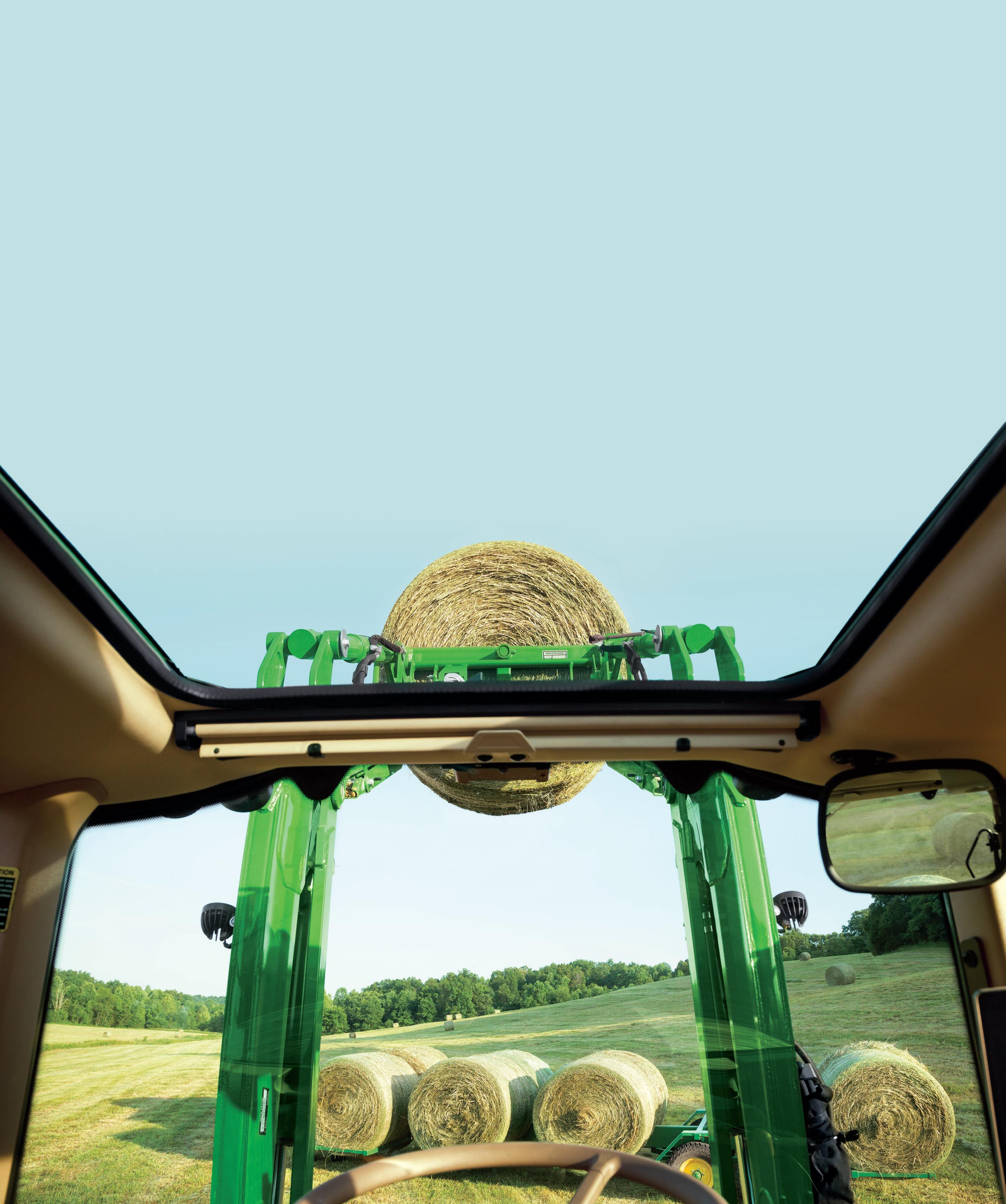
The 6M. Reimagined by you. For you.
As part of his leadership roles with Texas Beef Council, Gattis has also come to serve the National Cattlemen’s Beef Association in greater capacities, specifically through the Federation of State Beef Councils.
He occupies one of the revenue seats on the organization’s executive committee on the side of the federation division, held by state beef councils who invest more dollars into the federation over and above their national share of the Checkoff.
Gattis also represents the federation on the Beef Promotion Operating Committee. The 20-person committee is responsible for developing the annual budget, and developing plans and programs in promotion, research, consumer information, industry information, foreign marketing and producer communications.
“We get to participate in some of the highest-level conversations in the beef industry,” Gattis says. “Every person on the Beef Promotion Operating Committee is a producer, and after we meet, they go back to their farm, ranch or organization, so there is not a dollar spent in the Checkoff that is not approved by a producer. These people are working diligently to promote our products and ensure the product has a market. They have the right mentality, and they have the right heart.”
Gattis believes Texas producers need to be equally excited about what the state checkoff has done to create consumer demand for beef in Texas. It is administered by the Beef Promotion and Research Council of Texas, which contracts with Texas Beef Council.
Consumer dining habits changed drastically during the pandemic, with many more people searching for recipes to cook at home. Texas Beef Council staff kept digital marketing content fresh and provided consumers with more resources to feel confident cooking beef, thus driving up the council’s website traffic.
“If we are going to impact the next generation, we need to be where they are, and that’s on their phones — online and on social media,” he says. “But thanks to Checkoff dollars, we are also in high school culinary classrooms providing curriculum and giving them experiences outside of the classroom.”

The Beef Checkoff was established as part of the Beef Promotion and Research Act in the 1985 Farm Bill.
Producers and beef importers pay a $1-per-head assessment on animals they market and beef they import. The Checkoff assessment became mandatory when the program was approved by 79 percent of producers in a 1988 national referendum vote.
Checkoff funds are collected by qualified state beef councils, including the Texas Beef Council. These councils retain 50 cents and pass the remainder on to the Cattlemen's Beef Board, which manages and allocates the Checkoff, with USDA oversight.
These dollars help increase beef demand through initiatives such as consumer advertising, marketing partnerships, public relations, education, research and new-product development help to increase beef demand. However, by law, Checkoff funds cannot be used to influence government policy or action, including lobbying.
The most well-known Checkoff-funded initiative has been the Beef. It's What's For Dinner. campaign. The campaign was created in 1992 and has been adapted to include different spokespeople over the years, and has selected former Dallas Cowboys Quarterback Tony Romo as its new spokesperson for 2022.
In 2014, Texas beef producers voted in favor of a state checkoff, an additional $1-per-head assessment. Payment of the Texas Beef Checkoff is mandatory; however, a refund is optional. It is administered by the Beef Promotion and Research Council of Texas, which contracts with Texas Beef Council for its work. The use of funds is limited by the parameters established in state law, which are beef promotion, marketing, research and consumer education for beef and beef products.
Texas Beef Council created Beef Loving Texans as its consumer-facing brand that shares uniquely-Texan recipes, nutrition information and stories on its website and on social media.
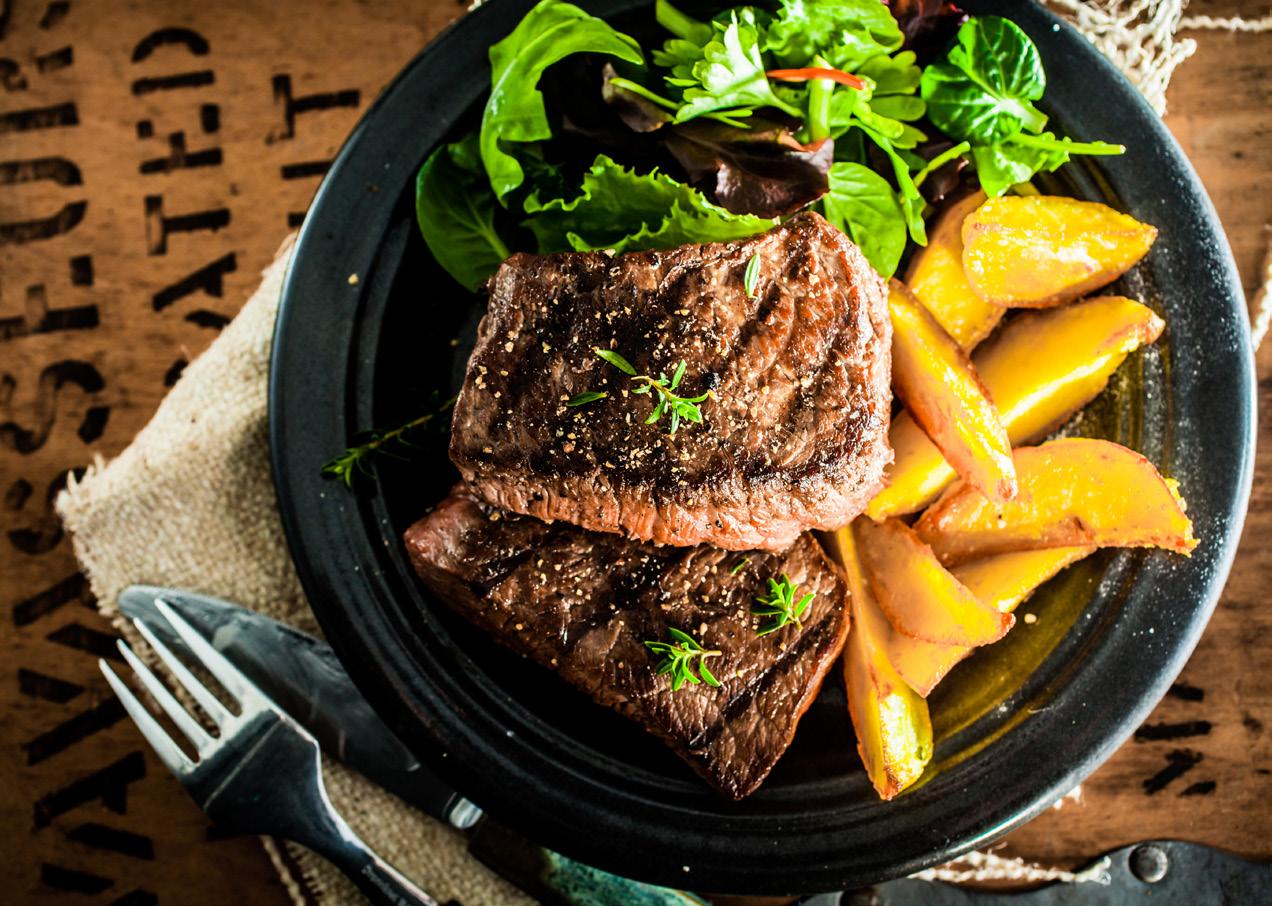
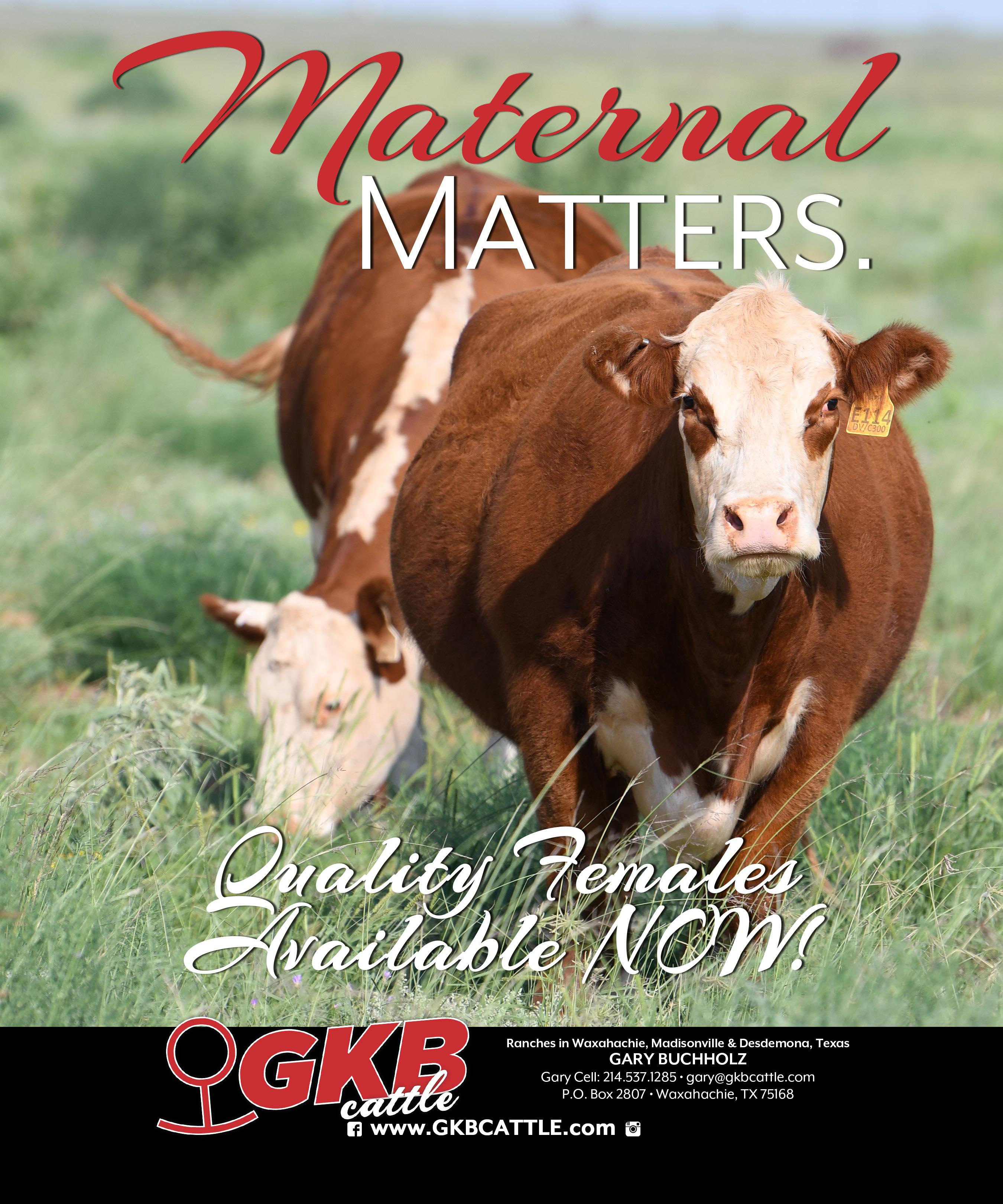
For example, Gattis recently teamed up with Texas Beef Council to give culinary students in Georgetown a gate-to-plate experience. They visited the council’s Austin headquarters for hands-on instruction in meat science, nutrition and cooking basics, and then visited the ranch to understand more about modern beef production and animal care practices.
“Taking into account his past experiences, training and education, coupled with his passion for the beef industry, Dan is uniquely qualified to provide tremendous leadership for our board,” says McAdams. “His leadership, perspective and oversight has been highly valuable and appreciated by not only me, but the entire council.”

In addition to the next generation of consumers, Gattis puts a lot of thought into how to reach the next generation of beef producers.
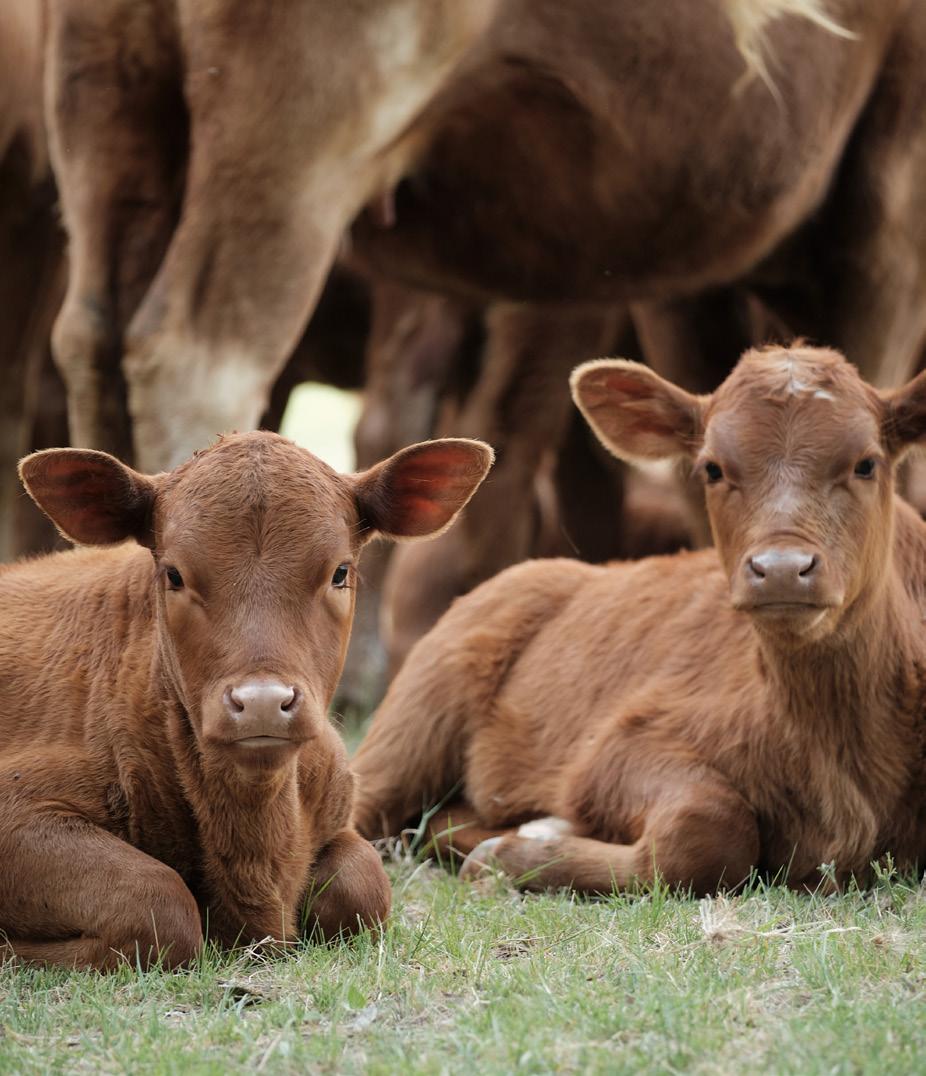

He cites the empty grocery stores commonly found in the pandemic’s early days for urging people to know more about their food sources. In addition, he says some realized our current distribution may not work under a high-stress system, causing them to seek out or create different avenues for getting their food. But different is no cause for alarm, Gattis says.
“I’m more excited about the future of agriculture than ever before,” he says. “There is a craft mentality being embraced by younger people, in that they want to do things with their hands, and they want to be good at what they do.”
He says he is inspired by the next generation opening meat markets or looking at beef operations and
questioning how they can improve. They are not going to do things the same way their granddad did them.
“There are thousands of different ways to be involved in this industry,” Gattis says. “Young people today want to be involved in something that matters — and there’s not a better place to do that than in agriculture.”
Dan and Shana’s three children are seventhgeneration ranchers. Due to the operation’s proximity to the Austin-metropolitan area, Gattis knows urban encroachment will be a future issue for his family.
“Sometimes you have to make tough decisions for the generations to come,” he says. “At some point, somebody’s going to offer so much money for our family’s place that it’s not going to make sense for us to stay. But it’s not like you’re going to sell this and put it into stocks. Instead, you’re going to figure out where to do this type of operation again, because feeding other people is a noble profession.”
Until that time comes, Gattis will go on with setting an example for his children and offering his time to others in the beef industry.
“We enjoy the environment in which we’ve raised our kids, and it’s been a great opportunity to teach them about life,” he says. “We will continue that fight against those who want to tell falsehoods or put obstacles in our way in this industry. I’m willing to help us down that road in any way I can be of service.”
T C
Sarah Harris is a freelance writer who splits her time between Austin and her family’s ranch near Tilden.
As Texas Beef Council chairman, Dan Gattis is involved in sharing the pasture-to-plate process of beef production, including hosting groups at Gattis Cattle Co. Left and middle photo by Mark Matson.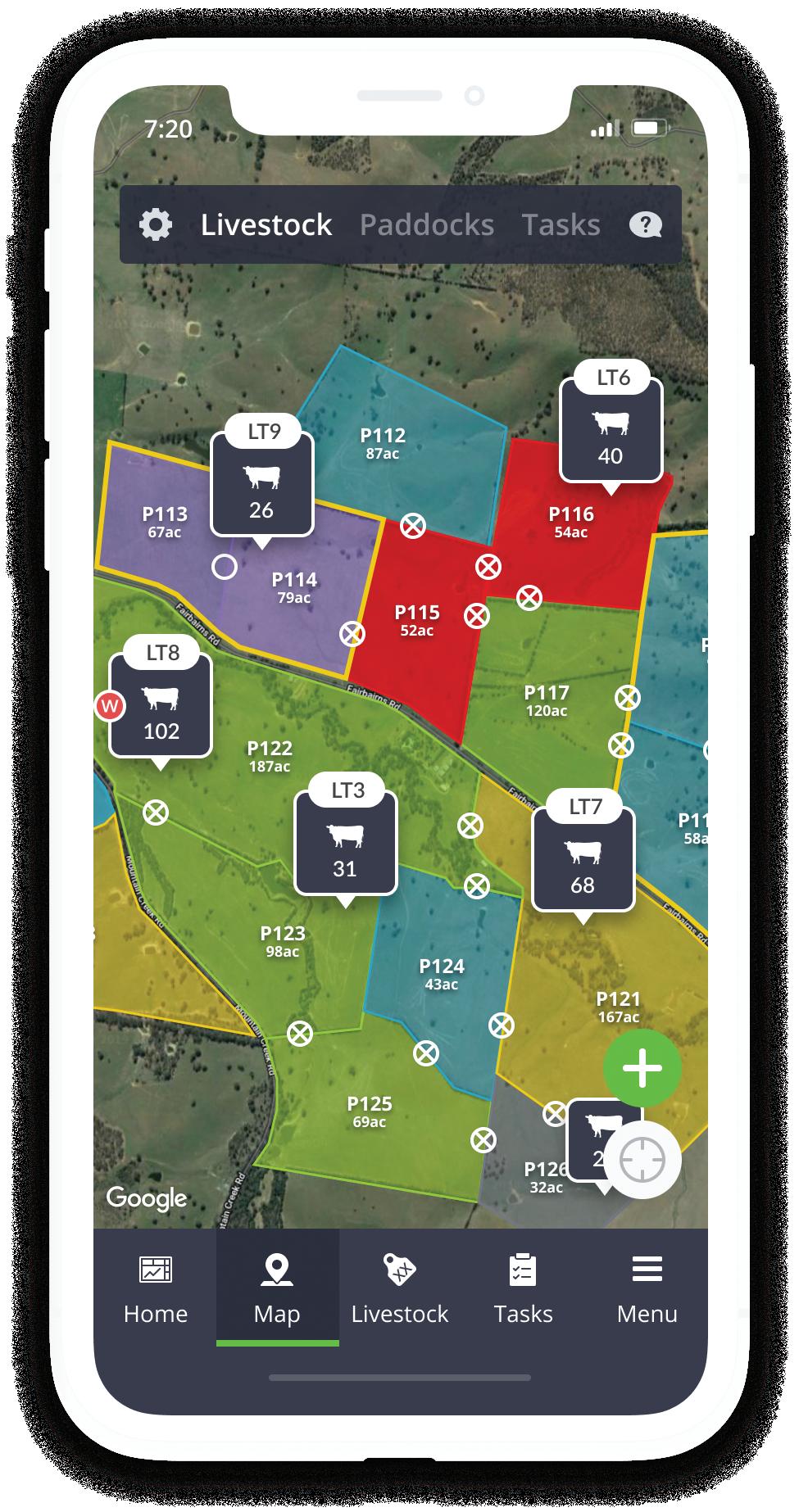
With AgriWebb, you can go beyond basic record keeping and transform everyday on-ranch data into powerful real-time insights that help you run a more profitable, efficient, more sustainable operation.
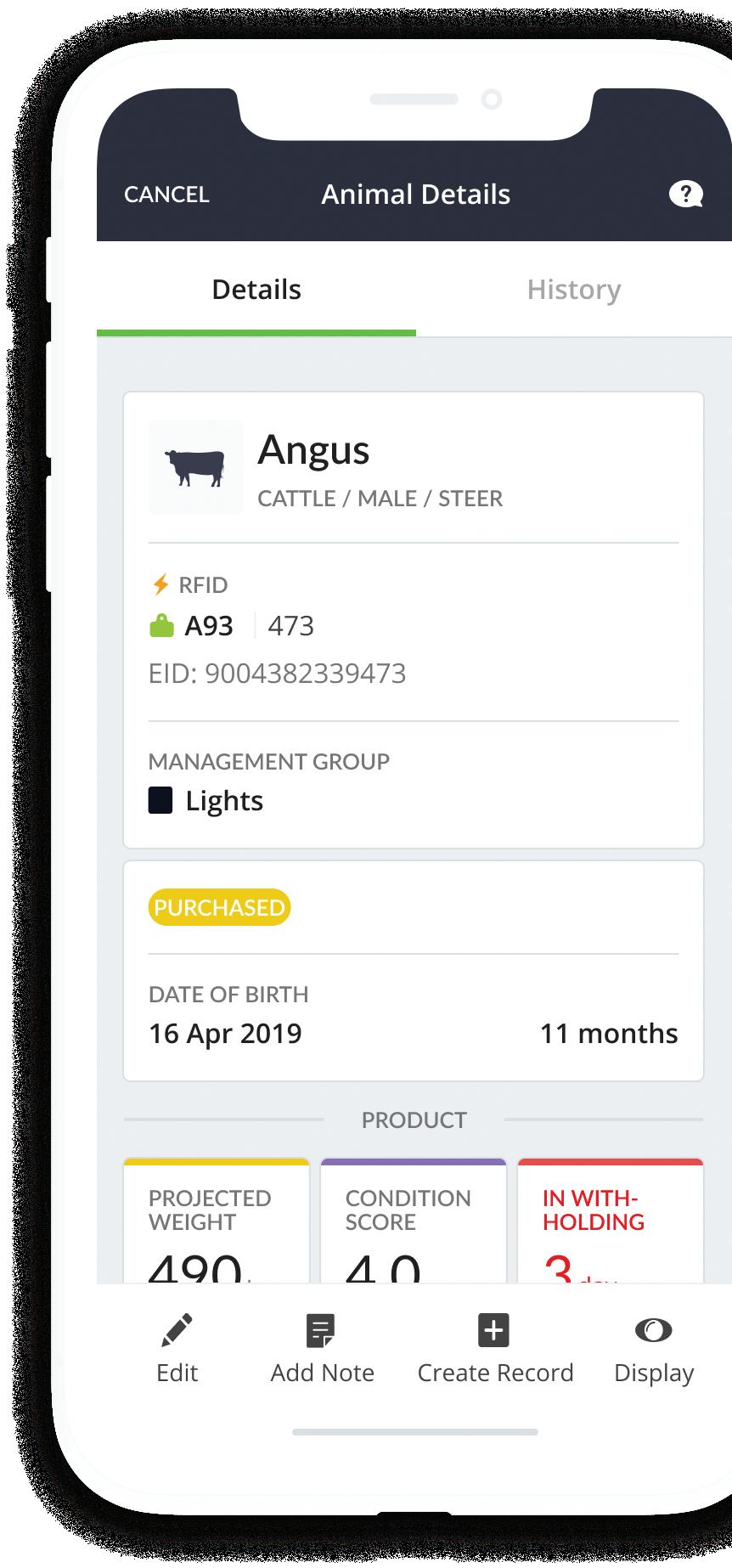
See your entire ranch, from anywhere
Manage ranch records online or offline, from any device
Know your real-time cost of production
Ensure the sustainability of your land and your future
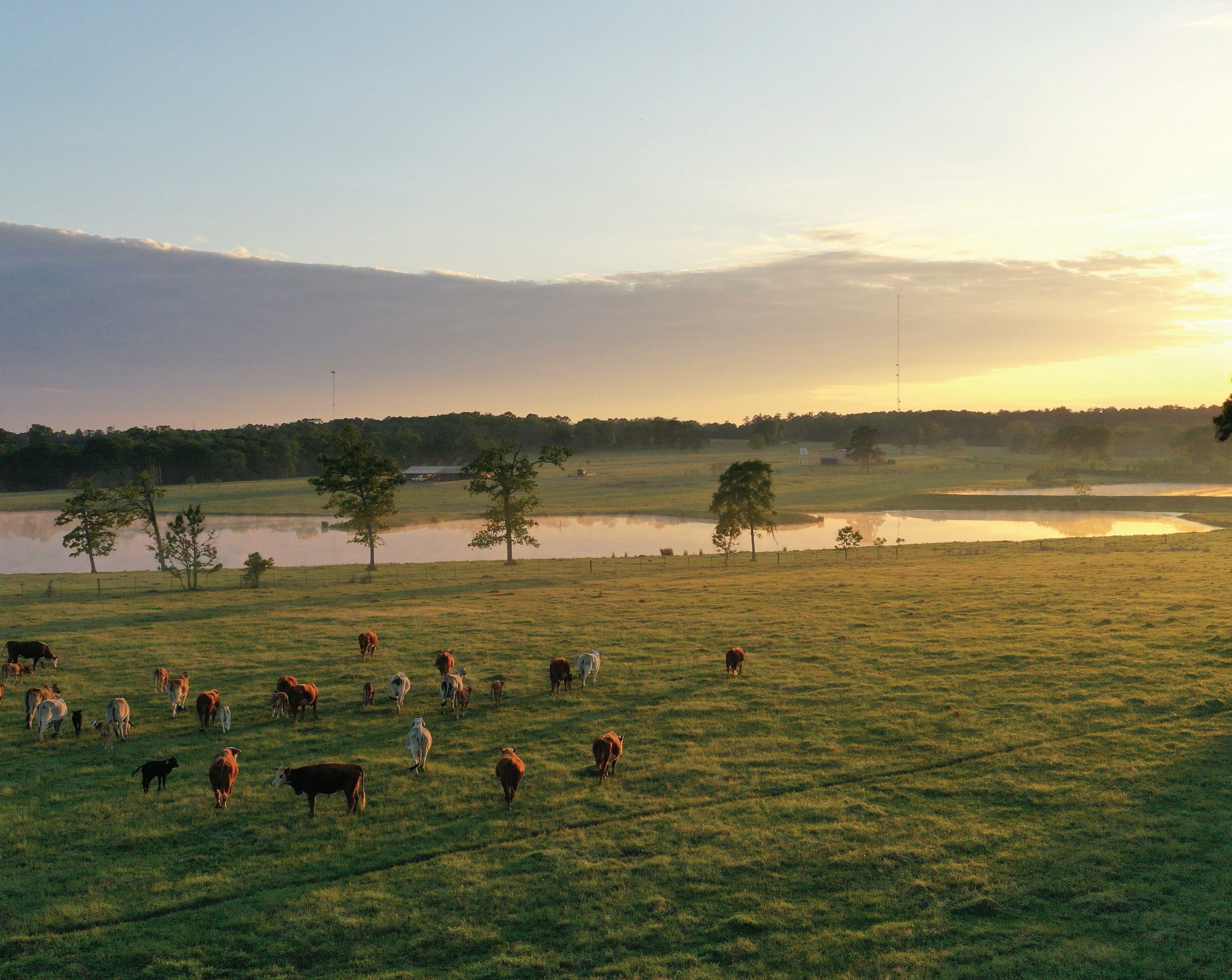
take your future
Check out AgriWebb
the

Deep in the heart of developing urban communities, Seguin Cattle Co. opens its doors to share market traditions.
Story and photos by Diane MeyerInterstate 10 connecting San Antonio to Houston is one of the most trafficked corridors in the state. The once-rural pipeline between the two metroplexes is now teeming with urban communities spanning the nearly 200-mile stretch.
In 1978, when San Antonio’s population was just 912,000, three brothers — Benno, Hank and Otto Luensmann — left the city and their jobs at the Union Stock Yards to open their own sale barn in Seguin, roughly 30 miles east.
Back then, the scenery along the interstate and Highway 46 heading north could only be described as cattle country and farmland.
Four decades later, the area’s cattle raising tradition lives on at the Seguin Cattle Co. sale barn. The landscape may be hard to recognize nowadays, but manager Bryan Luensmann is proud to carry out the legacy his dad, Benno, and uncles began.
Managing alongside Bryan is his cousin, Darren, Hank’s son. Otto’s daughter, Lora, helps in the office and son-in-law, Mike, is back in unloading area. It’s a family business they enjoy continuing each day.
“The cattle business, it is just a proud thing that’s been here in Texas,” Luensmann says.
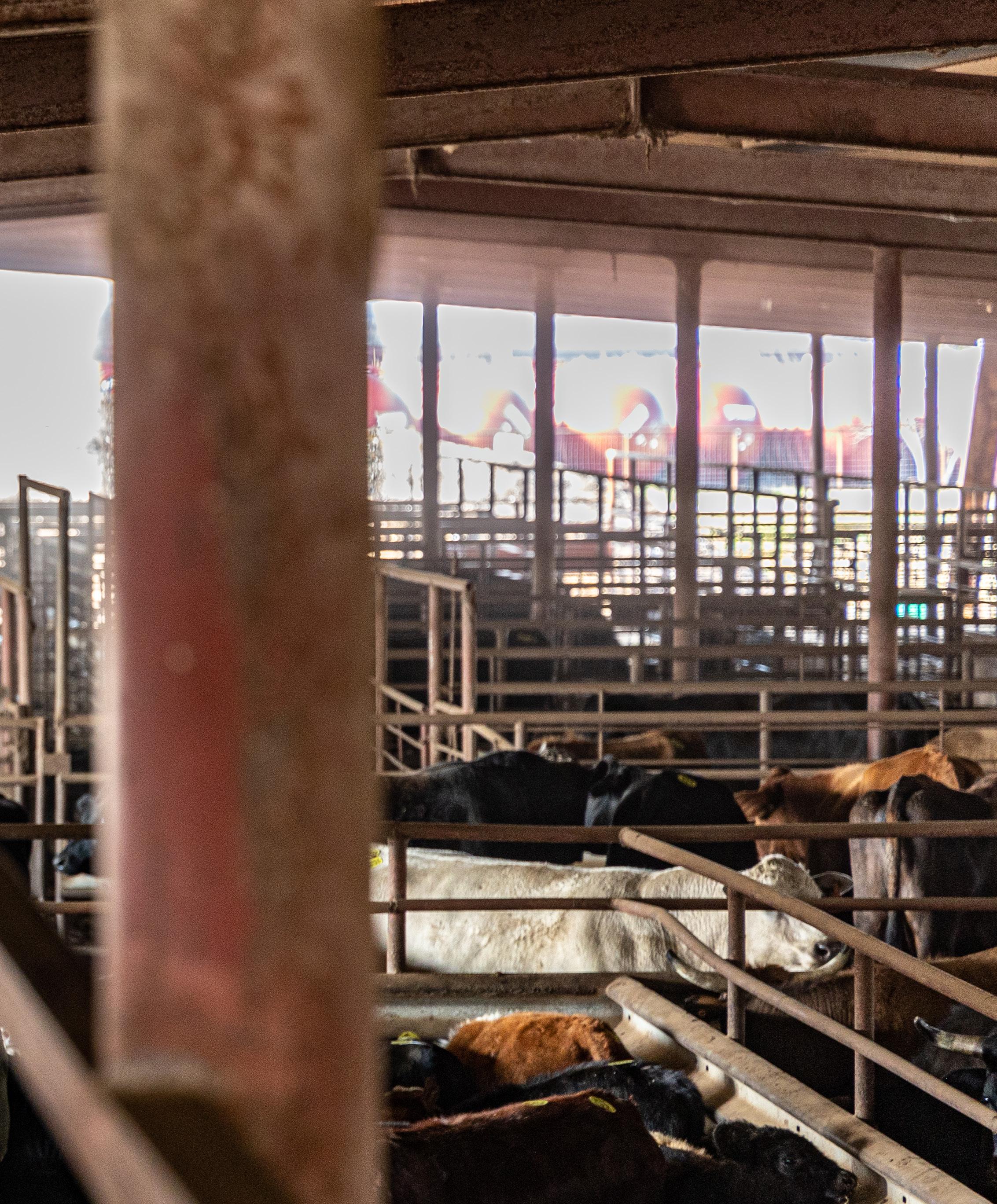
The pride of Texas cattle ranching is something Seguin Cattle Co. shares with out-of-state visitors as well as community members — some of whom are attending a livestock market for the first time.

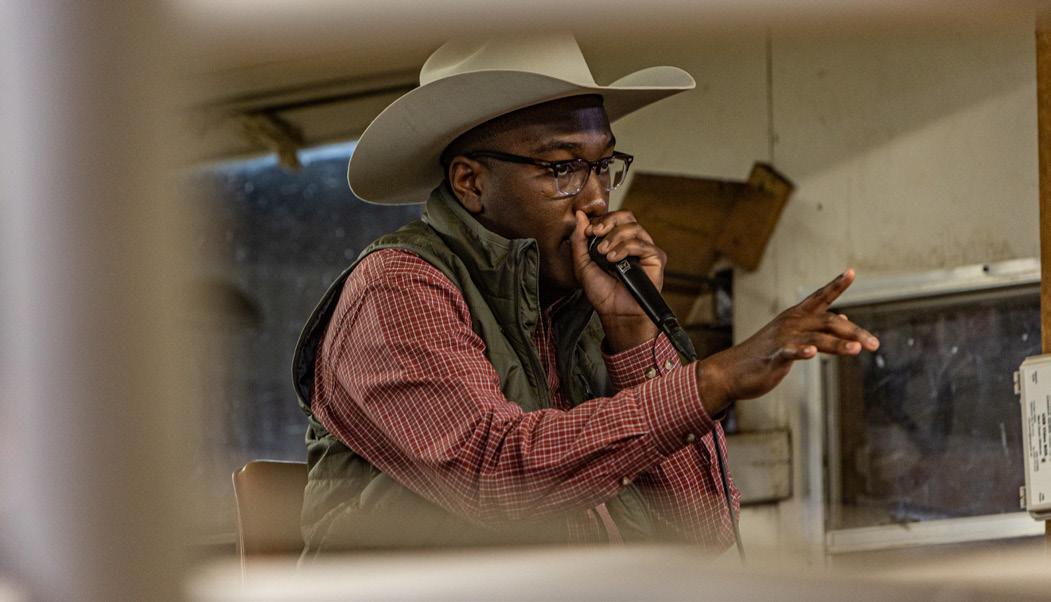
San Antonio, now home to more than 2.4 million people, has squeezed its outskirts toward the sale barn, making for diverse crowds on sale day.
Come Wednesday, sheep and goat buyers file around the ring for the 8:30 a.m. sale, and cattle buyers fill the bleachers at noon. Unlike most other barns, though, buyers represent only part of the audience.
Parents bring their kids to watch sales over spring break for a family outing. Nearby attractions like the world-famous Wurstfest in New Braunfels draw German travelers, who come to Texas and want to see a local livestock auction. For many, it’s a rare firsthand look at an unfamiliar lifestyle.
“The rural lifestyle is good for people, and I wish more had the opportunity to figure that out,” Luensmann says, who appreciates sharing his heritage with visitors.
Urbanization has also changed the nature of who consigns at the barn. Lots of “mom and pop” buyers source animals from Seguin Cattle Co. — many grow animals on a small scale to sell locally-sourced beef to restaurants.

“You see all these new restaurants popping up offering locally grown beef,” Luensmann describes. “The whole process of the beef industry is changing because of the want and the need of farm-raised meat.”
In the early ’80s, it was typical to sell 300 hogs and five goats a week. Now, approximately 500 to 1,000 sheep and goats sell every week.
The weekly cattle average is 400 to 600 head — and during dry years, it is common for that average to jump to 1,000 head. Hogs and horses are things of the past.
Cattle sold go to all parts of the country, while some stay close and end up as a grass-fed steak at a restaurant in San Antonio, Austin or Houston.
Wireless Loadbars



system

“The buyers stand behind us, we stand behind them, and it’s just a good combination,” Luensmann says.
“We have local, independently owned ranches, growers, feeders. Then we have some of the biggest buying companies down here in South Central Texas, that when they pull in the orders it’s as many as they can gather. And the cattle here, they go everywhere. When you have that quality of cattle, your options are open to your buyers.”
The people at Seguin Cattle Co. pride themselves in bringing top dollar for marketers and fair competition for buyers. Luensmann says, “Seguin Cattle Co. is honest people, honest employees, and we work for our customers. When the market’s bad, I feel the pain of every marketer.”
It was rough for sellers in recent years. Mother Nature dealt its cards, pushing producers in most of the western U.S. to liquidate because of drought. Simultaneously, the world was waiting to see how the pandemic unfolded.
Luensmann reflects that time was one of the worst hardships the barn has experienced. Sales which once drew 100 bystanders fell to only six bidders. In the auction business, every extra buyer makes a difference.
“When people come to market their livestock, I take a personal interest in it because if the market goes down, people could be losing $50 a head, $100 a head,” he says. “People rely on us to market their animals, and if I can help them make an extra $50, I did my job in this world.”
Luensmann’s passion for this livelihood developed when he was a kid working as an alley hand in the back holding pens. After college, when some empty shoes were ready to be filled, he resumed his role behind the scenes, then slowly began working in the office and learning to manage the market. Like Luensmann, most staff find a natural fit at the barn — one of the more recent “new hires” has been employed there for 15 years.
Carrying on the legacy of the livestock auction business is a responsibility the team takes seriously.
“When these cattle come through the ring, everybody has an opportunity to bid on them,” Luensmann says. “That’s what makes competition. That’s what drives the cattle industry.”
And in true Texas fashion, Seguin Cattle Co. stays true to the old ways by persevering through challenges and changes, a sense of duty imparted to everyone who enters.
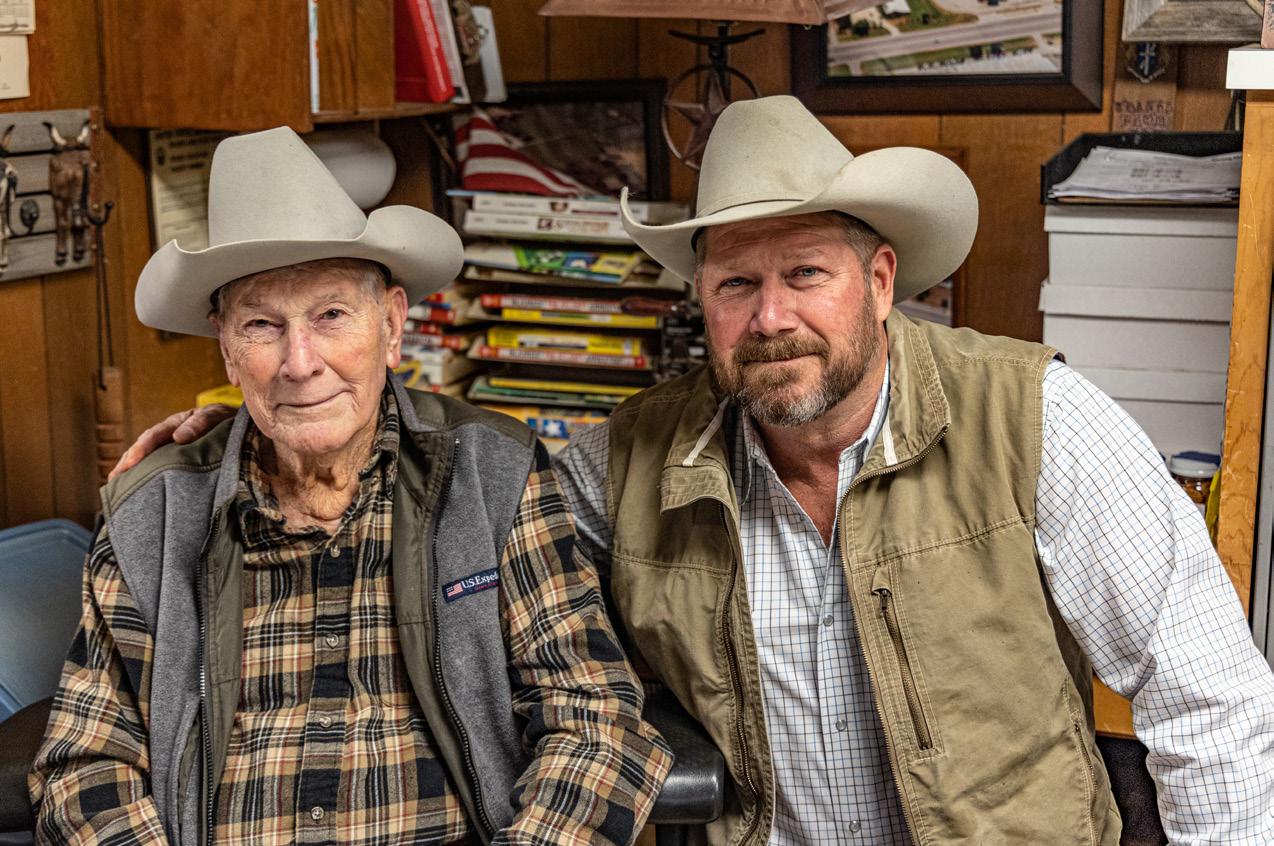
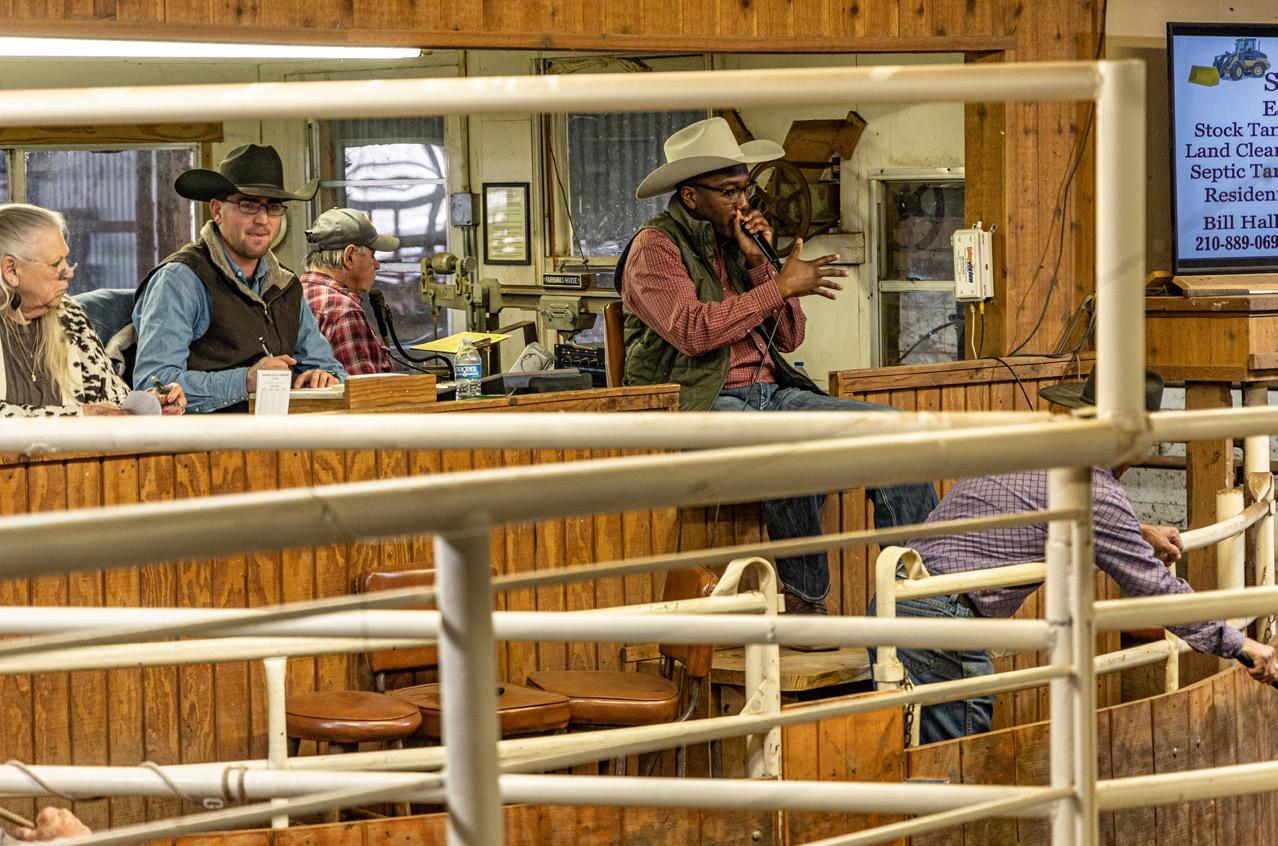
“You have to keep an open mind and just keep marching forward,” Luensmann says. “It’s generation after generation. It’s the improvements that grandpa did, the improvements that dad did, the legacy I’m leaving for my children — that’s what makes me proud.”
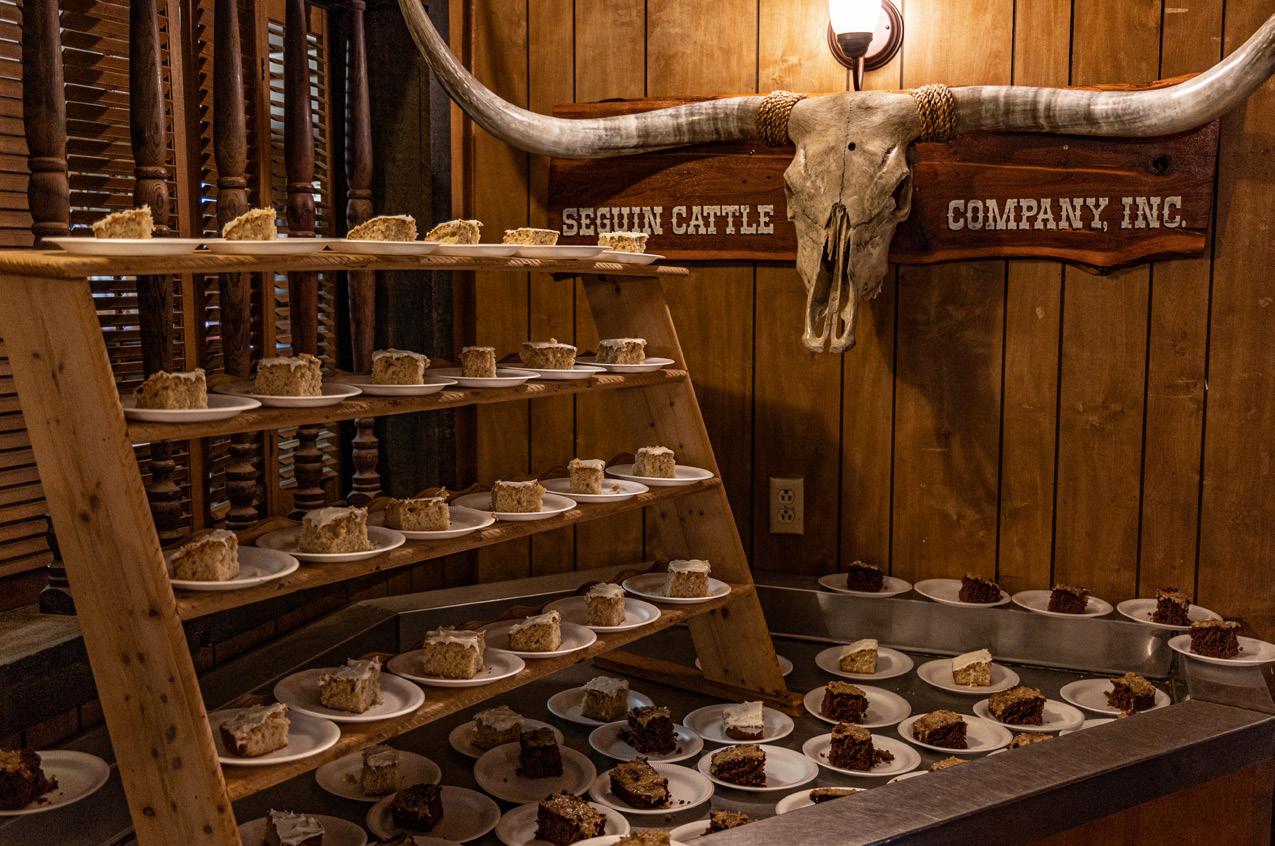
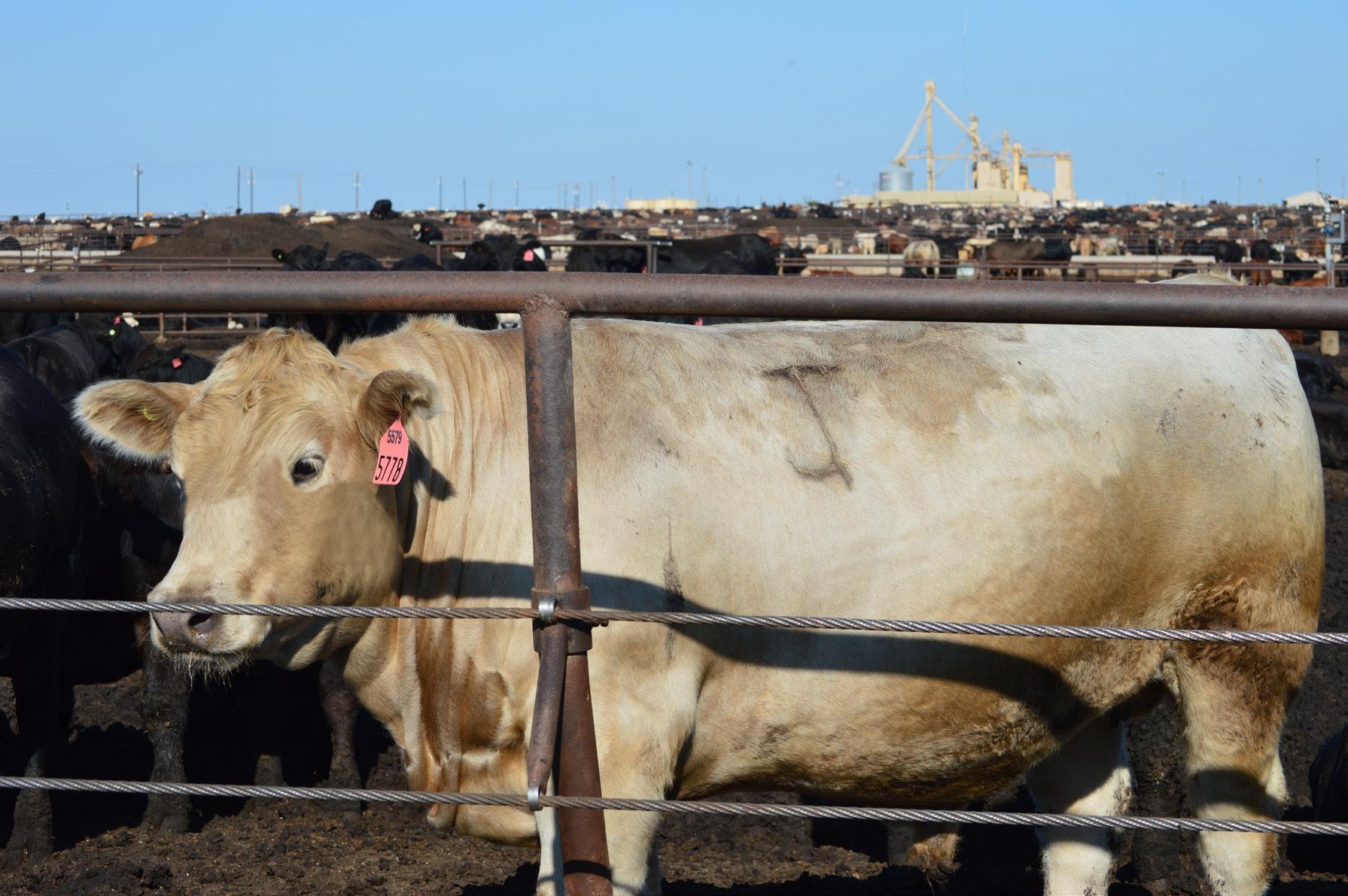






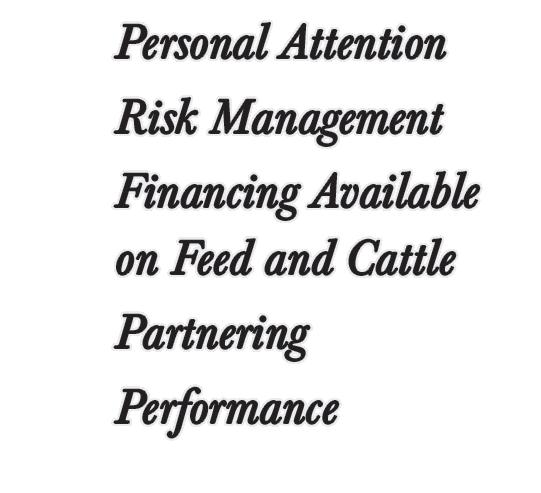

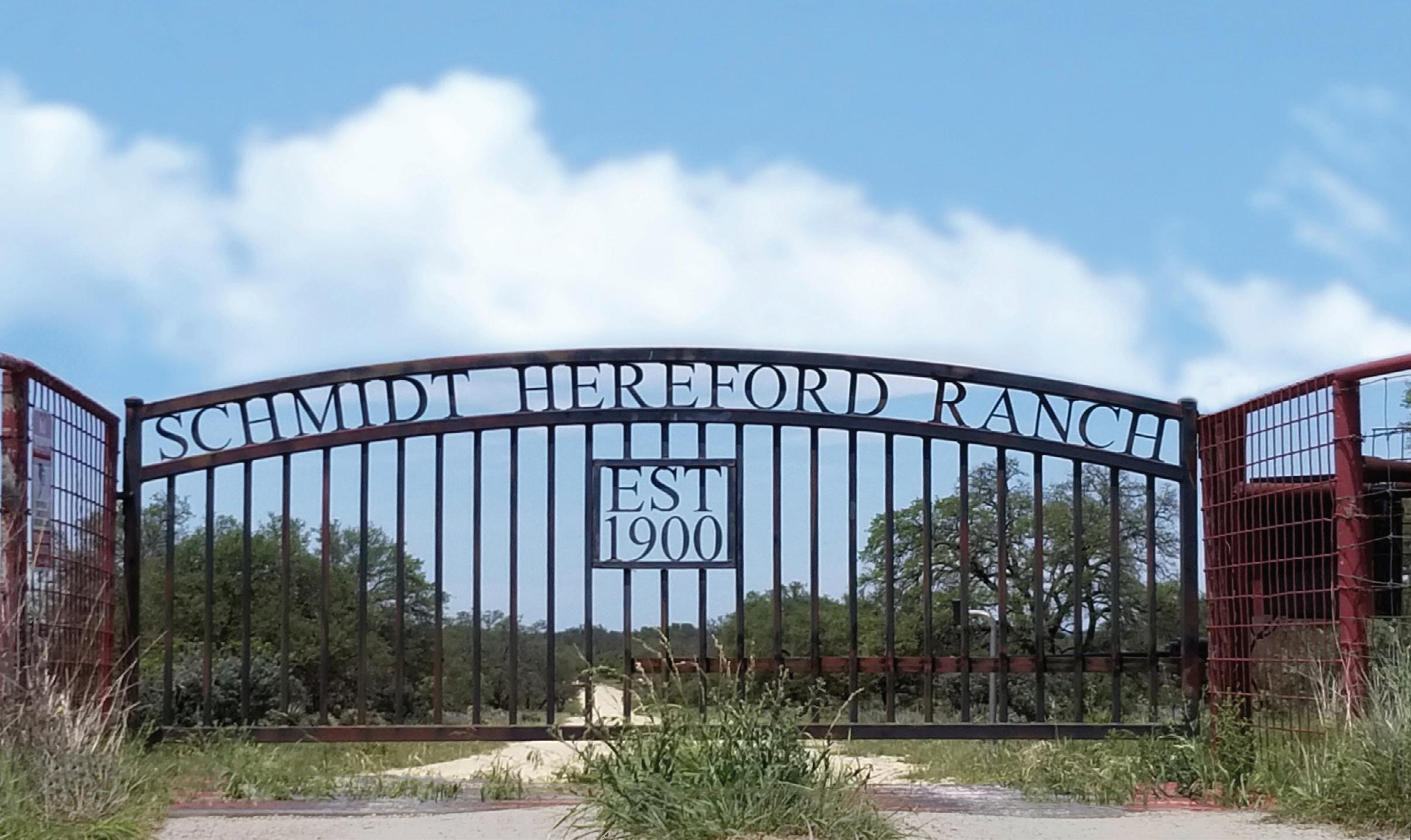
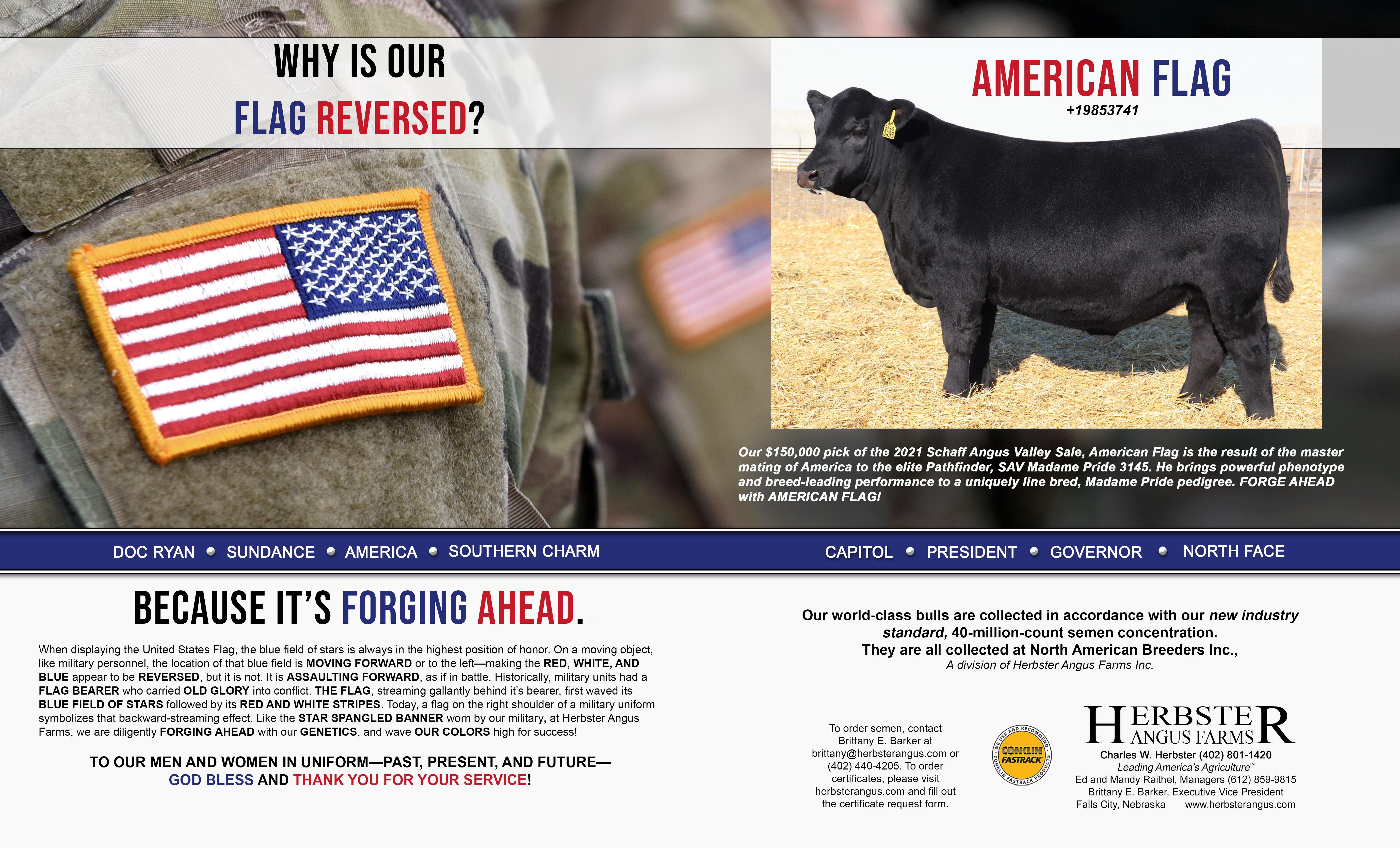

As we celebrate America’s independence, it is a fitting time to recognize one of the institutions vital to preserving our rights and freedoms — the judiciary.
Each year, state and federal courts across the nation hear thousands of cases, not to consider an individual’s guilt or innocence, but to interpret and apply the laws themselves. These court cases examine the laws passed by the legislative branch and regulations enacted by the executive branch.
Ultimately, the courts will decide whether they are constitutional, how they apply to specific cases and resolve questions such as jurisdiction.
Texas & Southwestern Cattle Raisers Association actively participates in this judicial process when cases reach appeal and have consequences beyond the parties involved. Recently, several cases have warranted our involvement, through amicus curiae briefs, because of their potential to impact cattle producers in Texas and across the country.
Happily, cattle producers can notch two significant victories with recent Texas Supreme Court rulings.
In a May 20 ruling on Pape Partners v. DRR Family Properties, the Texas Supreme Court reaffirmed a longstanding precedent on how Texans’ water rights are protected. A lower court ruled that the Texas Commission on Environmental Quality had exclusive jurisdiction to decide disputes over water rights. The Texas Supreme Court overturned the decision, maintaining the courts are the proper venue, not a state agency.
This victory ensures consistency and clarity for Texas cattle producers who rely on water ownership as an integral part of their ranching operations.
The Texas Supreme Court delivered another major ruling on Hlavinka v. HSC Pipeline a week later. Avid magazine readers will likely remember this case from past
articles in The Cattleman and recall Hlavinka was initially blocked from testifying on the value of his own property.
Fortunately, the Supreme Court found he should have been able to testify to the value of his property and privately negotiated pipeline easement transactions are admissible as evidence of market value in condemnation proceedings.
The ruling was a tremendous victory for landowners. Pipeline companies often use the threat of condemnation to drive down land acquisition costs, but now, they will no longer be able to ignore comparable, privately negotiated sales.
Another landmark case on eminent domain, Miles v. Texas Central, is still awaiting a ruling from the Texas Supreme Court. At stake is whether the proposed high-speed rail project from Houston to Dallas will be able to utilize condemnation authority to acquire the land they want. The Supreme Court heard arguments for that case in January, and we are anxiously awaiting their opinion.
Finally, at the federal level, we expect a decision next year on the case of Sackett v. EPA . This U.S. Supreme Court ruling will clarify the Environmental Protection Agency’s authority under the Clean Water Act and have broad implications for federal efforts to define what water features they can regulate.
It is certain more cases will arise affecting your ability to raise cattle and preserve land for the next generation.
Texas & Southwestern Cattle Raisers Association will continue to fight for you in the courts, but regardless of individual wins and losses, I am proud to live in a nation with an independent judiciary, where cases are decided based on fact and law rather than politics.
T C I
Brian McLaughlin is an attorney in Midland. He serves on the Texas & Southwestern Cattle Raisers Association board of directors. Currently, he chairs the association’s property rights and tax committee and legal advisory committee.
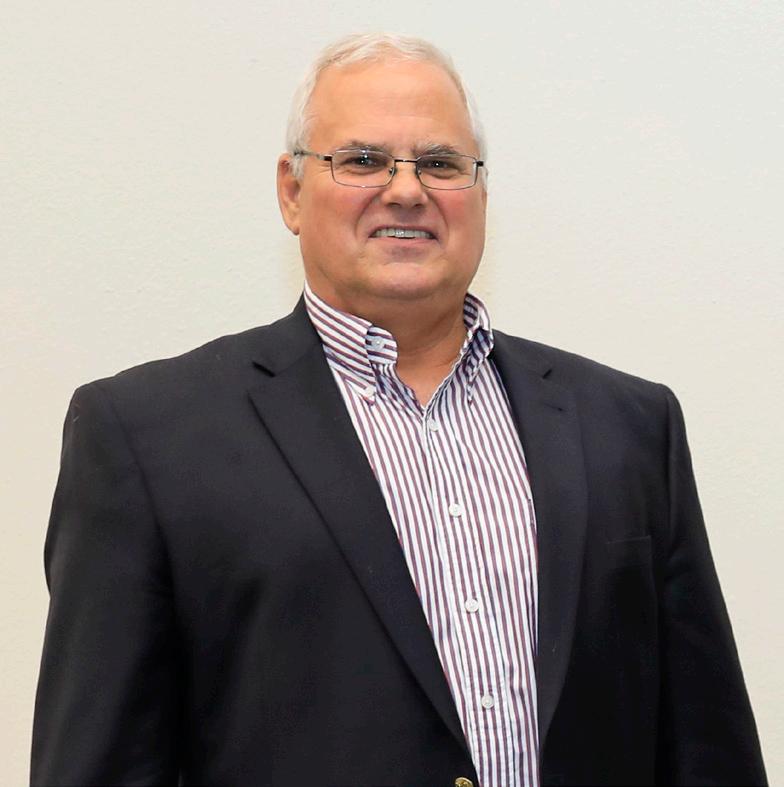
Rep. Charles Anderson, better known as “Doc” because of his 34-year career as a veterinarian, was first elected to the Texas House of Representatives in 2004. He is currently serving his ninth term representing the majority of McLennan County, including Waco.

During his time in office, Anderson has been a staunch advocate for cattle producers and rural communities across the state.
For eight of his nine terms in the Texas House, he served as vice chairman of the committee on agriculture and livestock, a position he still holds today. For the one remaining term, Anderson was vice chairman of the committee on energy resources. He is also chairman of the Texas Legislative Rural Caucus, a bipartisan group of lawmakers who provide valuable insight to the entire legislature on issues impacting rural Texans.
During the most recent 2021 Texas Legislative Session, Anderson authored H.B. 3853 to allow electric companies to use their existing fiber optic cables to extend broadband service to internet service providers. He worked with all parties involved to expand vital broadband access in rural communities, while safeguarding equally vital private property rights.
Rep. Charles “Doc” AndersonHe also sponsored S.B. 634, which protects participants in the Texas State Soil and Water Conservation Board’s Carrizo Cane eradication program by making their identities confidential. Previously, that information was public record and could be exploited by cartels.
Thanks to the hard work of Anderson and his staff, cattle producers and landowners gained important ground during the last legislative session. T C I
Summer weather can damage available forage and bring swarms of insects to your livestock. Protect them against depleted forage and insect-borne illnesses with Ragland’s Fly Control and nutritional supplements.


Protect your livestock with this palatable extruded block which prevents the emergence of flies from the manure of treated cattle and horses.
Encourages proper cycling, high conception rates and strong milk production in breeding stock.
Prevents adult horn fly emergence from manure, with 4% Phosphorus and other minerals.
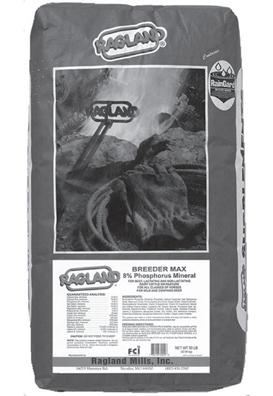
Trusted for generations, our blocks deliver safe, effective fly protection for beef cattle, dairy herds, and horses on pasture.

For a complete list of trusted products visit raglandmills.com, or call 888-549-8014 for your nearest Ragland dealer.
Our exclusive Raingard ® formula delivers superior moisture resistance for minimal clumping, sustained palatability and less waste.
Connect with fellow cattle raisers at an upcoming ranch gathering.

Texas & Southwestern Cattle Raisers Association looks forward to hosting members as they socialize, network and learn at events this summer and fall.
A list of dates and locations follows.
Sept. 12-14, San Antonio
July 7, Hondo, South Texas Maize
July 21, Wichita Falls, Midwestern State University
Aug. 9, George West, Katzfey Ranches
Aug. 11, Crockett, Stalwart Ranch Barn
Aug. 18, Winnie, The Lodge at Pipkin Ranch
Aug. 23, Decatur, National Roper’s Supply
Sept. 15, Canton, Silver Spur Resort
Sept. 20, Waco, Texas Ranger Hall of Fame & Museum
Oct. 4, San Angelo, First Financial Pavilion
Oct. 11, Throckmorton, R.A. Brown Ranch
Oct. 18, Fredericksburg, Vista Oaks Event Center
Oct. 19, Houston, Houston Polo Club
Nov. 15, San Antonio, The Buckhorn Saloon & Museum
Nov. 17, Brenham, South Texas Tack
Look for more information in the TSCRA Update, on tscra.org or on the association’s social media platforms. If you have questions about these or any other events, call 800-242-7820, ext. 1745, or email events@tscra.org. T C

Preliminary estimates from devastating Texas wildfires are $23.1 million, which includes fence repair costs. Photo by Kay Ledbetter, Texas A&M AgriLife Communications.

Texas wildfires that ravaged the Eastland Complex, parts of the Panhandle and Coryell County regions encompassing 433,000 acres have resulted in $23.1 million in preliminary agricultural loss estimates, according to Texas A&M AgriLife Extension Service economists.
The losses include more than 400 livestock deaths, lost grazing values and fence repair costs. Dry, windy conditions throughout the winter season and into early spring heightened the fire danger threat.
The preliminary estimates were calculated beginning with the early March fires and running through the end of April. AgriLife Extension economists say the preliminary loss estimates could climb higher due to ongoing fire threats.
During a seven-day span in late March, state, federal and local fire resources responded to 192 wildfires that burned 173,559 acres. More than 300 Texas A&M Forest Service firefighters and more than 200 Texas Intrastate Fire Mutual Aid System firefighters, along with firefighting personnel from 28 states, were positioned across the state to respond.
The USDA’s Farm Service Agency has approved lowinterest physical loss loans to help producers repair or replace damaged or destroyed qualifying physical property. To confirm eligibility and access application information, contact your local USDA Service Center.
The U.S. Small Business Administration approved Gov. Greg Abbott’s request for a disaster declaration in communities affected by the Eastland Complex Fire, unlocking access to multiple loan programs. Applicants may apply for loans, receive additional disaster assistance information, and download applications online.
Texans affected by wildfires are encouraged to submit property damage at damage.tdem.texas.gov to help officials identify resource needs and determine the state’s eligibility for additional disaster assistance.
The U.S. Meat Export Federation recently hosted its spring conference in San Antonio. The three-day meeting examined a number of key issues for U.S. exporters, while also updating members on promotional activities for U.S. beef in a wide range of international markets.
One of the event’s general sessions focused on agricultural trade relations between the U.S. and China, including a deep dive into the market access gains achieved for U.S. beef through the 2020 Phase One Trade and Economic Agreement.
Guest panelist for the session was former Iowa Gov. Terry Branstad, who had a front-row seat for the tumultuous negotiations leading to the agreement, as he was serving as U.S. Ambassador to China under the Trump administration. Branstad was joined on the panel by Joel Haggard, U.S. Meat Export Federation senior vice president for the Asia Pacific, who is based in Hong Kong.
Offering a glimpse inside the talks, Branstad admitted early concerns about efforts to engage China more aggressively on trade.
“My respect for Ambassador (Robert) Lighthizer grew through the process,” Branstad said, referring to the U.S. trade representative at the time. “He was very focused, and worked really hard to build a personal relationship with the chief negotiator on the Chinese side, Liu He, who does have President Xi Jinping’s ear. That was critically important, and it was successful.”
Following adoption of the Phase One pact, Chinese purchases of U.S. agricultural products reached record levels, albeit still short of the targets outlined in the agreement. Now, two years after the agreement entered into force, Branstad said Chinese consumers remain committed to U.S. food products because they value the quality and safety.
Haggard noted U.S. producers should not be overly concerned the Phase One purchase targets were not reached. With improved market access, private entities in China made strong increases in their imports of U.S. agricultural goods according to their needs, which Haggard sees as the preferred path to increased trade.
“Would we in the meat sector have wanted Chinese state purchasers to go out and buy products just for the purpose of buying them, and disrupt the market?”
Haggard asked. “That doesn’t serve orderly development of the market.”
Haggard praised the expanded opportunities resulting from the Phase One Agreement, which allowed China to quickly rise to the third largest destination for U.S. beef exports, trailing only South Korea and Japan.
The name “Phase One” implies there is unfinished business to be resolved in a second round of U.S.-China trade talks, but Branstad noted there are significant obstacles to striking up Phase Two negotiations.
“That’s going to be the hardest part because the Chinese government loves to subsidize their state-owned enterprises,” he said. “That’s market-distorting and it’s something we wanted to address, and frankly that’s what didn’t get done in the Phase One agreement. I think it will be difficult to do, and the Biden administration hasn’t really shown any appetite for going after it.”

The Biden administration recently appointed Kelly Adkins as the new state executive director for the USDA Texas Farm Service Agency. Adkins joined the team May 9.
A native of Haskell, Adkins was raised on a small family farm while he attended Haskell High School and later
Texas Tech University where he earned his bachelor of business degree with a minor in agriculture.
Adkins has enjoyed a career serving farmers and ranchers in many capacities, including county executive director in Grimes and Randall counties, and district director for the agency overseeing offices and program delivery for a multi-county area of the Panhandle. He is currently a resident of Canyon, where he is involved in a small farming and cattle operation.
The Texas A&M Department of Animal Science’s new $9.9-million Reproduction and Biotechnology Center has received a $500,000 donation from Merck Animal Health.
The new animal science center, expected to be completed in 2023, will include research labs, educational spaces, animal-handling areas and dedicated research lab space for emerging technologies and practices for academic and industry partner use. The facility will further the department’s pursuit of innovation and collaboration through academic and industrypartnered research, focusing on the latest techniques and hands-on instruction.

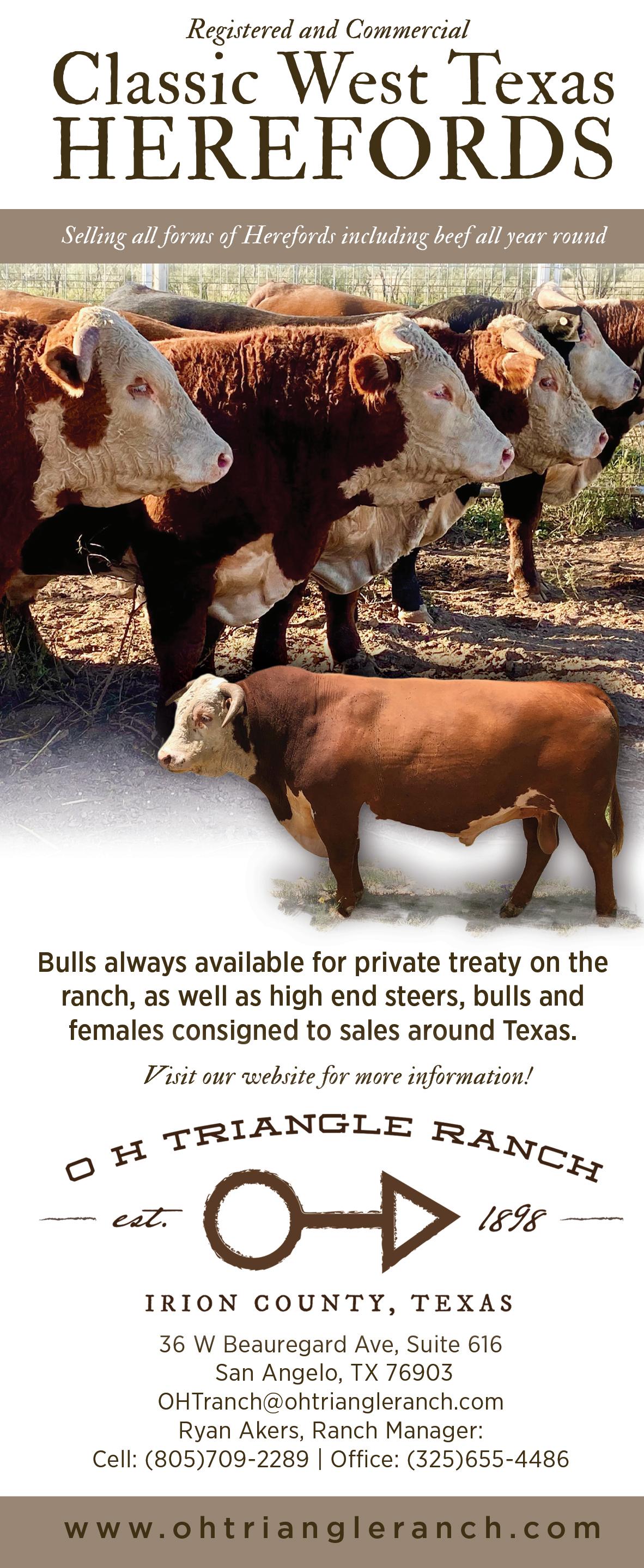
Mark your calendar to attend the July 19 Ranching 101 session.
When it comes to managing a cow herd’s health and performance, it’s important to have a plan. Join two veterinarians Tuesday, July 19, at 1 p.m. for a Ranching 101 session outlining how to create a comprehensive herd health plan for bulls, females and calves.
Interested attendees can scan the QR code to register for the hour-long Zoom webinar.

Expert presenters will be Dr. Pippa Gibbons and Dr. Jennifer Koziol, of Texas Tech University’s School of Veterinary Medicine.
Gibbons is an associate professor of food animal medicine and surgery. She grew up on a mixed crop, beef and sheep farm in England. After completing veterinary school and a food animal internship in the United Kingdom, she moved to Texas and completed a food animal internal medicine residency and master’s program at Texas A&M University. Prior to her current role, she was a clinical assistant professor of food animal science at Texas A&M University and associate professor at Lincoln Memorial University College of Veterinary Medicine. She completed a diploma of veterinary education through the Royal Veterinary College.
Koziol, also an associate professor of food animal medicine and surgery, is a native of Oklahoma where she grew up ranching with her family. She received her bachelor of science in 2009 and doctorate of veterinary medicine in 2012 from Oklahoma State University. After completing an internship, she continued her formal training as a theriogenology resident at Auburn University. Koziol achieved diplomate status in the American College of Theriogenologists in 2015 and a masters of biomedical sciences in 2016. T C

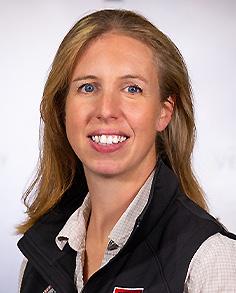
HELEN KLEBERG GROVES, 94, of San Antonio, died May 6.
The only child of Robert Justus Kleberg Jr. and Helen Campbell Kleberg, she was raised on the King Ranch, and went on to graduate from Foxcroft School in Middleburg, Virginia, and attended Vassar College.
Groves had many passions in life, but ranching, fine horses and family were central.

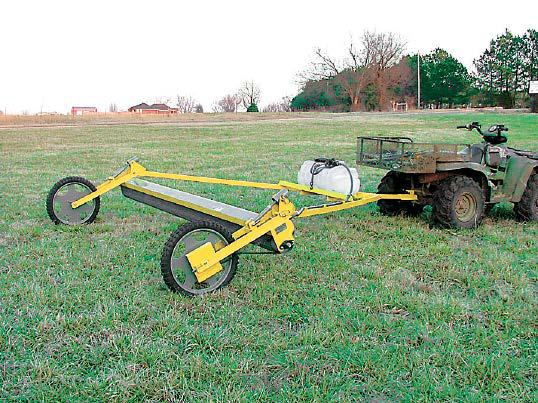
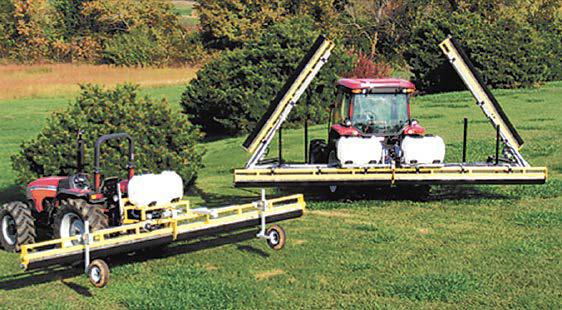
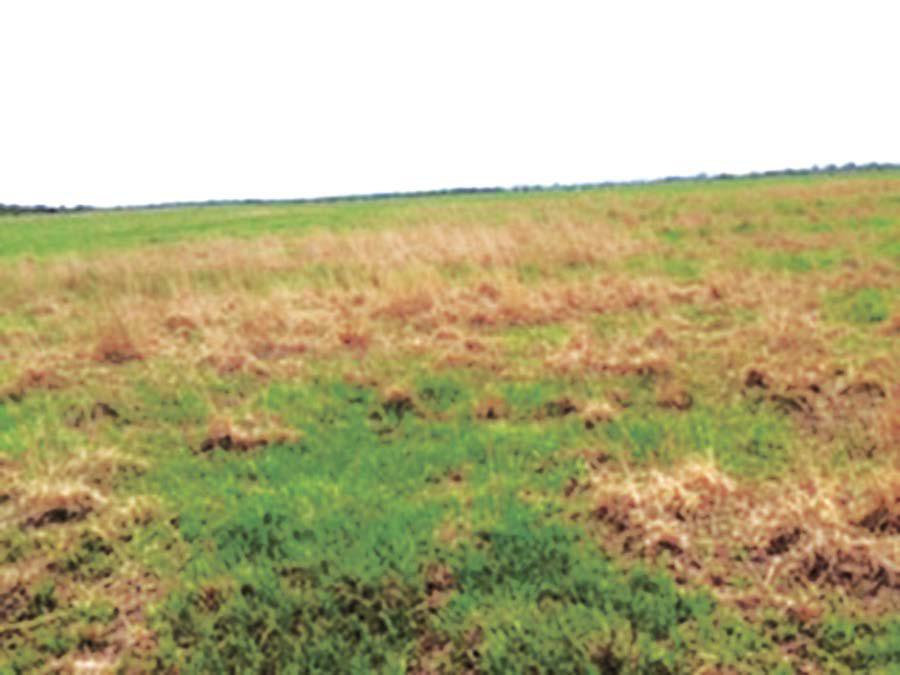
She ranched her entire life, from overseeing King Ranch’s Buck and Doe Run Valley Farms in Chester County, Pennsylvania, to her own Silverbrook Farms in Staunton, Virginia, to Silverbrook Ranches in Texas. She focused on raising the best Santa Gertrudis cattle and Quarter Horses in the country.
Known as the “First Lady of Cutting,” she was inducted into the Cowgirl Hall of Fame in 1998.
Her knowledge and acumen as a rancher, horsewoman, and cattle raiser made her an indispensable member and leader on many boards including serving as an honorary vice president of the Texas & Southwestern Cattle Raisers Association.
She is survived by her six children, Helen C. Alexander, Emory A. Hamilton (Fred), John D. Alexander (Claire), Caroline A. Forgason, Henrietta K. Alexander and Dorothy A. Matz (Michael); and grandchildren, Deaver, Cadell and Robert “Berto” Alexander, Helen H. Cottingham (Charlie), James Forgason, Laird George, and Alex, Lucy, Robert, and Arthur Matz.
Join or renew your membership today.
Member benefits include the support of TSCRA Special Rangers, government relations advocacy, educational programs, networking and social events, member-only discounts, The Cattleman magazine and phone app, and insurance services.
To learn more about membership, scan the code above or visit TSCRA.org.


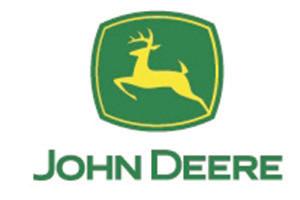



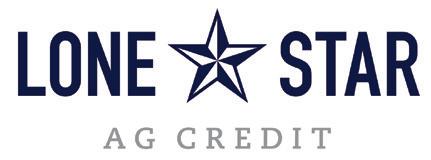




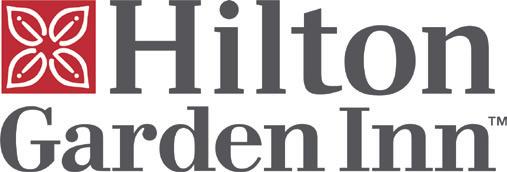

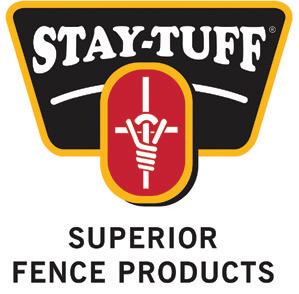
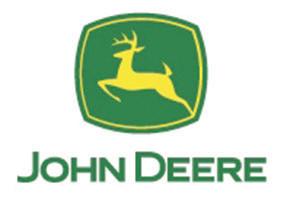


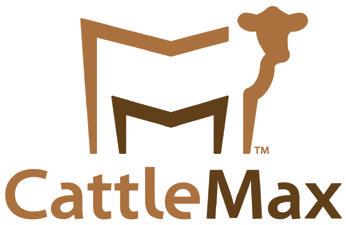


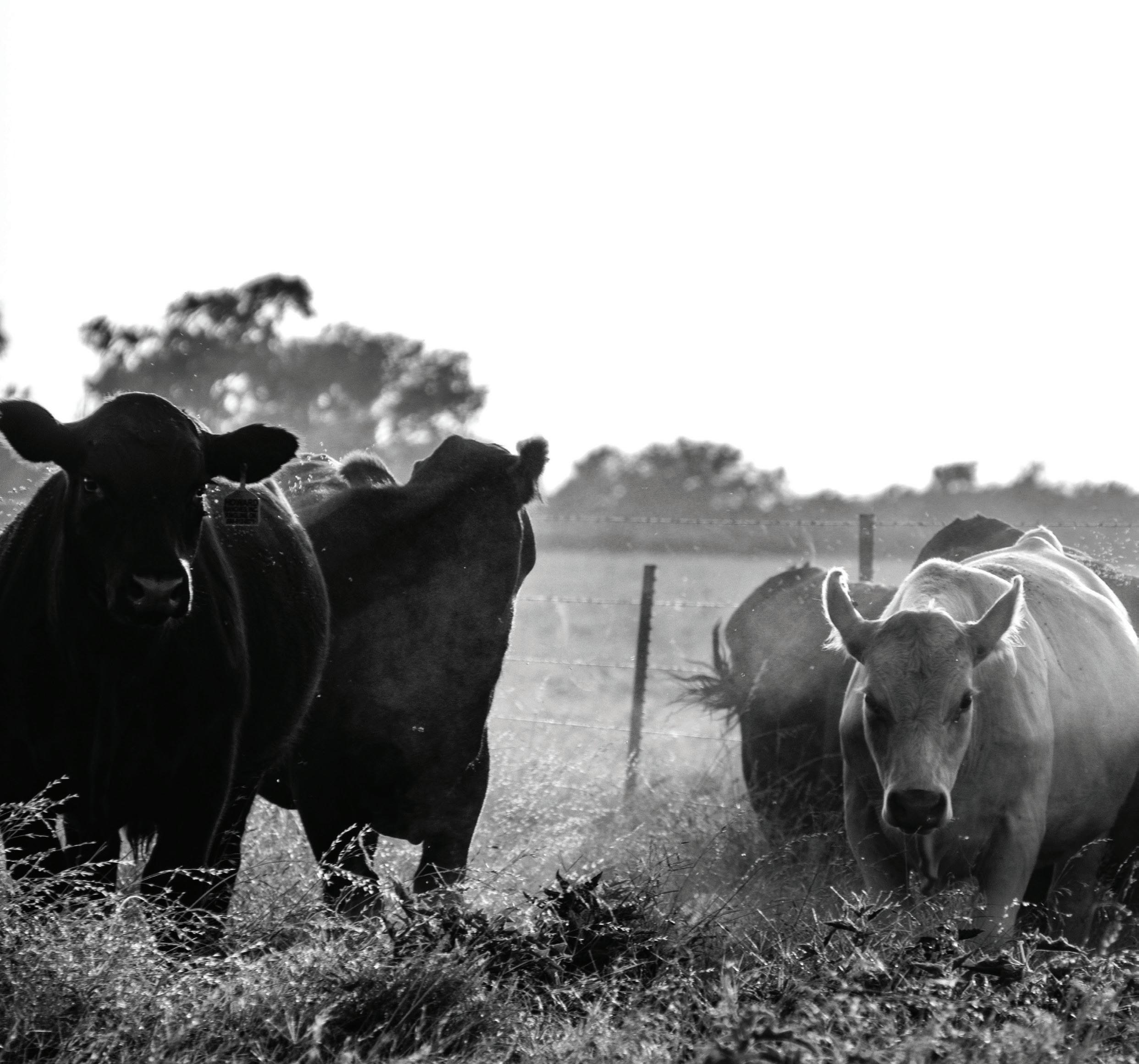
Vince Montes and PACO Feedyard answered the call to assist special rangers with inspecting more than 2,000 head of cattle.
In late December 2021, Texas & Southwestern Cattle Raisers Association Special Rangers Bo Fox, Jay Foster and Ben Eggleston conducted an investigation requiring more than 2,000 head of cattle to be inspected at PACO Feedyard LLC near Friona.

The special rangers contacted PACO Operations Manager Vince Montes, who agreed to meet with them Dec. 31, 2021.

“Feedyards hold tens of thousands of head of cattle,” Fox says. “Inspecting a particular few thousand head out of the large group can be very difficult without the assistance of the feedyard staff.”
Montes and his staff led special rangers to each pen with the cattle in question, and moved the cattle down alleys for easy inspection by the special rangers.
“Montes and his staff went above and beyond to make our jobs as easy as possible,” Fox says. “Their assistance brought a quick resolution to the investigation at hand.”
Leonard Hayden Hargrove sentenced for cattle theft.
Leonard Hayden Hargrove was convicted of larceny of livestock within the District Court of Payne County. The 21-year-old was arrested July 23, 2020, after criminal charges were filed by Texas & Southwestern Cattle Raisers Association Special Ranger Bart Perrier.
Hargrove was reportedly charged with two counts of larceny of livestock from a victim near Yale, Oklahoma. During late winter 2020, the victim, who is a relative of Hargrove, became suspicious Hargrove stole cattle from a familyoperated farm.
Bart Perrier Region 3 Supervisor District 4 Special RangerAccording to Perrier, who conducted the investigation during spring 2022, Hargrove stole several head of cattle from the property and three of the stolen cows belonged to the victim who reported Hargrove. The cattle were branded and ear tagged identifying them as belonging to the victim. Hargrove sold the cattle at a livestock market in Purcell, Oklahoma, Feb. 1, 2020.
On April 4, 2022, Hargrove pled guilty in the Payne County District Court, was sentenced to a six-year deferred sentence and ordered to pay a total of $5,500 in restitution to the victim. The defendant was also ordered to pay a $500 fine, along with assorted court costs, and complete 80 hours of community service with a nonprofit or 50 hours with a CLEAN program.
“This case is a reminder of the importance of branding cattle for positive identification,” Perrier said.
Texas & Southwestern Cattle Raisers Association Special Rangers present Vince Montes, pictured center, with a custom TSCRA sign and a certificate of appreciation for all his hard work and dedication. Pictured left is Special Ranger Chris Ward, right is Special Ranger Jay Foster.
During the initial interview with Hargrove, Perrier stated: “I knew the three cows in question belonged to the victim, because they were branded on the right hip with his brand and each cow had an ear tag in their ear with his name and telephone number on it.”
C
T

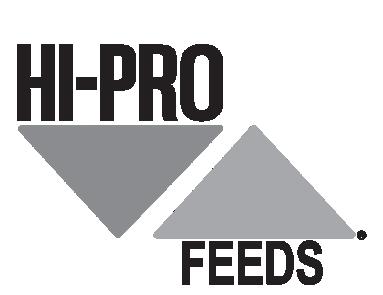


Cattle missing near Oldham County.
Texas & Southwestern Cattle Raisers Association

Special Ranger Chris Ward reports five cattle missing. Last seen April 22, the missing cattle include one redand-white Longhorn, one tiger-striped Longhorn and a mostly white Longhorn. Ward also reports a 3-year-old Corriente cow and a 1-year-old Corriente steer missing. The cattle all have a three-leaf clover brand on the right hip. Anyone with information on this case is urged to contact Ward at 806-205-0119.
Cattle missing near Lefors.
Texas & Southwestern Cattle Raisers Association Special Ranger Ben Eggleston reports four black cows missing in Grey County. Last seen Jan. 30, the missing cattle have a rocking H brand on their left hip and are notched in the tip of their right ear. They all have a white number tag in their left ear. Anyone with information on this case is urged to contact Eggleston at 888-830-2333.
Two heifer calves missing in Hughes County.
Texas & Southwestern Cattle Raisers Association Special Ranger Bart Perrier reports two crossbred heifer calves missing near Lamar, Oklahoma. The calves were last seen May 1 and weigh approximately 350 pounds. A red-brown heifer calf with cream-colored legs is tagged with No. 117. A cream-colored, long-haired heifer calf is tagged with No. 76.
Heifer calves missing in Osage County.
Perrier also reports two Angus-heifer calves missing near Barnsdall, Oklahoma. The seven-week-old heifers were last seen May 5 along County Road 2487 near the Wynona Shortcut. They weigh approximately 150 to 175 pounds, and are not branded. One heifer has an orange No. 2 tag in the left ear, and the second heifer is tagged with No. 3.
Cattle missing near Marlow.
The special ranger also reports a group of missing black Angus heifers. Last seen April 21, the cattle are approximately 700 to 800 pounds, with a rocking D brand on the left hip. Anyone with information on these cases is urged to contact Perrier at 918-440-8360.
Cattle missing near Roth, Oklahoma.
Texas & Southwestern Cattle Raisers Association Special Ranger John P. Bradshaw reports a group of cattle missing. Last seen March 26, the missing cattle include one 9-year-old Hereford bull weighing 2,400 to 2,500 pounds, with unknown tattoos in his ears; and two Hereford calves weighing 400 to 500 pounds with no marks or brands. Anyone with information on this case is urged to contact Bradshaw at 903-389-6123.
Tractor, sprayer and trailer stolen near Lindale.
Texas & Southwestern Cattle Raisers Association Special Ranger Larry Hand reports a John Deere tractor, a Rozell-brand spray rig and a utility trailer missing. The 2020 John Deere 5055E cab tractor has a loader and bucket attached. The missing sprayer is a three-point hook up, 200-gallon boomless sprayer with a white tank and black frame. The Coker Enterprises utility trailer is a brown, 20-foot bumperpull trailer with a license plate number of GBS-F13. The equipment was last seen April 22. Anyone with information on this case is urged to contact Hand at 903-592-5252.
Cattle missing near Hamilton.
Texas & Southwestern Cattle Raisers Association Special Ranger Marvin Wills reports seven black Wagyu cows, one black bald-faced cow and five calves missing. The cattle were last seen April 28. Anyone with information on this case is urged to contact Wills at 254-223-2330.

Cattle missing near Llano.
Texas & Southwestern Cattle Raisers Association Special Ranger Kenny Murchison reports a heavy-bred, black Angus cow missing in Llano County. Last seen May 1, the missing cow is 10 to 12 years old. Anyone with information on this case is urged to contact Murchison at 512-705-3226.
Longhorn bull missing in Burleson County.
Texas & Southwestern Cattle Raisers Association Special Ranger Brent Mast reports a 12-year-old Longhorn bull missing. The black-and-white spotted bull has been missing since April 3. He is branded on the right leg with “Paint Brush D.” Anyone with information on this case is urged to contact Mast at 936-714-6619.
Cattle missing near Cedar Lane.
Texas & Southwestern Cattle Raisers Association Special Ranger David Marcaurele reports 45 crossbred cows missing. The cattle are various colors with an XX brand on their left rib. The cattle were last seen March 25 and reported missing April 26. Anyone with information on this case is urged to contact Marcaurele at 979-332-8755.
Cattle missing near Wrightsboro.
Texas & Southwestern Cattle Raisers Association



Special Ranger Robert Fields reports three Braford cows and three black calves missing. Last seen Feb. 25, the cows are either tiger-striped or chocolate in color, with JS branded on their right hip and yellownumbered ear tags in their left ear. The calves weigh 500 to 600 pounds, also with yellow-numbered ear tags in their left ear. Anyone with information on this case is urged to contact Fields at 361-207-5207. T C
TSCRA offers a cash reward for information leading to the arrest and/or grand jury indictment of individuals for theft of livestock or related property. Anonymity is guaranteed. To provide information, call the Operation Cow Thief tip line at 817-916-1775.
A Texas & Southwestern Cattle Raisers Association
Special Ranger for 14 years, Marvin Wills has stood alongside cattle raisers on some of their most challenging days. It’s never a call you want to receive when a theft or crime has occurred, but the association’s commissioned peace officers are there to investigate and serve ranchers and landowners.

Wills was a recent guest on the TSCRA Talk podcast, sharing memorable cases he’s experienced through the years. He also shared his advice and tips for protecting yourself, your land and livestock.
It starts with being cautious, and realizing new methods of buying and selling make it easy to pull off a scam. Wills said the special rangers are seeing an increased number of people purchasing livestock or equipment online, paying for it and never receiving anything in return.
In those types of cases, Wills said it is extremely hard to trace back to the suspect and victims typically do not recover any of their lost funds. A few precautionary steps can help ranchers and landowners protect themselves.
have them branded in order to locate them. He recalled a case where several cattle were stolen, and the special rangers were able to quickly identify and recover all the cattle because of the brands.
When it comes to equipment, Wills said a few photos could be one of the most important tools should the property ever go missing.
“Take a photo of the VIN number, plate numbers or serial number,” Wills suggested. “If the property is ever stolen, those numbers can immediately be entered into the law enforcement’s system and help us locate the property much easier.”
Marvin Wills TSCRA Special Ranger District 15In the unfortunate event that property is stolen, whether it is livestock or equipment, Wills said the first step should be to call the local sheriff’s office. Then, follow up with the special rangers. Wills recommended having all the important information together before you call, so law enforcement and special rangers will have all the details.
“My tip is to talk to the seller on the phone, meet with them and go see the merchandise in person,” Wills said. “If it’s not possible to meet or see what is being bought in person, I recommend waiting to pay for anything until after it is received or write a check for it, so it can be tracked in case something goes wrong.”
Beyond the virtual marketplace, another strategy to reduce risk on the ranch is a somewhat simple one — get to know your neighbors.
Wills said one of the first questions a special ranger will ask if livestock can’t be found is if the owner has talked to their neighbors. It’s important for ranchers to know who is around their property and have their phone numbers handy in case of suspicious activity.
Also, be sure your animals are branded. If any of your livestock do go missing, Wills said it is imperative to
“You need to know the last time the property was seen and be able to describe any identifying factors in as much detail as possible,” he said.
Wills couldn’t stress enough how important it is for ranchers to be vigilant and keep up with their property.
And remember: The special rangers are always available to be a resource, answer questions and offer advice on protecting your livestock and property.
“We’re here to serve the producers,” Wills said. “We are always glad to visit with people or answer questions.”
To hear more of the conversation, download TSCRA Talk via Apple Podcasts, Google Podcasts, Spotify or Stitcher. For more information or to locate the special ranger in your area, visit tscra.org.
Chrissy Fly is a freelance writer and graduate student at Oklahoma State University.
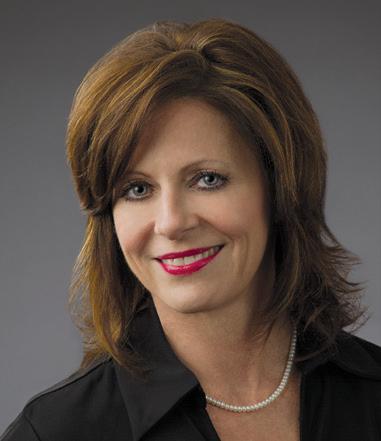

 Ortega
Ortega
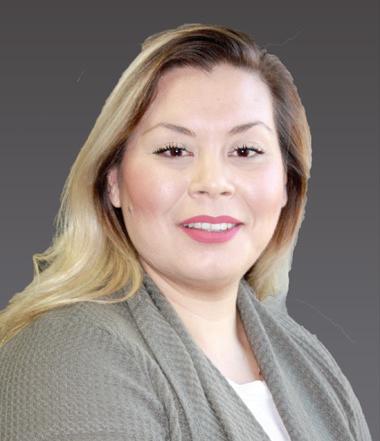
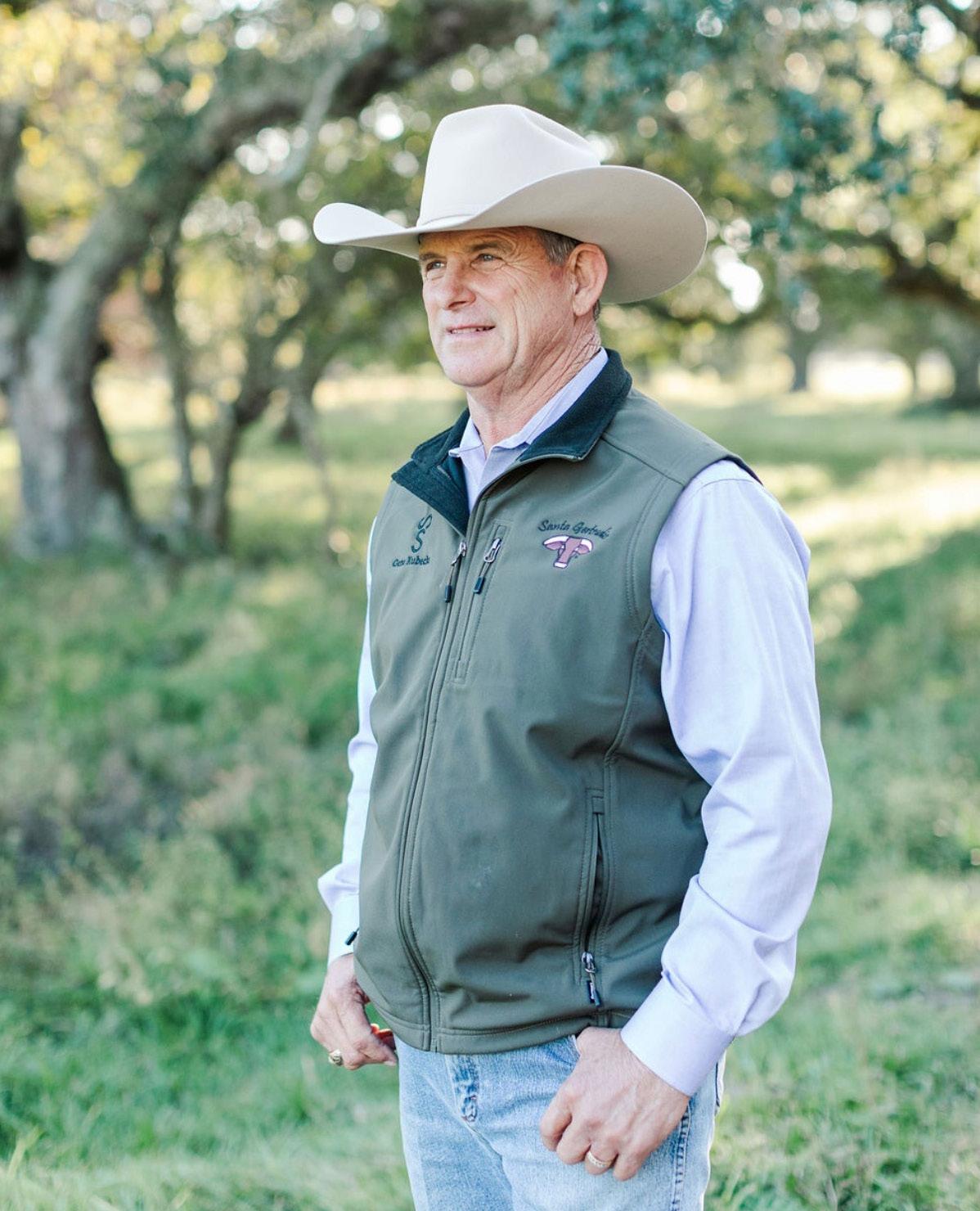 By Hannah Gill
By Hannah Gill
For Gene Kubecka, the Santa Gertrudis breed coincides directly with his relationship with his wife, Nancy, which started in 1970.
At the time, there were no cell phones, just party lines, so when you were interested in somebody, you had to get involved in an activity together to get to know them better. Though the two met through 4-H, Kubecka says he knew if he was going to be with Nancy, he had to take a liking to the red cattle her family was raising.
Kubecka, a Texas & Southwestern Cattle Raisers Association member, had come from a farming and commercial cattle operation, but his first experience with purebred cattle was a Santa Gertrudis steer he purchased from Nancy’s family, with which he won the showmanship class at the local county fair. It was a couple years later, after a Santa Gertrudis steer he raised won a purebred steer show that Nancy or her sister usually won, that Kubecka says he finally got his foot in the door with his future wife.
The rest is history.
After their wedding in 1978, the couple started their own Santa Gertrudis herd. Their children, Daniel and Jenna, who represent the fourth generation of Santa Gertrudis breeders in the family, followed suit in raising and promoting the breed. Gene and Nancy with Daniel and his wife, Lauren, eventually purchased Nancy’s parents’ herd, forming Wendt Ranches Partners LLC. The fifth generation of Kubeckas are raising and showing Santa Gertrudis cattle, as well.
Though the breed did help his young love interest, Kubecka says it became clear early on Santa Gertrudis cattle had a special place in his future. He says they appealed to him because of their true American origins, ability to adapt to many different climate areas, and ability to cross well with both American and European cattle.
The breed has adapted and evolved in the past 50 years Kubecka has been involved, including downsizing their size to become more efficient, cleaning up underlines and udders, improving
soundness and overall quality, and breeding for more docile dispositions. The value of the breed’s hybrid vigor has maintained.
“The heterosis derived from these crosses is second to none,” Kubecka says. “These red cattle can grow hair in colder climates or maintain short hair in warmer climates and remain productive and profitable.”
Thanks to the internet and online meetings, Kubecka sees more opportunities for the association’s committees to be more active and productive than ever before.
He has worked on a number of committees within the association to improve the cattle’s standings, not only in the breed but in the cattle industry as a whole.
He was a founding member of the Mid-Coast Junior Association and served in various capacities with the Mid-Coast Super Sale. He served as co-chairman of two National Santa Gertrudis Junior Heifer Shows; chairman of Santa Gertrudis Breeders International foreign marketing committee and performance committee; vice president of marketing and promotion; and two stints on the organization’s board of directors.
His time spent serving the association and its members, combined with his producer experience, gives Kubecka a clear idea of where he would like to see the association go in
“I’m very adamant that if we want to be a viable breed and association, we must whole-herd report,” he says. “In order for our breed to maintain its relevancy in the beef industry, we have to know what our genetics are doing, what they are capable of doing, and we have to get that into the commercial industry. We can sell cattle among ourselves, but we’ve got to expand what our cattle can do in the commercial industry.”
Crossbreeding is where commercial Santa Gertrudis cattle shine, Kubecka says, and he hopes the breed can move forward, without discrimination, toward the American Red and the Super American crosses.
“I think there’s room for both,” he says. “Let’s make our cattle more relevant to the commercial industry, and if that takes crossbreeding, let’s do that because the industry as a whole is changing so much.”
Another way Kubecka hopes to help the breed be more visible to commercial cattlemen is by making sure the breed chooses the best genomic platform moving forward, something he anticipates being a topic during the organization’s annual meeting.
“We need to be comparing our genetics to competing breeds out there,” Kubecka says. “For us to know what our genetics are capable of doing, we have to continue to track our cattle all the way from birth to the rail. We’ve got to scan our cattle and know what our cattle genetically bring to the table and what they can pass on, or what a commercial operator will gain by using Santa Gertrudis genetics.”
During his time as president, Kubecka hopes to encourage the Santa Gertrudis Breeders International Board to stay focused on serving the membership and helping them achieve more profitable cattle operations. He hopes he can encourage members to take advantage of all the performance-enhancing opportunities that the association offers.
“It’s imperative as a purebred association that our purebred genetics continue to be the foundation of our breed and we do not lose sight of its importance,” Kubecka says. “My goal is to be a very visible president, participating in as many breeder activities as possible and to be a familiar face to the beef cattle industry and its activities.”
T C

With areas of the region experiencing extended drought conditions, many groundwater sources are drying up. This can force cattle to consume water from sources they would normally avoid.

Cattle can only survive a few days without water, and addressing their needs is a complex process depending on water quality, weather patterns, time of day, feed moisture content, and factors such as bodyweight and stage of production. Water and feed intake are closely related, so water shortages will impact productivity not only because of the water requirements, but also because of decreased consumption of other nutrients.
For example, cattle in the Southeastern U.S. were provided unrestricted access to water, then had a 48-hour water restriction before shipment to a Texas Panhandle feedyard, or had alternating 24-hour periods of water restriction over seven days prior to shipment. Dehydration increased short-term measures of stress after transport and performance was reduced during the initial two weeks at the feedyard in water-restricted calves.
This research shows relatively short periods of water restriction, common in livestock marketing channels, can have impacts beyond the time of the restriction. Common water quality issues for cattle include fecal and bacterial contamination, nitrates, hardness, salinity, and total dissolved solids — including salt, calcium, magnesium, phosphates, silica and sulfates.
Cattle consuming water with salt or total dissolved solids greater than 10,000 parts per million have reduced
growth and increased water consumption, so urinary output could increase in order to expel the increased total salt intake. It is recommended nitrites in livestock water be limited to less than 33 ppm, nitrates less than 45 ppm, sulfates less than 300 ppm, and total dissolved solids less than 1,000 ppm. But livestock can often withstand higher levels of contamination, depending on other factors.
To achieve these guidelines, all water sources should be sampled and analyzed for nitrates, sulfates and total dissolved solids; recognize blending water from multiple sources may reduce potential quality issues; avoid stacking risks of sulfur and nitrate by sampling and analyzing forages and byproduct feeds.
Peak water demands by heavy cattle near finish during the summer can exceed 20 gallons per day the majority of which is consumed between 5 a.m. and 9 p.m. A 550-pound grazing calf consumes up to 12 gallons per day, but this occurs in a much more limited time due to grazing patterns and distance traveled to water.
It is important to not only consider average water consumption over a season when developing water resources and planning watering systems, but also to consider drinking behavior, timing of water consumption and maximum daily water needs.

T C
Paul Beck is an associate professor and Extension beef nutrition specialist for Oklahoma State University.
In key locations across Texas, Oklahoma and New Mexico, Helena has branches staffed with people who can provide landowners, ranchers and wildlife enthusiasts with all their management needs.
For more information, contact your local Helena representative or visit HelenaAgri.com.
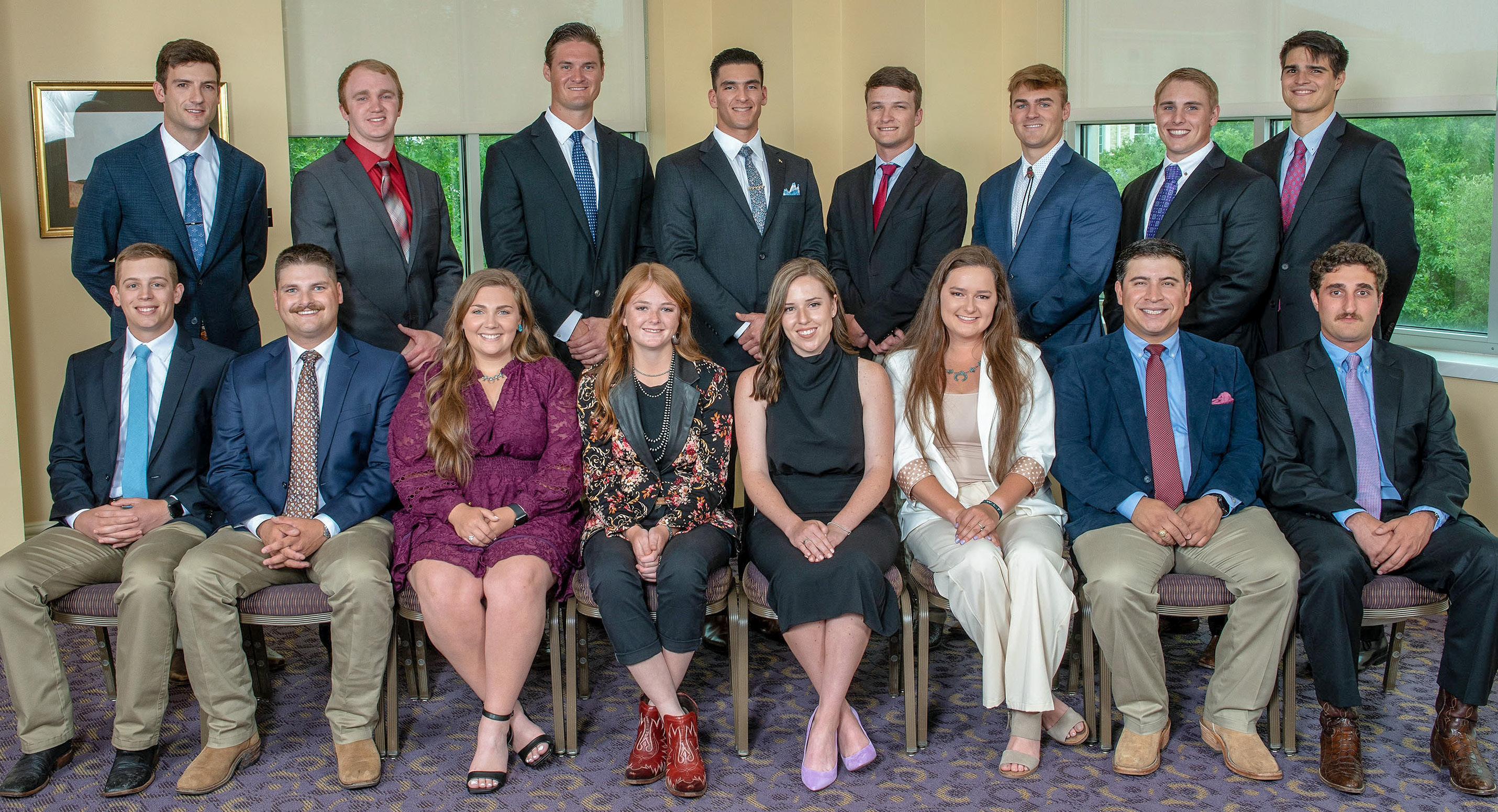
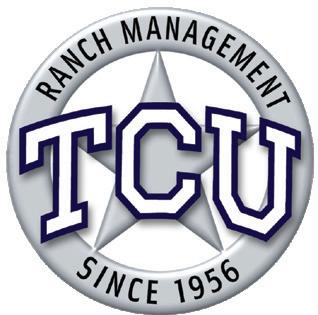

American Beautyberry (Callicarpa americana)
 By Kent Ferguson
Photo by Sally and Andy Wasowski, Lady Bird Johnson Wildflower Center
By Kent Ferguson
Photo by Sally and Andy Wasowski, Lady Bird Johnson Wildflower Center
American Beautyberry is a native, warm-season, perennial shrub found in most areas of the state, except the western regions. It’s also known as French mulberry, Sourbush, Turkey berry, Spanish mulberry and several other localized names.
The American Beautyberry:
• Can grow more than 10 feet tall, but 4 to 6 feet is most common.
• Is a multi-branched shrub with gray to reddish twigs. The stems can be round or square shaped, characteristic of the Verbenaceae plant family.
• Has simple leaves that are opposite, oval or elliptic with saw-toothed margins. They are 2 to 5 inches wide, 3 to 9 inches long, and dark green on the upper surface. On the lower surface, leaves are pale, rough textured with star-shaped hairs.
• Will have pinkish-white flowers growing from the leaf axils, staking in clusters up the stem.
Will form bright violet or purple fruit from the flowers’ clusters, encircling the stem.
American Beautyberry is a palatable plant for browsing animals, and the seed is eaten by turkey, deer, quail, most songbirds and small mammals. It can be eliminated from the landscape by overgrazing. Rotational grazing and proper stocking rates should be in place to ensure the plant’s survival.
The American Beautyberry can be cultivated by cuttings and is gaining popularity in home landscapes. T C
Kent Ferguson, a retired rangeland management specialist from the USDA Natural Resources Conservation Service, provides plant identification photo stories to help ranchers.


August 31,
October 26,
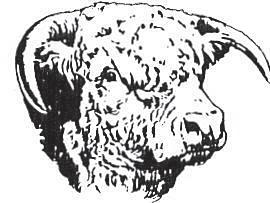
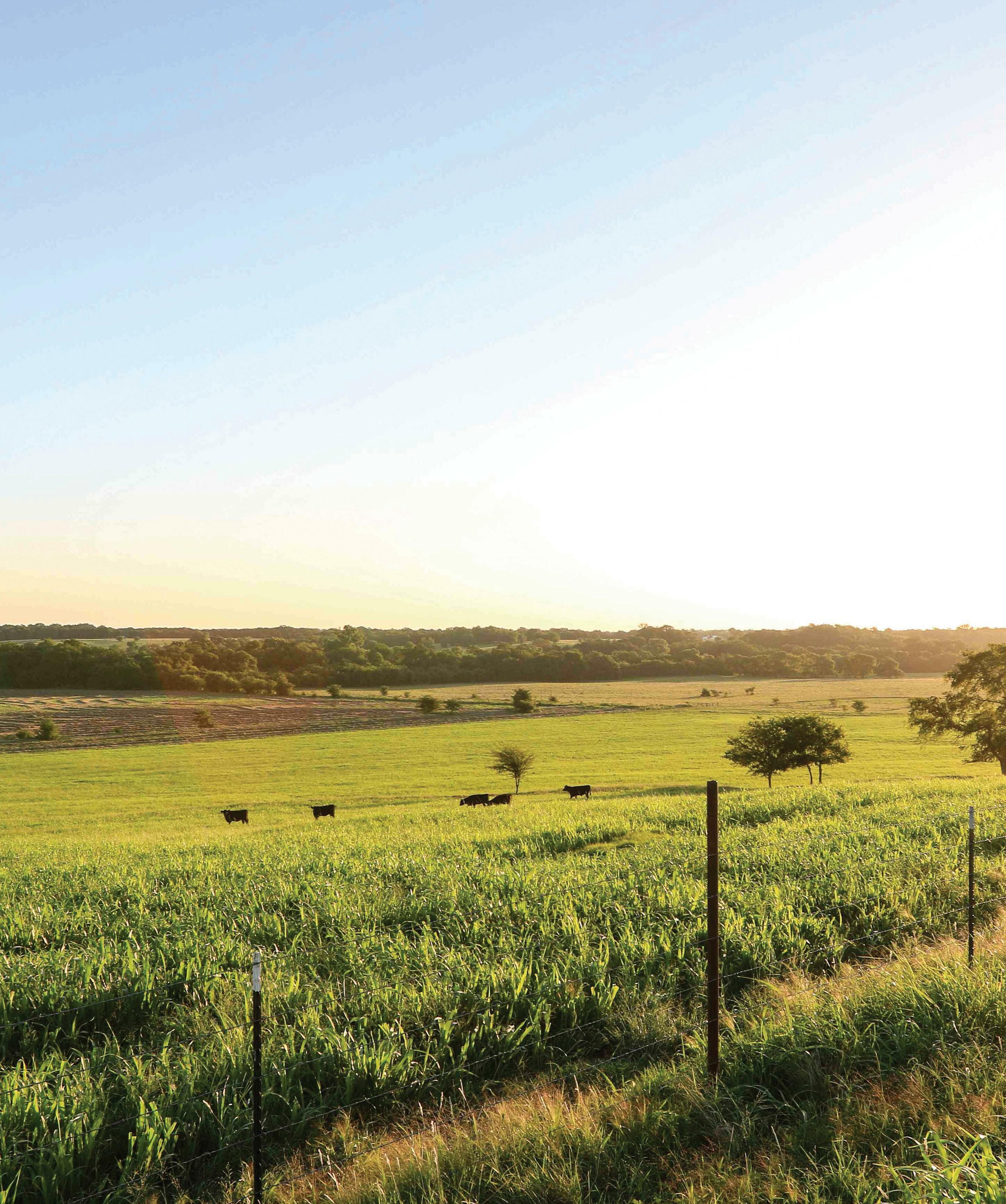
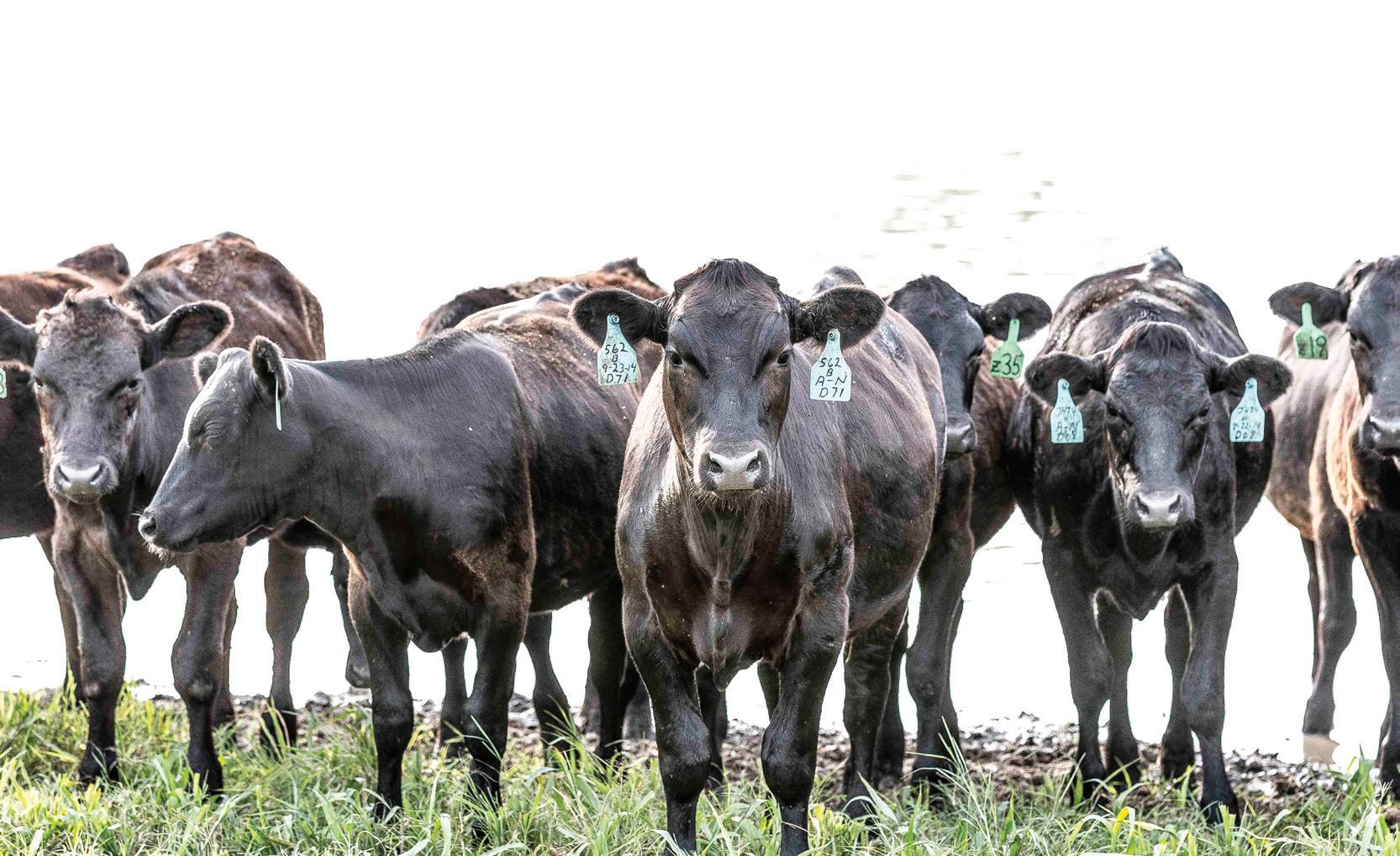

Especially in the summer months, horn flies create challenges for both cattle welfare and your bottom line.


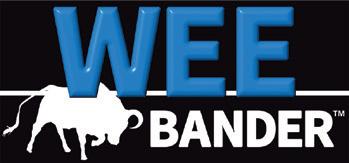
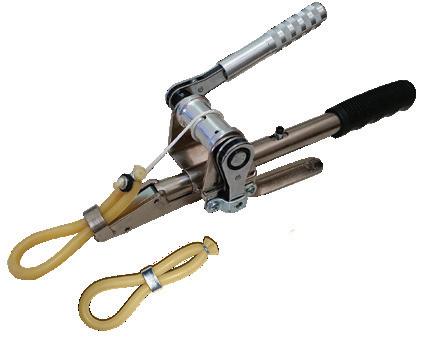
When looking for a solution to combat horn flies, look for this ingredient: piperonyl butoxide. It’s a synergist included in some pyrethroid formulations that inhibits the breakdown of the active ingredient, improving the effectiveness of the product.
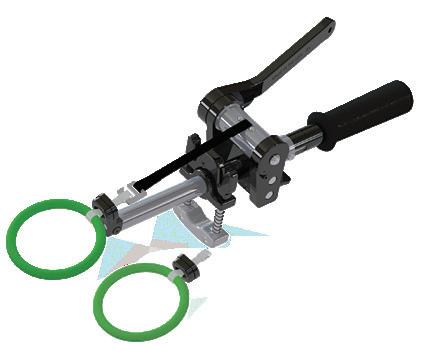
Consider selecting pour-on pyrethroid products that contain piperonyl butoxide for improved fly control. If included, piperonyl butoxide will be listed on the label.
If a pyrethroid is used in a spray or rub, consider adding piperonyl butoxide to the mix.

Searching for piperonyl butoxide online will result in a few product options, so make sure the product label states it can be used on livestock.

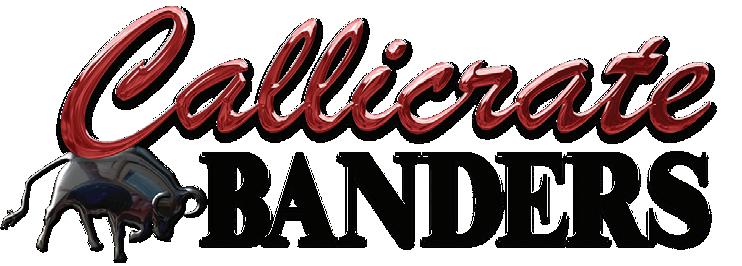
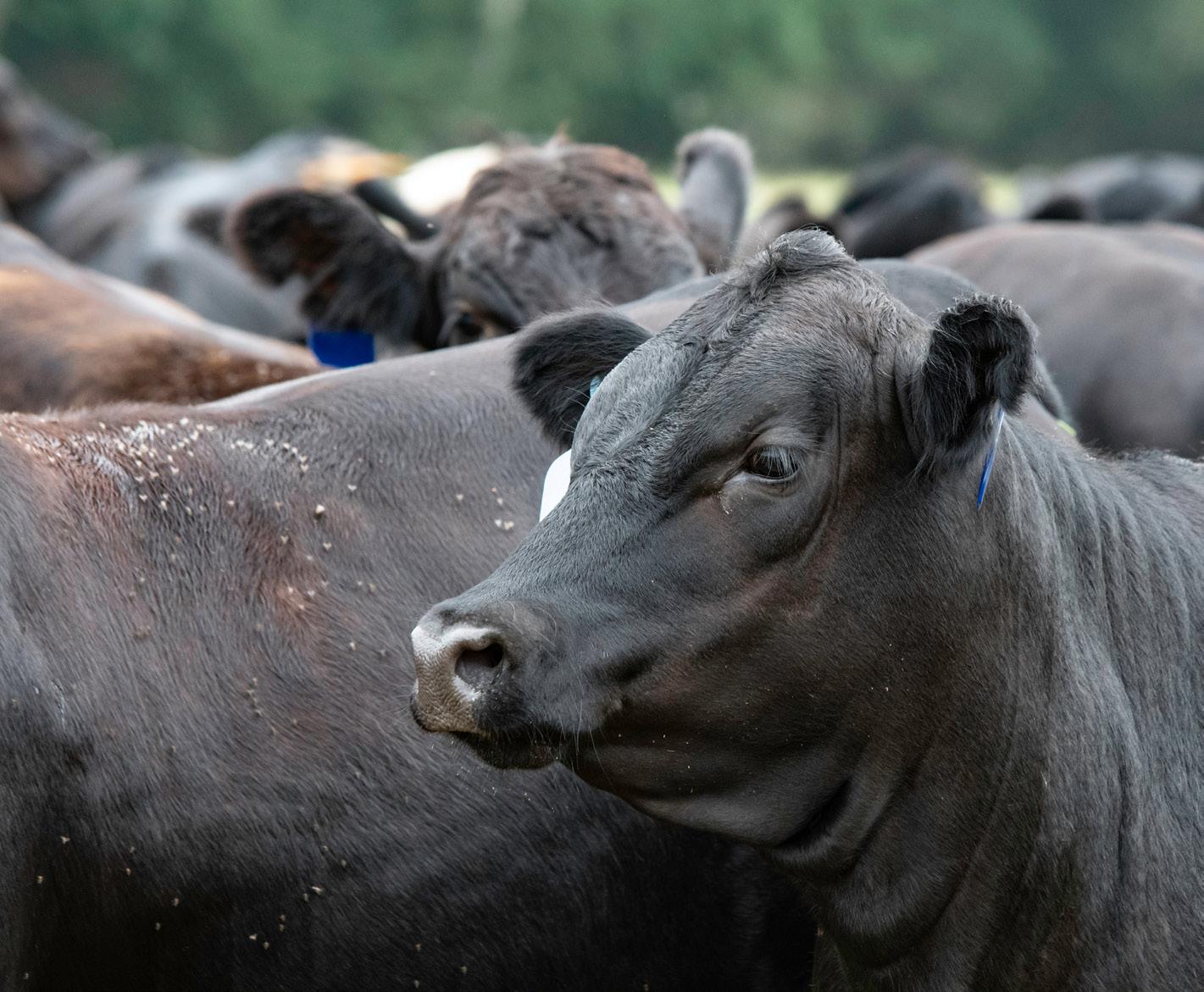





You’re a provider. A defender. You do what’s right, and trust others to do the same. That’s the Texas way. In 2021, your dollars drove consumers to discover unique beef recipes on BeefLovingTexans.com more than 1.4 million times an increase of 28% from 2020 inspiring all ages to savor beef done the Texas way.














Sign up for the Cattle Talk newsletter at TexasBeefCheckoff.com to stay up to date on how your Beef Checkoff dollars are used to keep beef in its strongest state.






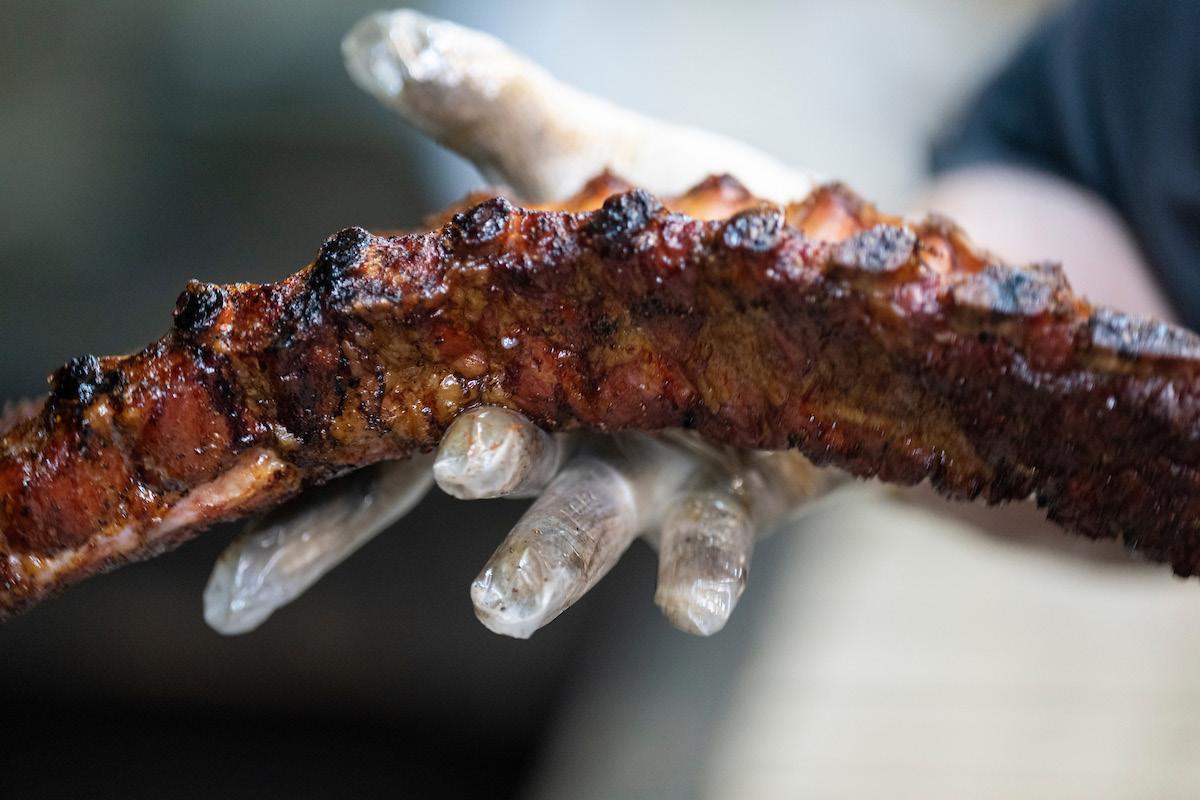
Texas A&M AgriLife elevates the barbecue industry through meat science teaching, research and outreach.
By Adam Russell Photos courtesy of Texas A&M AgriLifeA.s a proud third-generation pitmaster, Bryan Bracewell has a passion for Texas barbecue steeped in tradition. Bracewell is the current owner of his family’s business, Southside Market and Barbecue, serving the residents of Elgin since 1882.
This passion led him to become a student in Texas A&M University’s College of Agriculture and Life Sciences. As a freshman, he knew his enrollment would teach him even more about meat and its’ best preparation.
“Like any small-town family business, you do things as they’ve always been done and barbecue was no different for me,” Bracewell said. “However, I knew there were things I did not know, and I knew my end goal was to improve our product, and ultimately the experience for our customers.”
The knowledge he gained in the classrooms and labs — combined with his experience as a meat judging team member and Rosenthal Meat Science and Technology Center student employee — all translated into better products for his family’s business. But he didn’t stop at undergraduate classes, he credited much of his current success as a pitmaster to his attendance and participation in the meat science courses and programming occurring after he received his Aggie ring.
“All the time I spent at Rosenthal attending the Barbecue Summer Camps and Camp Brisket while being around other pitmasters and participating in the panel discussions had a layering effect,” he said. “I learn something new every time.”
Top photo: Bryan Bracewell is a third-generation owner and pitmaster at Southside Market and Barbecue in Elgin.

For more than a decade, the meat science program within the department of animal science has provided educational programs and platforms where barbecue enthusiasts and established restaurateurs, like Bracewell, learn proven, science-backed barbecue methods identified by meat scientists in Texas A&M AgriLife Research and vetted by top pitmasters.
These programs, which translate the most up-to-date meat science and research, have helped brisket, ribs and other Texas-style barbecue enter a new culinary stratum and what Texas Monthly dubbed the “golden age of Texas barbecue.”
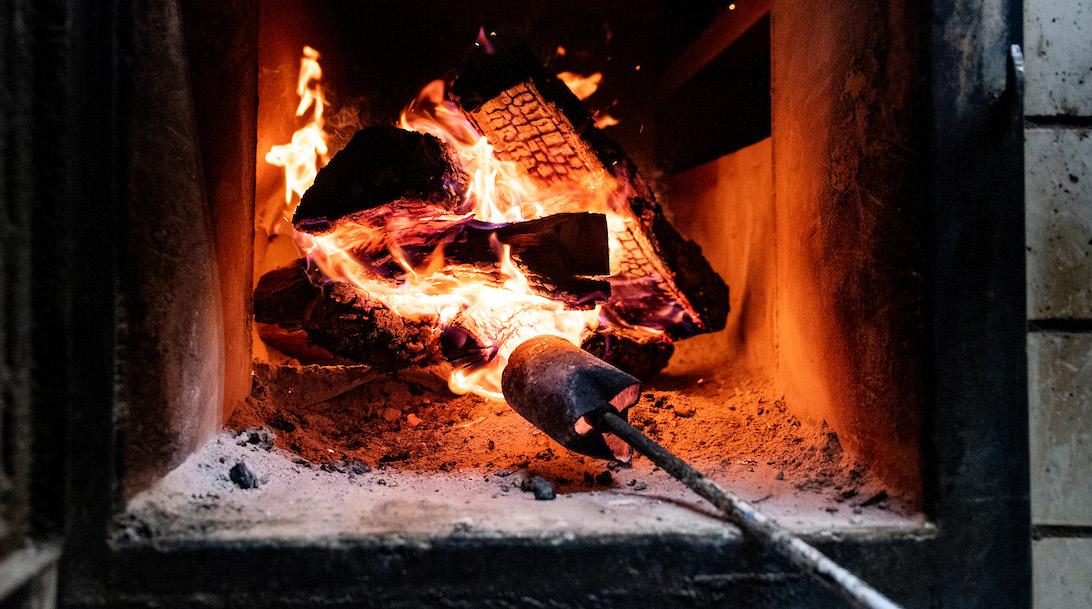
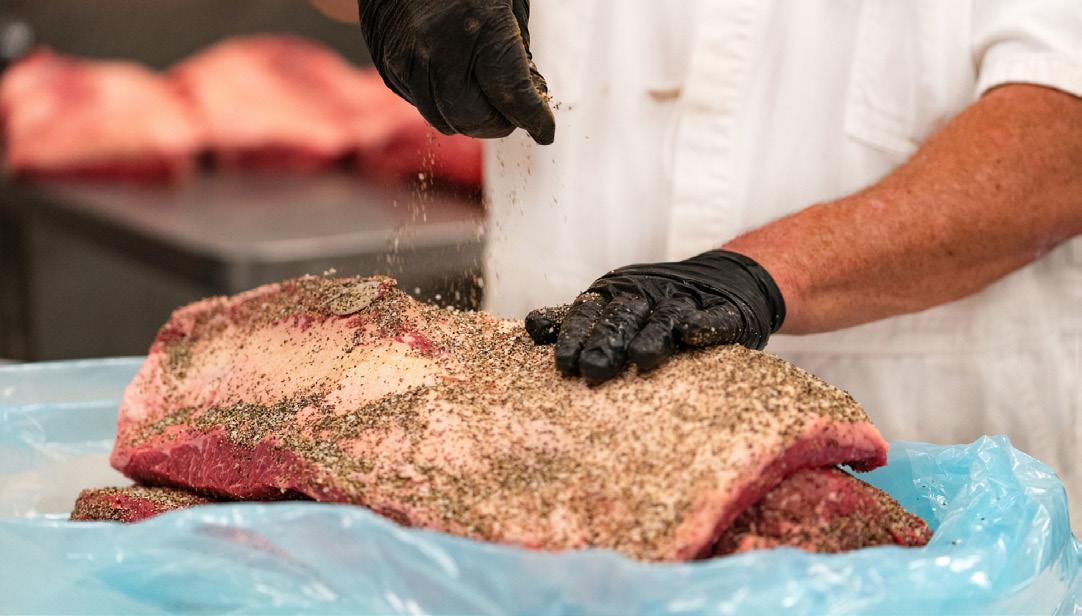
However, Davey Griffin, Ph.D., a professor in the department of animal science and Texas A&M AgriLife Extension meat specialist at Bryan-College Station, said it was a slow and low-key journey for Texas barbecue to become a destination-dining experience.
To understand the evolution, Griffin said, people need to first understand the cuts of meat utilized, including briskets and short ribs in cattle. Before the barbecue boom, these cuts were low-value relative to the carcass makeup.
Ribeye steaks and beef tenderloins for filets were the most tender and preferred for sear-and-serve dining. Other cuts like the chuck and brisket were tough and typically cubed or ground up to be used in other dishes.
Slow-and-low Texas barbecue was born within meat markets by butchers who prepared these undervalued cuts in ways to create consumer demand, Griffin said.
William Moon, the original owner and operator of Southside Market and Barbeque in Elgin, is an example of this origin story. In 1882, Moon raised and processed cattle and swine before refrigeration was available, so he began selling smoked sausage and barbecue to reduce spoilage.
“It was one of those ‘necessity is the mother of invention’ situations where these butchers needed to add value to these cuts,” Griffin said. “They found that with time and the right temperature, you could make an incredibly tender serving. Then other businesses put their own spin on the process and end product.”
Over the past several decades, Texas pitmasters used wood, smoke and spices to enhance flavors and do-ityourself pit designs to provide hours of consistent low heat to turn tough briskets into tender, savory offerings. Bracewell believes the rapid explosion in Texas barbecue was led by the knowledge and science shared during meat science programs.
“Texas Monthly put Texas barbecue in the spotlight with its Top 50 list, but they didn’t get into how it was done well,” Bracewell said. “The meat science programs really connected the dots on the art of good barbecue, what pitmasters were doing and why. Their goal wasn’t to have carbon copies of already successful pitmasters, rather to teach the principles of meat science in ways that could help anyone make the perfect brisket.”
Griffin, Jeffrey Savell, Ph.D., university distinguished professor, regents professor and the department’s E.M. “Manny” Rosenthal chairholder, together with Ray Riley, Rosenthal Meat Center manager, helped usher a new era in meat- and barbecue-based science. As educators, they created and moderated the barbecue curriculum.
Today’s barbecue meat science programs began when a Houston food critic approached them to learn the science behind another Texas cultural food icon — fajitas, Griffin said. That inquiry seeded an idea that revolved
around ways the department of animal science could celebrate the state’s food culture, preserve its history and pave a way for its future.
Savell and Riley started in 2009 by introducing future generations of industry professionals — freshmen animal science students — to a university-sponsored Texas barbecue course highlighted by Friday afternoon cookouts. Students learn the how-to spectrum of preparing and barbecuing beef, pork, poultry, lamb, goat and turkeys. They even learn various national and international styles of barbecuing, from Kansas City ribs to Cuban- and Hawaiianstyle pork.
Additionally, the students learned proper food safety related to the various cuts and grades of meat, seasonings, marinades, spices and rubs to the pits, smokers and grills.
“It started as a way to help students transition to college life and add to the campus’ community spirit and culture,” Savell said. “They learn about barbecue, and obviously they love to eat it, but the course creates an environment of camaraderie and sharing, and that spirit carried over into the Barbecue Summer Camp. The purpose continues to be to educate our students about meat in a way that gives them an opportunity to share and receive and for us all to learn from and teach each other.”
The trio of Savell, Riley and Griffin have known each other for decades.
Savell and Riley knew each other growing up, and Savell was a meat judging team instructor when Griffin and Riley were student members. Griffin and Riley were two of Savell’s first graduate students after he was hired at the university.
The continuity of their passion in meat science continued by spearheading the development of programs providing outlets to educate backyard barbecue enthusiasts and culinary entrepreneurs alike.
In 2011, Meat Science and Foodways Texas joined the trio to create the first Barbecue Summer Camp with activities held at the Rosenthal Meat Center and O.D. Butler Animal Science Teaching, Research and Extension Complex.
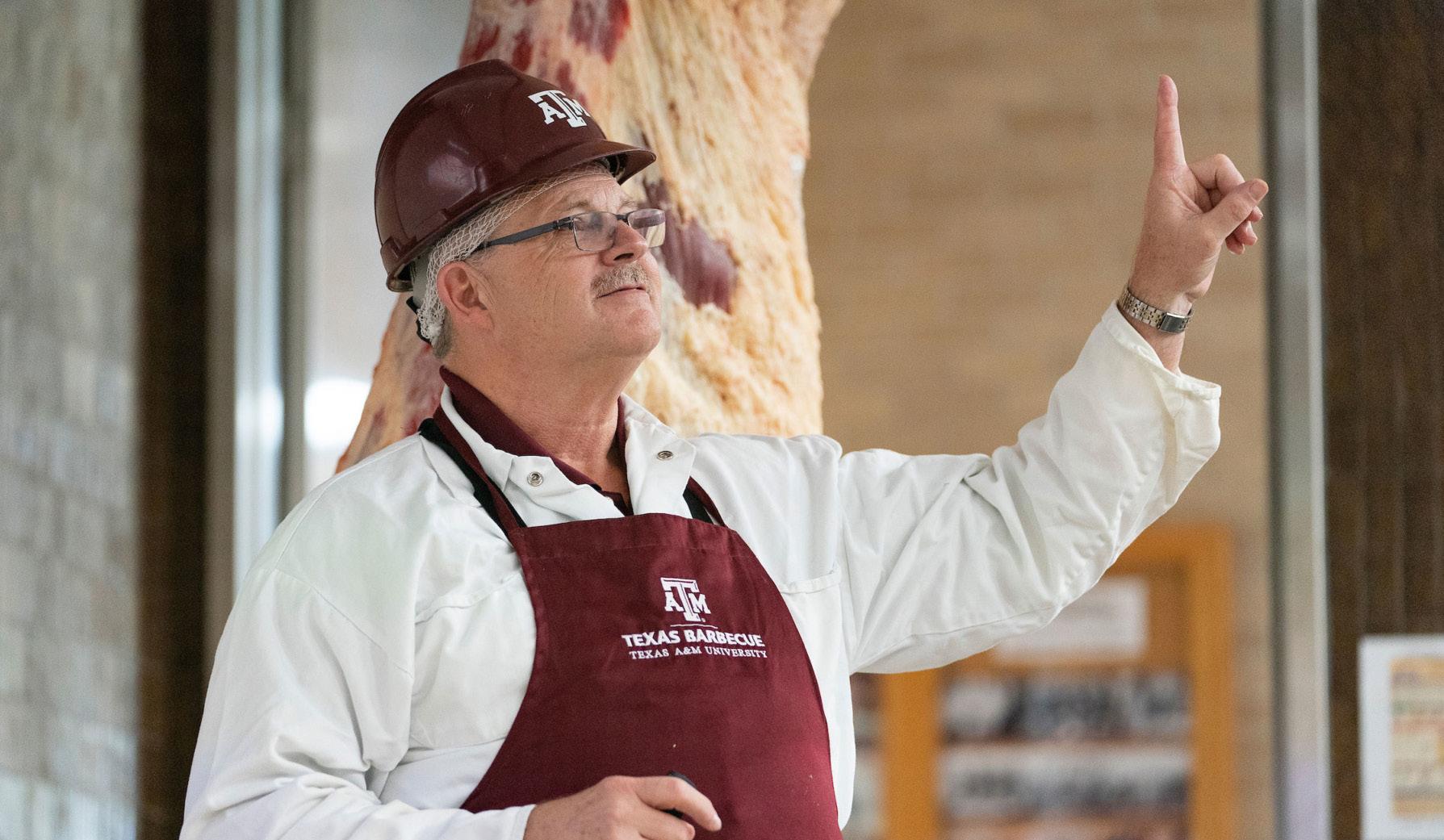
Barbecue Summer Camp is a three-day course that teaches 50-60 attendees, who are lucky enough to be drawn via lottery, the science behind barbecuing beef, pork and poultry.

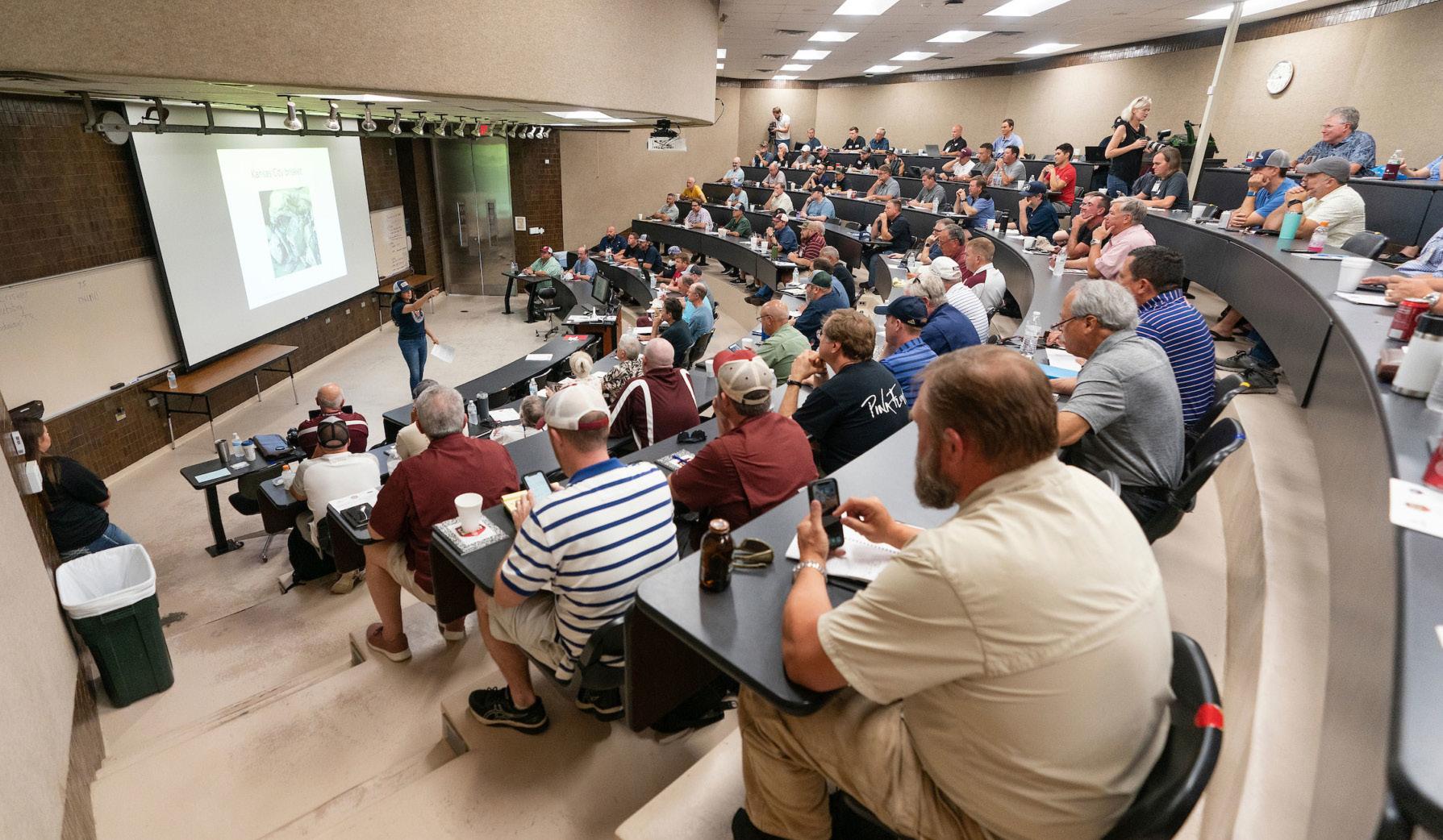

The first day is dedicated to wood and smoke and pit design. Students learn by slow-cooking briskets in everything from a multi-rack, cylinder pit to a 22-inch kettle grill. The second day exposes students to the intricacies of pork, from spareribs to whole pigs. Then day three is focused on all-things poultry — from preparing, brining and injecting birds to beer-can chicken and spicy drums and wings.
By 2013, the meat science program added Camp Brisket, an intensive two-day dive into the slow-and-low magic
behind masterpiece briskets. Griffin said the experiential learning covers woods, smoke, time, temperature, pit designs, safety, meat grades, how to trim fat to maintain the bark and flavor, and how to cut the brisket across the grain.
“Brisket is king in Texas,” Griffin said. “Camp Brisket covers all the elements it takes to make the meat the best it can be.”
Around 20-30 briskets are presented to the class the first night for a taste test. The briskets are Prime, Top Choice, Choice, Select and specialty breeds such as Wagyu. Students are tasked with grading the meats based on taste and structure.
The course features the meat science team along with various superstar Texas barbecue pitmasters like Aaron Franklin, of Franklin Barbecue in Austin, or Tootsie Tomanetz, of Snow’s BBQ in Lexington, and Wayne Mueller, of Louie Mueller Barbecue in Taylor.
Riley said Barbecue Summer Camp and Camp Brisket represent the cumulative knowledge of more than a decade of interactions and discussions on meat science with Texas pitmasters and backyard barbecue enthusiasts.
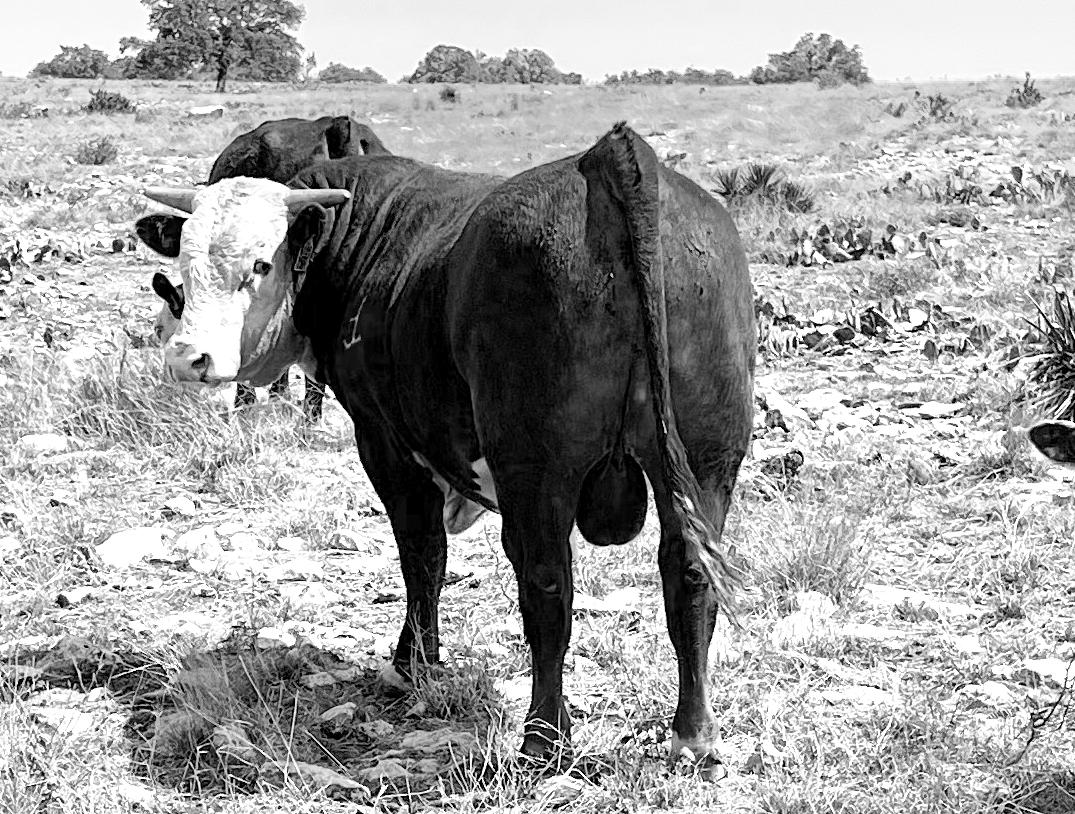
“It seems like it all came together at the same time,” Riley said. “We’ve had a lot of pitmasters who have changed the quality of their meat and made little tweaks to their process, and it has translated into even greater consumer experiences.”
Barbecue Summer Camp and Camp Brisket have extended outreach and educational opportunities by participating in barbecue festivals, holding a Texas Barbecue Town Hall meeting that covers much of the standard information about meat cuts, pits, temperatures and time, smoke and wood, and preparation and proper food safety.
Griffin, Savell and Riley are amazed at how far the programs have grown, both in institutional knowledge as well as demand. But they are also keenly aware and appreciative of the effort department personnel, program sponsors, the pitmasters and barbecue community put in to help them elevate the craft of barbecue.
“It’s humbling to take something that is a hobby and make it part of the university’s everyday program and curriculum,” Griffin said. “And then for the program to be wildly successful and in such demand and to get the positive feedback from other barbecue hobbyists and professional pitmasters and be able to celebrate and appreciate their success, it’s just amazing how far it has come.”
Bret Griffith admits he didn’t expect a new career at age 60. But, after decades in the cattle industry as a commodities broker, cattle inspector and insurance agent, he and his wife, Lynne, began a new venture in a different area of the business earlier this year — as co-owners of Mertzon Meat Co.

“I’ve always been interested in the meat business, and I knew a lot about the ranching end, but I didn’t know so much about the end result,” Griffith says. “There are many moving parts to this business that I didn’t know about. So it’s been a lot of challenges, but a lot of fun.”
Mertzon Meat Co. is a custom processor, but it also has a retail meat counter. Griffith says most of their customers are within a 150-to-200-mile radius of Mertzon. Their plant currently harvests 20 to 25 animals a week and should be licensed for state-level meat inspections later this year.
“Most of our clientele is local producers, and we have quite a few that we process beef for their ranch hands,” he explains. “I knew a lot of that clientele before, but I didn’t realize they were customers until we bought the business, so that’s been fun. I’ve always had jobs built around relationships, and this one is no different.”
Griffith was involved with Texas & Southwestern Cattle Raisers Association while working as a commodities broker and cattle inspector in Fort Worth, and became more involved after moving to Del Rio. He was part of a group looking to start a groundwater conservation district in Val Verde County and came to the association looking for resources. That interest in water issues led to Griffith serving on Texas & Southwestern Cattle Raisers Association’s natural resources committee and later the water subcommittee, where he currently serves as vice chair.
He was elected to the board of directors in 2020 and most recently joined the association’s border security task force. The group, which consists of more than a dozen South Texas ranchers, plus staff and special rangers, will use their experience to guide association efforts on border security. From identifying concerns and solutions to serving as a liaison for policymakers and the public, the task force will focus on collaboration to end the border crisis for Texas cattle producers and landowners.
“At the end of the day, we already have the laws in place; we just need them enforced,” Griffith says of the border crisis. “This isn’t just an issue for people on the border. We need to support legislators who are looking out for our best interest as a country.” T C
Sarah Harris is a freelance writer who splits her time between Austin and her family’s ranch near Tilden.
— Bret Griffith, TSCRA director
“There are many moving parts to this business that I didn’t know about. So it’s been a lot of challenges, but a lot of fun.”Bret Griffith, pictured right, stands with his business partner, Jock Dutton, in front of Mertzon Meat Co.
Hlavinka Equipment
Bernard,
Jarvis Farm Equipment
Smith Ag Solutions
Kelly Tractor
Lone Star
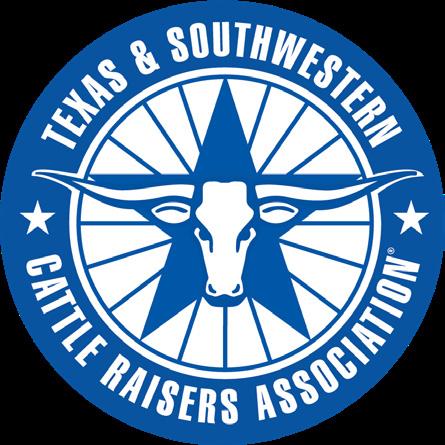
PR Equipment
TX
Three Rivers Equipment Sales
Tuttle Motors
903-270-0877
UVC Powersports
TX
281-824-1198
by Massey Ferguson dealer.
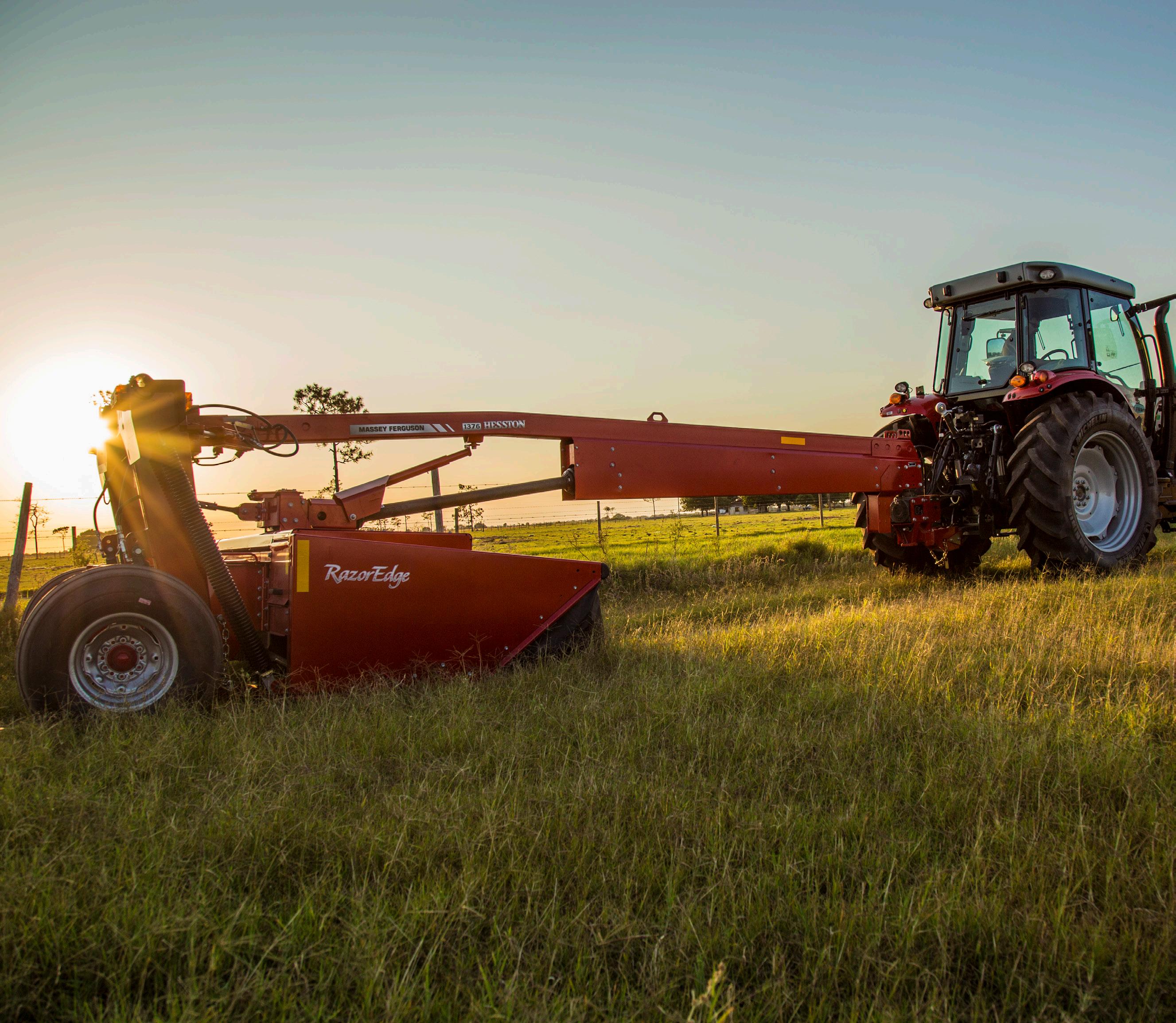
4040 Broadway St., Ste. 430 San Antonio, Texas 78209
John M. “Jack” Shelton III Amarillo, 1984-1986
James L. Powell San Angelo, 1988-1990
Tom Beard Alpine, 1994-1995
Chaunce Thompson Breckenridge, 1995-1997
C. Coney Burgess Amarillo, 1997-1999
J. Mark McLaughlin San Angelo, 1999-2001
John E. Dudley Comanche, 2001-2003
Bob McCan Victoria, 2003-2005
C.R. “Dick” Sherron Beaumont, 2005-2007
Jon Means Van Horn, 2007-2009
Dave Scott Richmond, 2009-2011
Joe J. Parker Byers, 2011-2013
First Vice President P.O. Box 155108
Lufkin, Texas 75915
Pete Bonds
Saginaw, 2013-2016
Richard Thorpe lll Winters, 2016-2018
Robert E. McKnight Jr. Fort Davis, 2018-2020
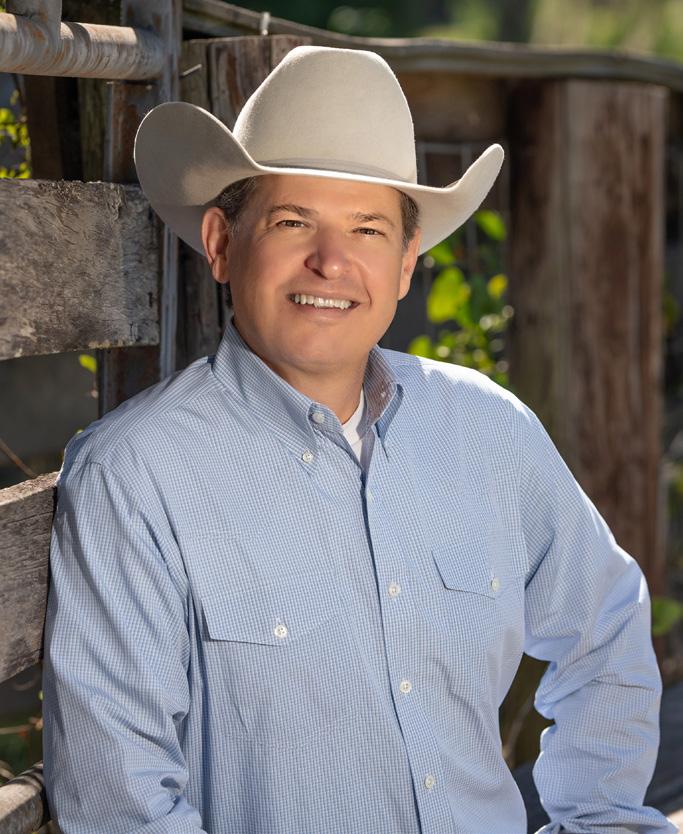
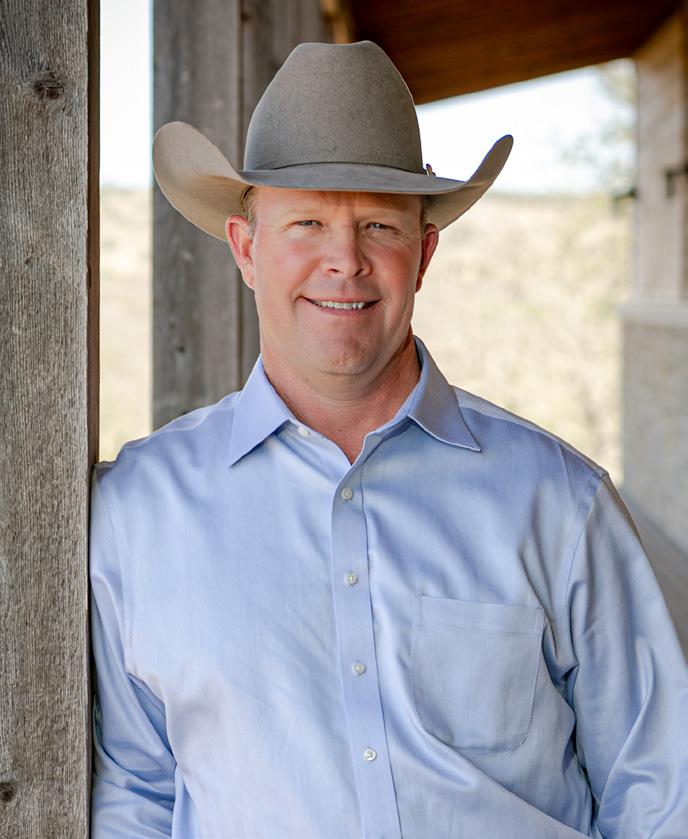
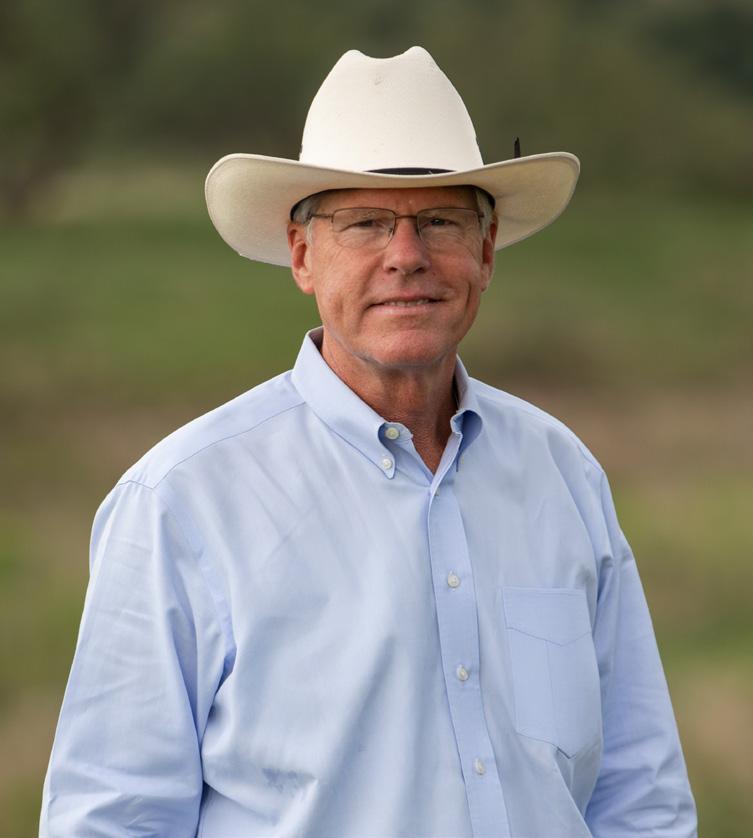
G. Hughes Abell Austin, 2020-2022
Jack Hunt
San Juan Capistrano, California
W. R. Watt Jr. Fort Worth
Richard Wortham Austin
P.O. Box 101988
Fort Worth, Texas 76185 817-332-7064 • 800-242-7820
Jason Skaggs
Executive Vice President/ Chief Executive Officer
Second Vice President and Secretary/Treasurer
3907 Salem Rd. Victoria, Texas 77904
Emily Lochner
Executive Director, Engagement & Education
Grace Dunham Executive Director, Events & Partnerships
Megan Wills
Executive Director, Finance & Human Resources
Michele Woodham
Executive Director, Insurance Services
Scott Williamson
Executive Director, Law Enforcement, Brand & Inspection Services
Lisa Walker Executive Director, Membership & Marketing
919 Congress Ave., Suite 750 Austin, Texas 78701
Kaleb McLaurin
Executive Director, Government Relations
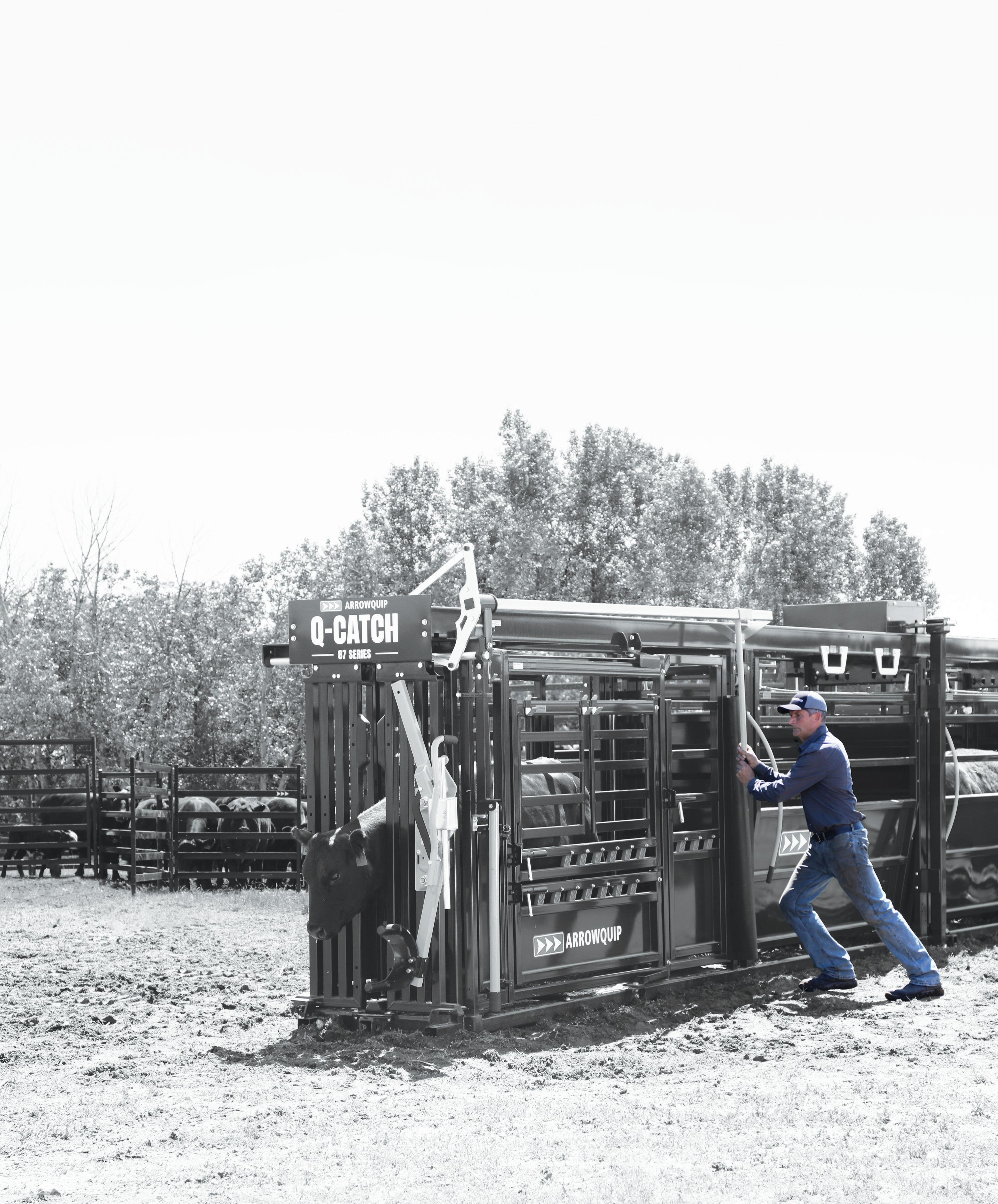
Joe M. (Jody) Bellah, Throckmorton Blake Birdwell, Canyon
E. S. F. “Swasey” Brainard II, Pampa
J. K. “Rooter” Brite Jr., Bowie Donnell Brown, Throckmorton Campbell Burgess, Amarillo
J. D. Cage, Muleshoe
Deborah Clark, Henrietta Lynn Cowden, Skellytown
J. B. Daniel, Crowell John Greer, Henrietta
James Henderson, Memphis
Clayton Henry, Wichita Falls Brooks Hodges, Guthrie Joe Leathers, Guthrie Frank McLelland, Tahoka
Jeff Mitchell, Amarillo Gage Moorhouse, Benjamin Diaz W. Murray, Wichita Falls J. Malcolm Shelton IV, Amarillo
Dale A. Smith, Amarillo Jim Thompson, Breckenridge
Tom Watson, Muleshoe Wesley Welch, Lubbock
William L. “Buck” Arrington, Pampa Van Baize, Nocona
Emry Birdwell Jr., Henrietta Mary Lou Bradley-Henderson, Childress
R. A. “Rob” Brown Jr., Throckmorton Barrett D. Clark, Breckenridge Mike Gibson, Paducah Ronald J. “Ron” Gill, Chico Robert B. Mansfield, Amarillo Tom Moorhouse, Benjamin Boots O’Neal, Guthrie James Palmer, Roaring Springs
Bill Phinizy, Gail
Tom L. Roach III, Bozeman, Montana Wilson Scaling, Henrietta
Chris Scharbauer, Amarillo John Welch, Wolfforth
A. B. “Buck” Wharton III, Vernon Tom Woodward, Decatur
Kevin Busher, Winters
Charles M. “Charley” Christensen Jr., San Angelo
C.A. “Chili” Cole IV, San Angelo Alan F. Curry, San Angelo
James H. Dudley IV, Horseshoe Bay
Amanda Dyer, Fort Davis Johnny Ferguson, Big Lake
D.A. “Day” Harral, Fort Stockton Ron Helm, Van Horn Heath Hemphill, Coleman Shelby W. Horn, Fredericksburg
Larry R. Horwood, Sterling City Grant Jones, Rochelle Mark W. Jones, Brady W. Clay Jones, Brady Ty Keeling, Boerne Lorenzo Lasater, San Angelo Brian T. McLaughlin, Midland David L. Neal, San Angelo Gerald Nobles Jr., Brady James Oliver, Ozona Wade Perks, San Angelo
Gordon E. Sauer, Fredericksburg Jessica Tate, Marfa
James Uhl, Fort McKavett Cody Webb, Barnhart
Ken Welch, Baird
Ray W. Willoughby III, Eldorado
Bennie Bock II, New Braunfels
C. A. “Chip” Cole III, San Angelo
William C. “Billito” Donnell Jr., Alpine
James H. “Jim” Dudley, Comanche Richard Gates, Marfa
W. H. “Billy” Green III, Albany
Rafe Hargrove, Rotan
Dr. Joe Pat Hemphill, Coleman
Richard D. “Dick” Hughes, El Paso
Ken Jordan, San Saba
Don Keeling, Fredericksburg
Chris Lacy, Fort Davis
Laurence M. Lasater, San Angelo
Ben Love, Marathon
C. H. “Terry” McCall, Comanche
Len P. Mertz, San Angelo
Tom Perini, Buffalo Gap
Frank Price, Sterling City
Danny B. Stewart, Sterling City
Rick Tate, Marfa
Cliff Teinert, Albany
Dennis W. Webb, Barnhart
W. C. “Billy” Williams, Mertzon
Ian Chapman, Madill, Oklahoma
Ford Drummond, Pawhuska, Oklahoma
Bob Drake, Davis, Oklahoma
Russell “Rusty” Noble, Ardmore, Oklahoma
Les Nunn, Pauls Valley, Oklahoma
Edward Bordovsky Jr., Riviera
Austin Brown III, Beeville
W. Christopher Bush, Refugio
Presnall C. Cage, Falfurrias
James Clement lll, Kingsville
David S. Crow, Corpus Christi
Dustin Dean, Floresville
David DeLaney, Kingsville
Robert “Bobby” Dobson, Birmingham, Alabama
James L. “Jamie” Donnell Jr., Fowlerton
J. David Eppright, Cost
Benjamin Eshleman III, Corpus Christi
Joseph B.C. Fitzsimons, Carrizo Springs
Jim L. Gates, Pearsall
Milton S. Greeson Jr., Victoria Bret Griffith, Del Rio
Heath Grigg, Kingsville
Marty R. Harris, Tilden Leslie Kinsel, Cotulla
Claude Koontz, San Antonio
Steven J. Mafrige, Tilden Beth Knolle Naiser, Sandia
Federico Nieto, Raymondville
T. Michael O’Connor, Victoria Jason Peeler, Floresville
J.R. Ramirez, La Pryor
Gilly Riojas, Corpus Christi
M. Stuart Sasser, Corpus Christi Lew Thompson, Pearsall
Gene S. “Primo” Walker Jr., Mirando City C. Clark Welder, Beeville
John Zacek, Victoria
Steve G. Beever, Pearsall
Richard H. Bennett, San Antonio Chip Briscoe, Carrizo Springs
Austin E. Brown II, Beeville
Martin W. Clement II, Kingsville
Thurman S. Clements Jr., Victoria Nixon Dillard, Pleasanton Trainor Evans, Mercedes
Thomas J. “Tommy” Haegelin, Concan
Dr. Philip C. Hardee, Beatrice, Alabama
Allen C. “Dick” Jones IV, Corpus Christi
Joan Negley Kelleher, San Antonio
David W. Killam, Laredo
Dan W. Kinsel III, Cotulla Steve C. Lewis, San Antonio
Jim McAdams, Seguin
James A. McAllen, Linn Red McCombs, San Antonio Tim Pennell, Westhoff
Jim Peters, Quemado
Scott Petty Jr., San Antonio Tom Risinger, Weslaco
Frates Seeligson Jr., San Antonio
Richard Traylor, Batesville
Roger F. Welder, Victoria
David W. Winters, Del Rio
Wayne Cockrell, College Station
Herff Cornelius Jr., Wadsworth
Carlos Detering III, Houston
Dr. Lewis (Bud) Dinges, Richmond
Gardner H. Dudley, Houston
Jay C. Evans, Dripping Springs
Dan Gattis, Georgetown
Kelley Sullivan Georgiades,
College Station
George Harrison, Bay City
Tom J. Haynie, Navasota
Robert Hodgen, Houston
Clay Kenley, Crockett
Clive Runnells III, Austin
John Sumner Runnells III, Bay City
Tony Spears, Rosanky
John “Rocky” Sullivan, Galveston
Bill White, Stowell
Claudia Scott Wright, Richmond
Leroy Ezer, Anahuac
Frank Green, Liberty
Coleman H. Locke, Hungerford
Katharine Armstrong Love, Austin
Richard M. Lucas Jr., Houston
William “Alan” McNeill, Beaumont
Evalyn Moore, Richmond
Raymond E. Moore IV, Richmond Rick Peebles, Baytown
Gordon Richardson, Caldwell
Charles R. “Butch” Robinson, Navasota
Nolan Ryan, Round Rock
J. D. “Bubba” Sartwelle Jr., Sealy
Ed Small, Austin
Guy F. Stovall Jr., El Campo
Linda Joy Stovall, El Campo
Gerald Sullivan, Galveston
John L. Sullivan, Galveston
Robert J. Underbrink, Houston
Mark A. Wheelis, Montgomery
Beau Brite White, Rosanky
Dr. M. R. “Mike” Wirtz, Brenham
April Bonds, Saginaw
Missy Bonds, Saginaw
John L. Cantrell, Cresson
Hunter Crow, Dallas
James T. Dangelmayr, Muenster
Seth Denbow, Weatherford
Crawford Edwards, Fort Worth
Jason Harlow, Dallas
Colt Hoffman, Marlin
Pete Hudgins, Sherman
Tom Johnson, Wortham
John Z. Kimberlin Jr., Dallas
Ken Leiber, Fort Worth
James E. “Jim” Link, Crowley
Stefan Marchman, Fort Worth
William H. McCall, Fort Worth
Dan Nance, Haslet
Gary Price, Blooming Grove
Susan Roach, Fort Worth
Stephen S. “Steve” Sikes, Fort Worth
Bragg Smith III, Dallas
Bart Wulff, Dallas
Curtis Younts Jr., Belton
Bradford S. “Brad” Barnes, Fort Worth
George Beggs IV, Fort Worth
John W. Carpenter III, Dallas
Markham B. Dossett, Waco
Jon David Mayfield, Dublin
Bob Moorhouse, Weatherford
Mary Joe Reynolds-Montgomery, Fort Worth
Stephen T. “Steve” Swenson, Dallas
TSCRA market inspector logs countless miles serving cattle raisers, exploring the West.
By Jena McRellDuring his 25 years as a market inspector for Texas & Southwestern Cattle Raisers Association, Mike Little has hardly missed a sale.
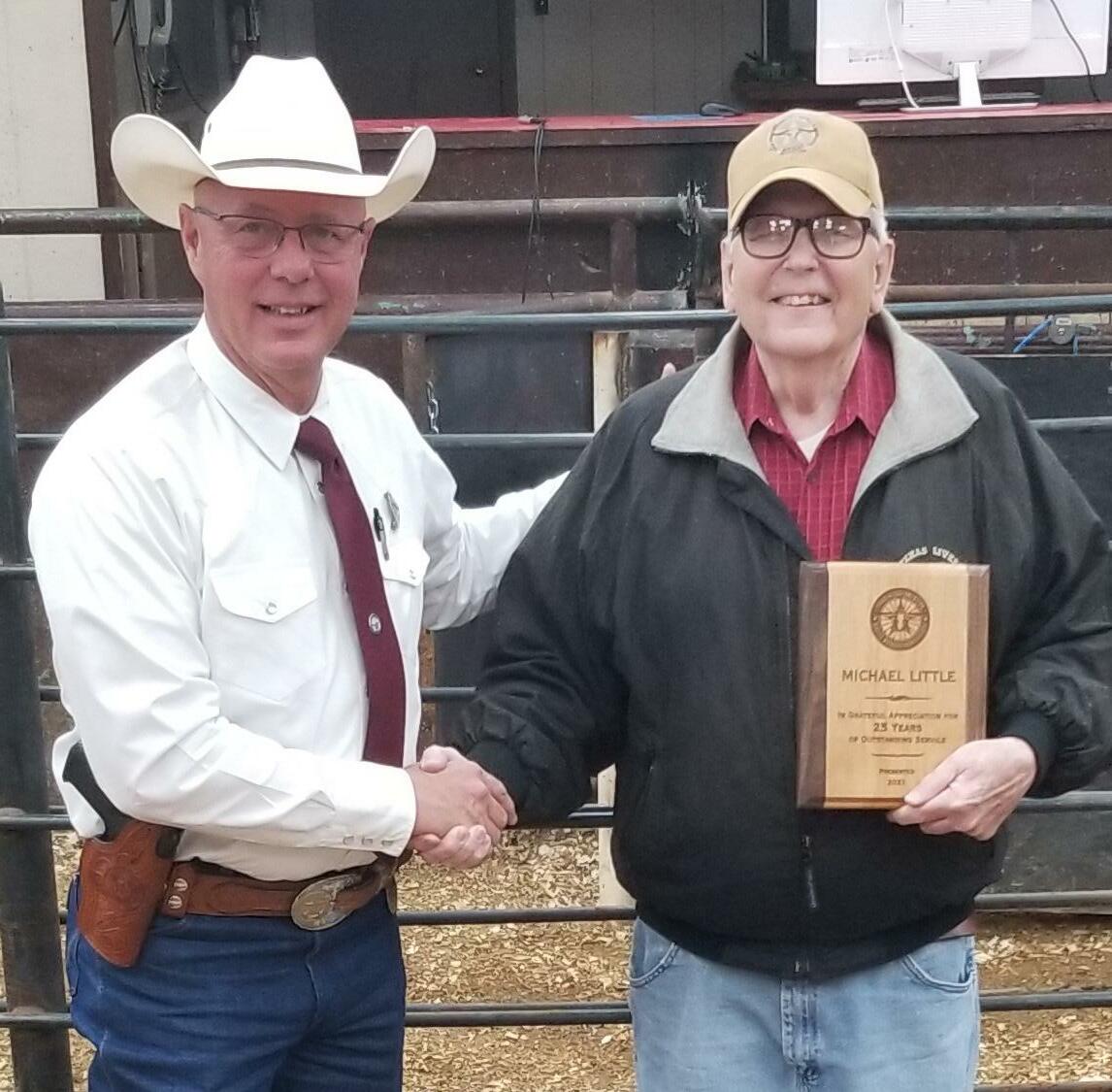
On Wednesdays, he is a regular at Anderson County Livestock Exchange in Elkhart. Then on Saturdays, you can find him at the Tri County Livestock Market near New Summerfield.
That is, unless he’s on his next adventure out West.
Little loves a long-distance road trip, driving along unbeaten paths to explore nature’s beauty. He’s been known to log up to 8,000 miles on a single trip.
“I’ve been on every rural road in the western United States,” Little says. “I’d buy a new truck every year before I left, and I’ve even had to have the oil changed in Oregon. So that’s a pretty good trip when you put on that many miles.”
September is his favorite time of year to travel. He says, that way, you experience the changing of the seasons and see the landscapes shift from lush green to rich Autumn hues. His niece, Sarah Little, has joined him in the passenger seat for many occasions.
“I like seeing the stuff God made,” Little says. “I never really had a destination. I’d stop when I wanted to stop and stay as long as I wanted to stay.”
Among his list of favorite regions to explore is the Pacific Northwest; as well as national parks in Colorado and Montana; and farther north up into Alberta and British Columbia, Canada.


He’s spotted whales from a boat in the Pacific Ocean, stood beneath the towering Redwoods in California, and watched as clouds shifted across the Grand Teton Mountains in Wyoming.
“I always sit down most places that I go. And you know, really take it in, not just pass through,” he says. “This is a good country we live in.”
Born and raised in East Texas, Little’s family has been stewards of the land for more than a century.
He was recently retired from the fertilizer business when he was asked to pitch in for a brand inspector at the sale in New Summerfield. More than two decades later, he is still looking out for cattle raisers.
“I’ve worked nearly every sale from Interstate 35 to Louisiana,” Little says. “I know the people and the sale barns, because I’ve had cattle all these years.”
He is often the first to arrive at the auction. By greeting people as they come in, answering phones or passing out checks, Little always finds a way to lend an extra hand to the auction market.
And cattle raisers can rest easy knowing he is on watch, keeping an eye on the cattle and looking out for anything out of the ordinary. He says he takes pride in being available, easy to talk to and helpful to anyone who may need him.
“I am always there to help,” says Little, who turns 75 this July. “That’s what our job is really, in addition to law enforcement, being there for the people. I keep going every day, and always look on the sunny side.”
T
C


























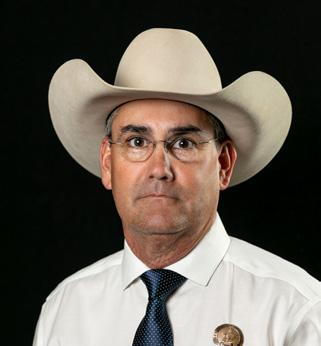

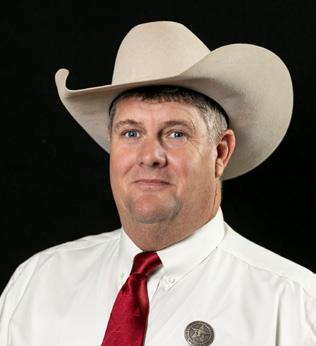


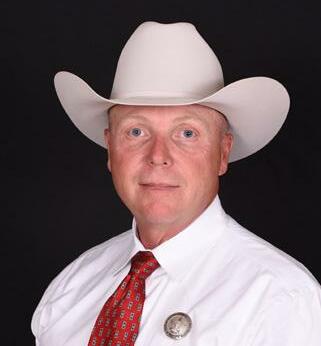






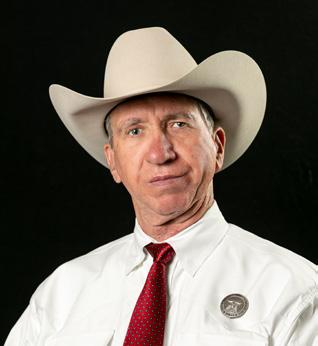
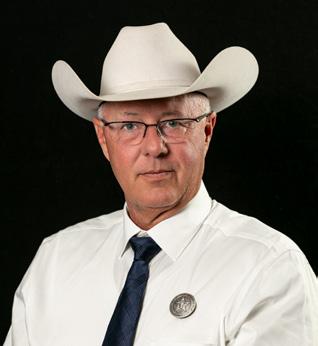

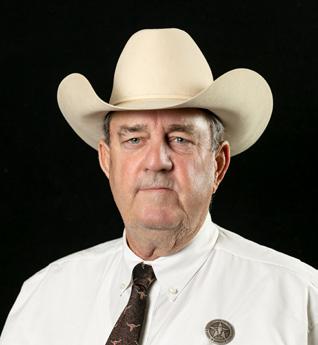

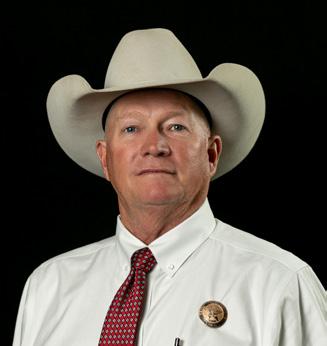


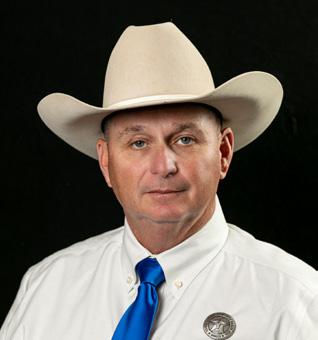

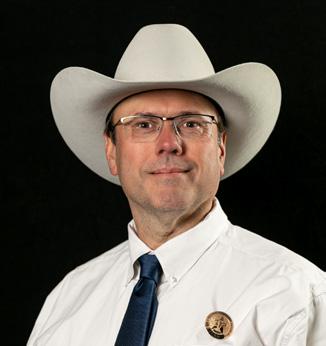

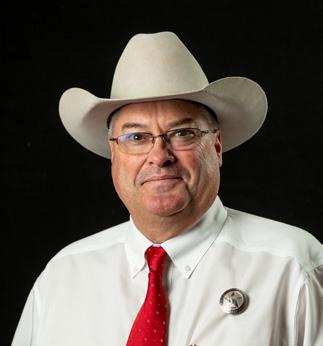
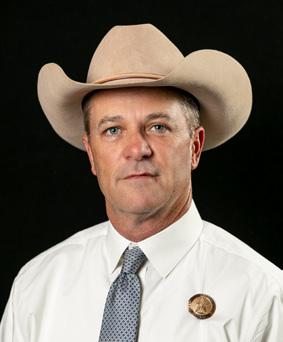
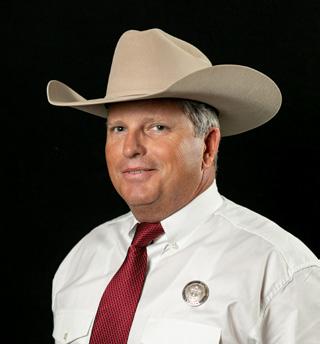
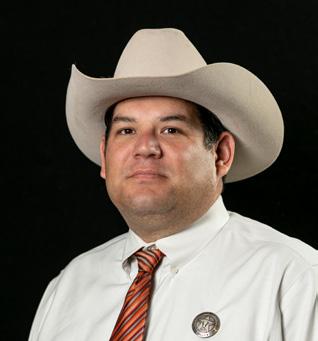
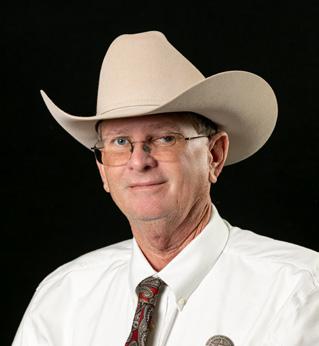

Anna
917 Cattle Co.
Graford
Madison Ainsley Bryan
Susan & Joseph Archino
Aledo
Bar C Cattle Seminole
Jim Barker Ingram
Charlie & Kylie Boswell Lampasas
Garry Brewer Lubbock
Caney Creek Cattle Station
Tyler Shane Carter Colmesneil
Starlyn Carter New Boston CC Farm TX Fort Worth
James Cheshire Stephenville
Circle N Ranch
Ravenna
CLM Mini Ranch Cleveland
Samuel Colt Houston Wade Cook Cedar Creek
CR Cattle Co. Tivoli
Crockett Construction Inc. Crockett
Chris Cunningham Houston
CW Cattle Co. Decatur
Maggie Davis Spearman
Michael DeLaRosa San Antonio
Wesley Dobbs
Franklin
Double A Cattle Co. Kenton, Oklahoma
Albert Dwarshus Fredericksburg
Clint Easley Llano
Emerald Bay Ranch Forestburg
Renee Endsley Paris
Five Stones Ranch Austin
Flying 7 Ranch Boerne
Hugo Ford Kingsville Foster Brahmans Floresville Franklin Farm Corpus Christi Jenkins Franklin Emory
G3 Cattle & Investments LLC Washington
Bob Gilde Spicewood
Linda Giles Sulphur Springs
Josh Glaze El Campo
Dion Graybeal Mabank
James Griffin Blum
Christopher Grimes Winters
H Squared Tahoka Sutton Hamlin Austin Hanen Automatic Livestock Cattle Feeders Magnolia
Harvey Paige LLC
Corpus Christi
Richard Harwell Fort Worth
Kirt Hearne Killeen
Jimmy Henson Votaw Ernest Hernandez Victoria
Hill Cattle Co. Austin
J&A Cattle Mount Enterprise
Todd Jennings Fredericksburg
Harold Stephen Jones Sulphur Springs
Landon Jones McKinney K&P Livestock Wills Point
KB Luedecke Katy
Kevin Sparks for Texas Midland
Kizer Cattle Co. Hurst Jeffrey Lee Gardendale
David Long Junction
Lucky Gap Ranching Lometa
Maraggia Farms Inez
Sally Marshall Bowie Mathews Lone Camp Ranch Palo Pinto
Mathis Land & Livestock Kingsville
Teri McDowell San Antonio
Dr. & Mrs. Kip Owen
McAllen
Chase Parker Cameron
Tony Perez Millsap
Lana Peugh Godley
Jenna L. Pharr Van Alstyne
Kellee Pittman Collinsville
Kierstyn Portis Inez
R/S Cattle Company Hamilton
Rocking F&W Ranch LLC Navasota
Ashley Rothrock Crockett
James Rucker
Comanche

S7 Cattle & Performance Horses Alvin


Matthew Sanford Tyler
Santa Teresa Livestock Auction
Santa Teresa, New Mexico
Eugene Schilder Streetman
Small Wonders Farm Krum
Rachel Smith Flint
Strange Cattle Co. Holliday
Sunset Whiskey Ranch & Cattle Co. Mabank
T&K Harris Homestead LLC Navasota
Connor Terry
San Antonio
Phyllis Tietjen Troup
Trey Deuce Farm Fredericksburg
Russell Wall Inez
Chris Ward Clarendon
Thomas Wisinski Lipan
Jennifer Wither Corpus Christi
Doug Woods Dawson
Johnnie & Margie Zak Lexington
JoNell Zapata Fort Hancock
At Cactus Feeder s The Cattle Come Fir st, and Our Cattle Feeding Customer s are the Core of Our Business
W
Folks
Like Owner s Because They Are Owner
Get to know the individuals who make Cactus Feeders a success.
Cactus Feedyard
Matthew Turney, Manager Cactus, TX
cell: (806) 282-7077
Rusty Jackson, Manager Ulysses, KS cell: (806) 773-9457
Frontier Feedyard
Ross Kelso, Manager Spearman, TX
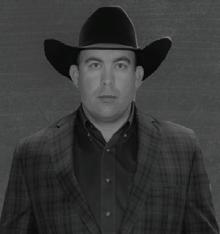
cell: (806) 662-4741
Stratford Feedyard
Pistol Audrain, Manager Stratford, TX cell: (806) 753-7133
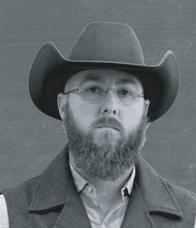
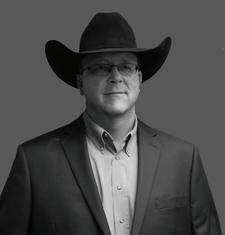





At Cactus, our Employee Stock Ownership Plan (ESOP) makes each employee an owner of the company They think like owners and take care of the cattle like owners That’s the secret to what has made Cactus Feeders a success, and that will continue to make us successful tomorrow.
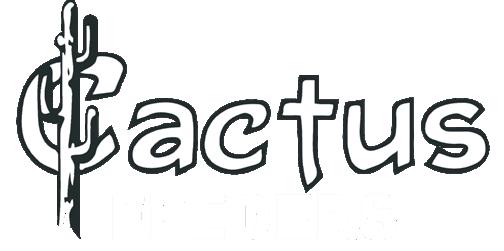
Southwest Feedyard
Kacey Graham, Manager Hereford, TX cell: (806) 316-8799
Hale Center Feedyard
David Watts, Manager Hale Center, TX cell: (806) 202-0209
Ulysses Feedyard
Adam Gerrond, Manager Ulysses, KS cell:(806) 390-9034
Wolf Creek Feedyard
Keith Brinson, Manager Perryton, TX
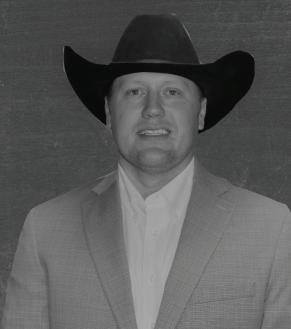
cell:(806) 282-7588
Wrangler Feedyard
Randy Shields, Manager Tulia, TX cell: (806) 290-0559
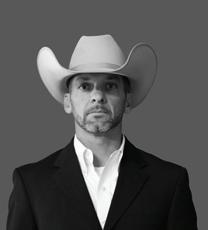

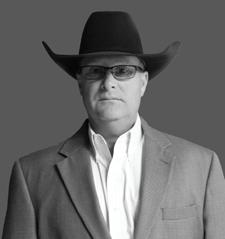
Syracuse Feedyard
Phil Moreman, Manager Syracuse, KS cell: (806) 340-4790
Anderson County Livestock Exchange
Where: Elkhart
Phone: 903-764-1919
Sale Day: Wednesday
Contact: Michael Little, 903-876-3153
Elkhart Horse Auction
Where: Elkhart Phone: 903-764-1495
Sale Day: Saturday
Contact: Tiffany Patterson, 903-388-7288
Atascosa Livestock Exchange
Where: Pleasanton Phone: 830-281-2516
Sale Day: Tuesday
Contact: Marvin Bendele, 210-213-5890
Four County Auction
Where: Industry Phone: 979-357-2545
Sale Day: Tuesday
Contact: Lisa Sebastian, 979-270-3041
Muleshoe Livestock Auction
Where: Muleshoe Phone: 806-272-4201
Sale Day: Friday
Contact: Benny Parker, 806-946-9142
Beeville Livestock Comm.
Where: Beeville Phone: 361-358-1727
Sale Day: Friday
Contact: Robert Bridge, 361-542-6693
Meridian L/S Comm. Co.
Where: Meridian Phone: 254-435-2988
Sale Day: Monday
Contact: Larry Brown, 254-265-1920
J & J Livestock Auction
Where: Texarkana
Phone: 903-832-3576
Sale Day: Saturday
Contact: Lana Caldwell, 903-908-0530
Brazos Valley Livestock Comm.
Where: Bryan Phone: 979-778-0904
Sale Day: Tuesday
Contact: Nina Nygard, 512-281-6753
Caldwell Livestock Comm.
Where: Caldwell Phone: 979-567-4119
Sale Day: Wednesday
Contact: Mark Nygard, 512-281-6330
Lockhart Auction
Where: Lockhart Phone: 512-398-3476
Sale Day: Thursday
Contact: Nina Nygard, 512-281-6753
Bruce Overstreet Livestock
Where: Pittsburg Phone: 903-856-3440
Sale Day: Monday Contact: Michelle Willeford, 903-767-0670
Tri County Livestock Market
Where: New Summerfield Phone: 903-726-3291
Sale Day: Saturday Contact: Michael Little, 903-876-3153
Coleman Livestock Auction
Where: Coleman Phone: 325-625-4191
Sale Day: Wednesday Contact: Dave Williams, 325-669-2030
Columbus Livestock Auction
Where: Columbus Phone: 979-732-2622
Sale Day: Thursday Contact: JoGayle Stavena, 979-332-2186
Comanche Livestock Exchange
Where: Comanche Phone: 325-356-5231
Sale Day: Saturday Contact: Michael Davis, 254-879-3121
The New Gainesville Livestock Auction
Where: Gainesville
Phone: 940-665-4367
Sale Day: Friday
Contact: Robin Gibbs, 903-227-0791
Coryell County Comm.
Where: Gatesville Phone: 254-865-9121
Sale Day: Saturday
Contact: Ray Davis, 254-718-5512
Cattleman’s Livestock Comm.
Where: Dalhart Phone: 806-249-5505
Sale Day: Thursday
Contact: Clifton Miller, 806-570-7439
Hereford Livestock Auction
Where: Hereford Phone: 806-240-3082
Sale Day: Tuesday
Contact: Joe Bob Via, 806-452-9280
Cuero Livestock Comm.
Where: Cuero Phone: 361-275-2329
Sale Day: Friday
Contact: Rodger Koehler, 830-305-5544
Texas Cattle Exchange
Where: Eastland
Phone: 254-629-2288
Sale Day: Tuesday
Contact: Ronnie Ober, 817-371-7071
Rio Grand Classic
Where: El Paso Phone: 956-487-5551
Sale Day: Tuesday
Contact: Joe Karl Rios, 915-858-0590
Dublin Livestock Auction
Where: Dublin Phone: 254-445-1734
Sale Day: Friday
Contact: Ronnie Ober, 817-371-7071


Erath County Dairy Sale
Where: Dublin
Phone: 254-968-7253
Sale Day: Friday
Contact: Bob McBryde, 940-859-6217
Stephenville Cattle Co.
Where: Stephenville Phone: 254-968-4844
Sale Day: Wednesday
Contact: Bob McBryde, 940-859-6217
Flatonia Livestock Comm.
Where: Flatonia Phone: 361-865-3538
Sale Day: Monday
Contact: Danielle Robbins, 512-944-0383
Schulenburg Livestock Auction
Where: Schulenburg Phone: 979-743-6566
Sale Day: Saturday
Contact: Megan Stavena, 979-320-4228
Floydada Livestock Sales
Where: Floydada Phone: 806-983-2153
Sale Day: Wednesday
Contact: John Hindman, 806-778-4899
Pearsall Livestock Auction
Where: Pearsall Phone: 830-334-3653
Sale Day: Wednesday
Contact: Clarence Stevens, 210-415-0441
Gillespie Livestock Co.
Where: Fredericksburg Phone: 830-997-4394
Sale Day: Wednesday
Contact: Tom Roarick, 830-889-5155
Gonzales Livestock Market
Where: Gonzales Phone: 830-672-2845
Sale Day: Saturday
Contact: JoGayle Stavena, 979-332-2186
Nixon Livestock Comm.
Where: Nixon Phone: 830-582-1561
Sale Day: Monday
Contact: Cade Burks, 830-391-4501
Longview Livestock
Where: Longview Phone: 903-235-6385
Sale Day: Thursday
Contact: Paul Pruitt, 903-725-6200
Mid-Tex Livestock Auction
Where: Anderson Phone: 936-825-3970
Sale Day: Thursday
Contact: Danielle Robbins, 512-944-0383
Navasota Livestock Auction
Where: Navasota Phone: 936-825-6545
Sale Day: Saturday Contact: Rick Faught, 936-442-1039
Seguin Cattle Co.
Where: Seguin Phone: 830-379-9955
Sale Day: Wednesday Contact: Cade Burks, 830-391-4501
Hamilton Livestock Comm.
Where: Hamilton Phone: 254-386-3185
Sale Day: Tuesday Contact: Bob McBryde, 940-859-6217
Athens Comm. Co.
Where: Athens Phone: 903-675-3333
Sale Day: Friday
Contact: Brandy Baughman, 903-440-4382
Edinburg Livestock Auction
Where: Edinburg Phone: 956-383-5671
Sale Day: Saturday Contact: Coney Alvarez Jr., 956-437-3899
Hubbard Livestock Market
Where: Hubbard
Phone: 254-576-2584
Sale Day: Monday
Contact: Bob McBryde, 940-859-6217
Sulphur Springs Livestock Comm.
Where: Sulphur Springs Phone: 903-885-2455
Sale Day: Monday
Contact: Paul Pruitt, 903-725-6200
East Texas Livestock Auction
Where: Crockett Phone: 936-544-2246
Sale Day: Tuesday
Contact: Robert Ware, 903-388-5365
Big Spring Livestock Auction
Where: Big Spring Phone: 432-267-5881
Sale Day: Friday
Contact: Bruce Brandenberger, 254-977-5763
Edna Livestock Auction
Where: Edna Phone: 361-782-7666
Sale Day: Monday
Contact: Galynn Mazoch, 979-578-1823
Kirbyville Auction Barn
Where: Kirbyville Phone: 409-423-2612
Sale Day: Saturday
Contact: Casey Jones, 409-423-0685
Gulf Coast Livestock Market
Where: Alice Phone: 361-664-4395
Sale Day: Tuesday
Contact: Ramiro Garcia, 361-460-0008
Johnson County Cattle Auction
Where: Cleburne
Phone: 817-556-9090
Sale Day: Saturday
Contact: Lee Snyder, 254-707-1682
brush control. Guaranteed for the long haul. Invora® herbicide doesn’t just stunt brush growth — it stops it for the long haul. Using the next-generation
gives you guaranteed control. With Invora and RangeView™, you can identify and eliminate mesquite and huisache so nutritious forage can
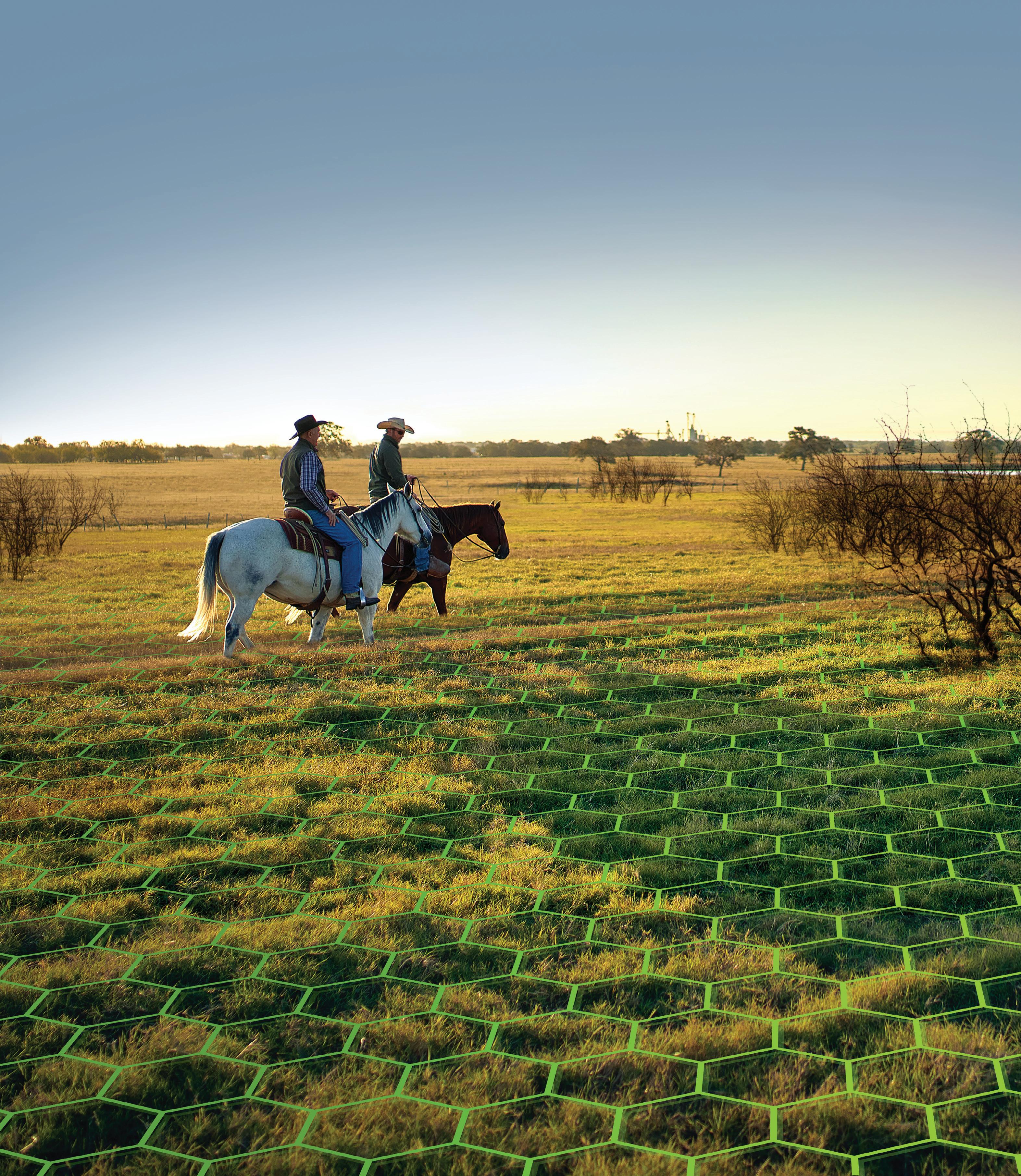
investing in the long
It’s all backed
performance
Karnes City Auction
Where: Karnes City
Phone: 830-780-3382
Sale Day: Saturday
Contact: Kaylee Malatek, 979-942-0323
Karnes County Livestock Exchange
Where: Kenedy Phone: 830-583-2574
Sale Day: Thursday
Contact: Kaylee Malatek, 979-942-0323
Cattlemen’s Livestock Comm.
Where: Paris Phone: 903-784-2238
Sale Day: Saturday
Contact: Robin Gibbs, 903-227-0791
Paris Livestock Auction
Where: Paris
Phone: 903-739-2575
Sale Day: Wednesday
Contact: Lana Caldwell, 903-908-0530
Lampasas Cattle Auction
Where: Lampasas Phone: 512-556-3611
Sale Day: Wednesday
Contact: Ray Davis, 254-718-5512
LAVACA
Hallettsville Livestock Comm.
Where: Hallettsville Phone: 361-798-4336
Sale Day: Tuesday
Contact: Kaylee Malatek, 979-942-0323
Giddings Livestock Comm.
Where: Giddings
Phone: 979-542-2274
Sale Day: Monday
Contact: Nina Nygard, 512-281-6753
Lexington Livestock Comm.
Where: Lexington Phone: 979-773-2922
Sale Day: Saturday
Contact: Nina Nygard, 512-281-6753
Buffalo Livestock Comm.
Where: Buffalo Phone: 903-322-4940
Sale Day: Saturday
Contact: Robert Ware, 903-388-5365
Raywood Livestock Market
Where: Raywood Phone: 936-587-4941
Sale Day: Monday
Contact: Harvey Williamson, 963-334-5325
Groesbeck Auction & Livestock
Where: Groesbeck Phone: 254-729-3277
Sale Day: Thursday
Contact: Tyler Rader, 713-907-2725
Live Oak Livestock Auction
Where: Three Rivers Phone: 361-786-2553
Sale Day: Monday
Contact: Marvin Bendele, 210-213-5890
Lubbock Stockyards
Where: Lubbock Phone: 806-745-3383
Sale Day: Tuesday Contact: J.E. Stone, 806-777-4396
Jordan Cattle Auction
Where: Mason Phone: 325-347-6361
Sale Day: Monday
Contact: Warren Ottmers, 830-669-2262
Waco Stockyards
Where: Waco Phone: 254-753-3191
Sale Day: Tuesday Contact: Larry Brown, 254-265-1920
West Auction
Where: West Phone: 254-826-3725 Sale Day: Thursday Contact: Ray Davis, 254-718-5512
Union Comm.
Where: Hondo
Phone: 830-741-8061,
Sale Day: Monday
Contact: Clarence Stevens, 210-415-0441
Milam County Livestock Auction
Where: Cameron Phone: 254-697-6697
Sale Day: Friday
Contact: Morgan Wendland, 512-632-9366
Nacogdoches Livestock Exchange
Where: Nacogdoches
Phone: 936-564-8661
Sale Day: Thursday
Contact: Michael Witcher, 936-556-0992
Corsicana Livestock Market
Where: Corsicana Phone: 903-872-1631
Sale Day: Tuesday
Contact: Lee Snyder, 254-707-1682
Panola Livestock
Where: Carthage Phone: 903-693-6361
Sale Day: Tuesday
Contact: Lori Blankenship, 936-234-3441
Livingston Livestock Exchange
Where: Livingston Phone: 936-327-4917
Sale Day: Saturday
Contact: Harvey Williamson, 963-334-5325
Amarillo Livestock Auction
Where: Amarillo
Phone: 806-373-7464
Sale Day: Monday
Contact: Michael Vessels, 806-517-3188
Lonestar Stockyards
Where: Amarillo
Phone: 806-677-0777
Sale Day: Tuesday
Contact: Michael Vessels, 806-517-3188
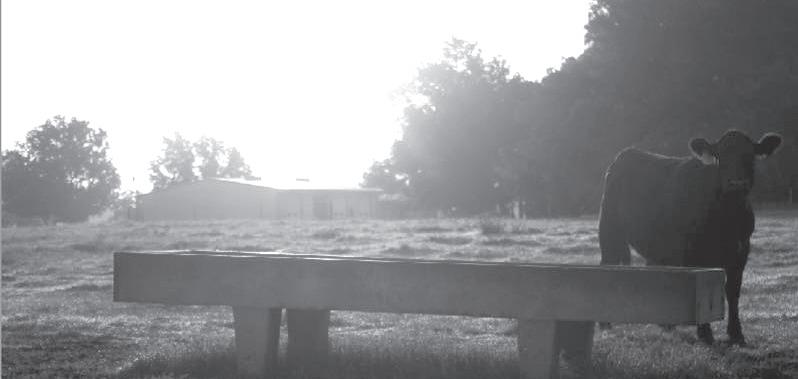



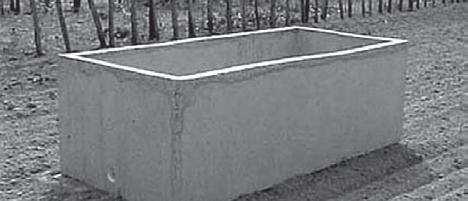


Emory Livestock Auction
Where: Emory
Phone: 903-473-2512
Sale Days: Tuesday & Saturday
Contact: Brandy Baughman, 903-440-4382
Calvert Livestock Co.
Where: Calvert Phone: 979-364-2829
Sale Day: Friday
Contact: Ray Davis, 254-718-5512
Hunt Livestock Exchange
Where: Henderson
Phone: 903-657-2690
Sale Day: Monday
Contact: Gene Gilcrease, 936-645-7774
Jordan Cattle Auction
Where: San Saba
Phone: 325-372-5159
Sale Day: Thursday
Contact: David Munden, 325-456-7253
SHELBY
Center Auction Co.
Where: Center Phone: 936-598-4395
Sale Day: Wednesday
Contact: Michael Witcher, 936-556-0992
Triple G Livestock Auction LLC
Where: Rio Grande City Phone: 956-437-1988
Sale Day: Friday
Contact: Coney Alvarez Jr., 956-437-3899
Tulia Livestock Auction
Where: Tulia
Phone: 806-995-4184
Sale Day: Thursday
Contact: Michael Vessels, 806-517-3188
Abilene Auction
Where: Abilene Phone: 325-673-7865
Sale Day: Tuesday
Contact: Dave Williams, 325-669-2030
Stone Livestock Comm.
Where: Mt. Pleasant Phone: 903-575-9099
Sale Day: Tuesday
Contact: Paul Pruitt, 903-725-6200
Producers Livestock Auction
Where: San Angelo Phone: 325-653-3371
Sale Day: Thursday
Contact: Bruce Halfmann, 325-315-5972
Southwest Livestock Exchange
Where: Uvalde Phone: 830-278-5621
Sale Day: Thursday
Contact: Clarence Stevens, 210-415-0441
Mort Livestock Exchange
Where: Canton Phone: 903-287-6386
Sale Day: Saturday Contact: Paul Pruitt, 903-725-6200
Van Zandt Comm. Co.
Where: Wills Point Phone: 903-872-2117 Sale Day: Saturday Contact: Paul Pruitt, 903-725-6200
Brenham Livestock Auction
Where: Brenham Phone: 979-836-3621
Sale Day: Friday
Contact: Lisa Sebastian, 979-270-3041
El Campo Livestock Co.
Where: El Campo Phone: 979-543-2703
Sale Day: Tuesday
Contact: Galynn Mazoch, 979-578-1823
Wharton Livestock Auction
Where: Wharton
Phone: 979-532-3660
Sale Day: Wednesday
Contact: JoGayle Stavena, 979-332-2186
Wichita Livestock Sales
Where: Wichita Falls Phone: 940-541-2222
Sale Day: Wednesday
Contact: R.C. Langford, 832-330-7279
Vernon Livestock Market LLC
Where: Vernon Phone: 940-552-6000
Sale Day: Tuesday
Contact: Larry Lee, 940-886-6746
Decatur Livestock Market
Where: Decatur Phone: 940-627-5599
Sale Day: Monday
Contact: R.C. Langford, 832-330-7279
Winnsboro Livestock Auction
Where: Winnsboro Phone: 903-365-2201
Sale Day: Friday
Contact: Alan Pruitt, 903-725-6200
Graham Livestock Comm. LLC
Where: Graham
Phone: 940-549-0078
Sale Day: Monday
Contact: Ronnie Ober, 817-371-7071


Matthew Domel Cell: 254-749-3253
Mike & Barbara Domel – Meridian, TX Office: 254-435-2988
Cell: 254-749-2240 www.mlslivestock.com
Bob Funk, owner
Callahan, president Yukon, Oklahoma 800.664.3977 Angus & Hereford



Texas

<—>
Spring
Registered Black Angus
Rick
Registered Angus
Childress, Texas
the time,
Stran T. Smith 806-570-8611
Registered Angus Bulls

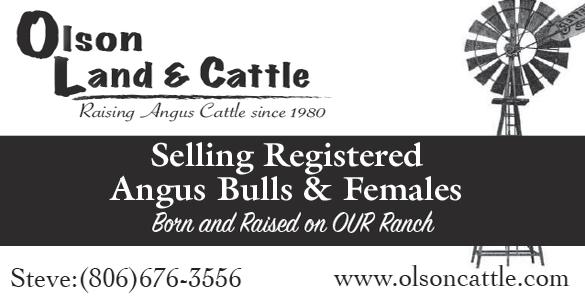

Angus
Treaty
Lyn LesikarJason Lesikar
Treaty
time...

and
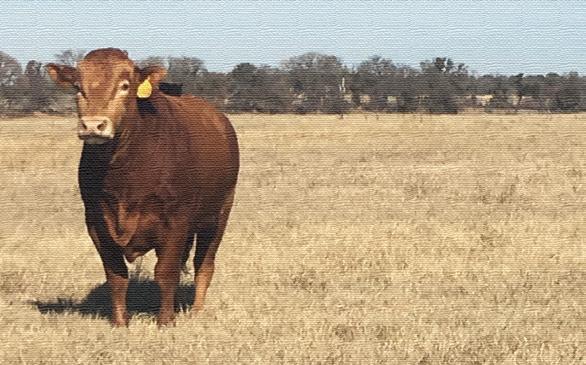
Quality
Foster





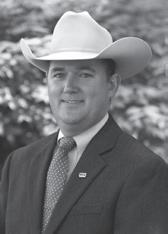
Angus
Athens, Texas


Beef Oriented Red Brahmans
the pasture and the show ring Liendo Plantation, 38653 Wyatt Chapel Rd. Hempstead, TX 77445
Detering, owner 281.989.8965
deteringredbrahmans.com www.hkcattle.com (30 miles south of Houston) Dinah Weil – 713-204-0995 hkcattle@hkcattle.com






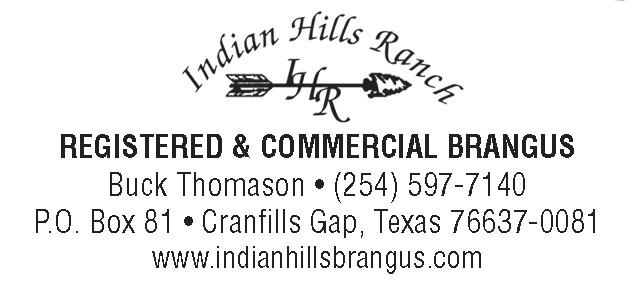
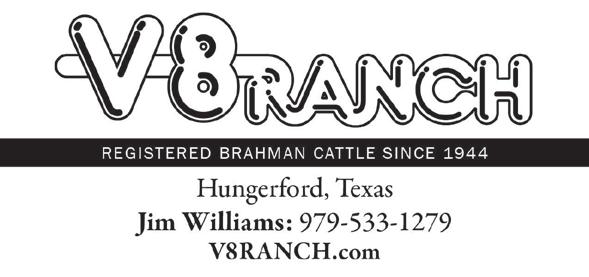

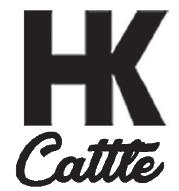

PARTIN & PARTIN HEART BAR RANCH
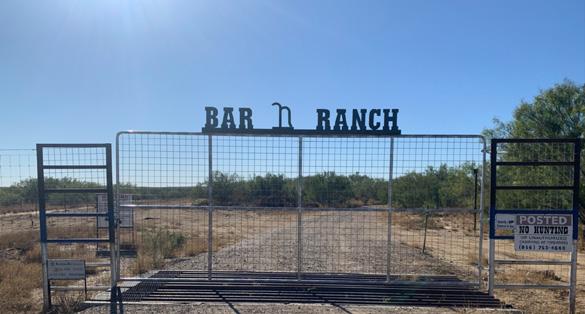
Janet, Steve and Carlton Partin 3159 FM 837 • Montalba, Texas 75853 903-549-3000

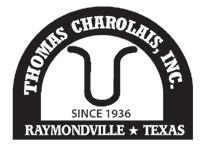
Fax: 903-549-3005 Janet Partin: 903-922-3689 Carlton Partin: 407-709-0297 www.heartbarranch.com
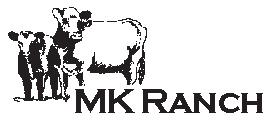


partin.partin@aol.com
Sartwelle Brahman Ranch Ltd
Box 27, Campbellton, Texas USA 78008
Scott

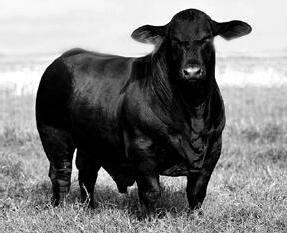

Satterfield

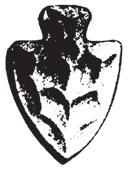
Registered Polled Herefords & Black Baldies FOR SALE
Contact: Nina Neel Sanders
Brady, TX
“Quality Registered Herefords” Est.1921 – Bulls for sale at all times out of good milking cows



Office: 512-446-6200 Cell: 979-218-0065
36 W. Beauregard, Ste. 301 • San Angelo, Texas 76903
O: 325-653-1688 • F: 325-653-3573 www.powellranches.com powellranches@gmail.com

David Neal, Ranch Manager 325-456-0669

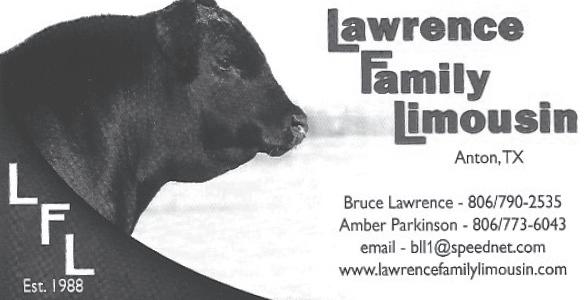
325-651-2826
Maynard Warnken 979-561-8846 Kevin Warnken 979-743-0619
POLLED HEREFORDS
Drawer 29, Schulenburg, TX 78956 979-561-8867 fax • rockinw@cvctx.com


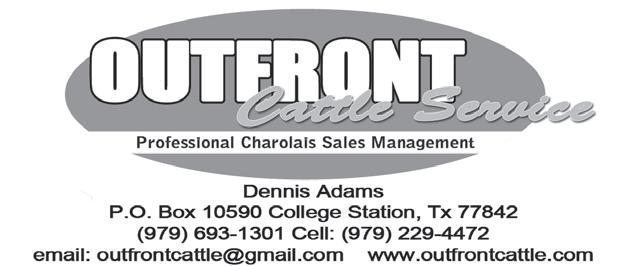
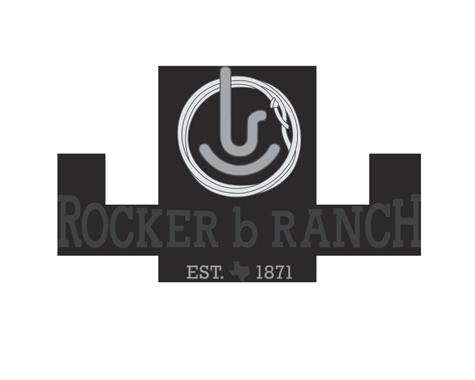
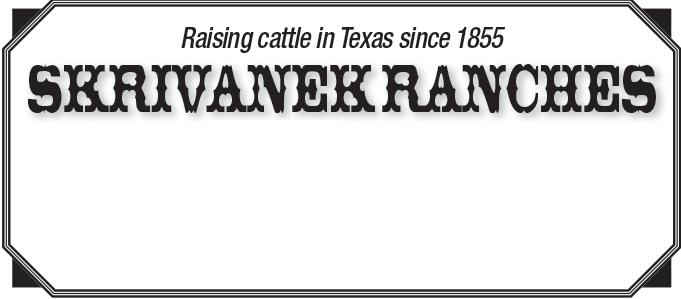
L.C. Whitehead, Owner Cell: 325-234-5115 • Office: 325-396-2384 Randy Wood, Mgr.: 325-396-4911 Mark McClintock: cattleman50@yahoo.com 5749 Rocking Chair Lane Ft. McKavett, TX 76841
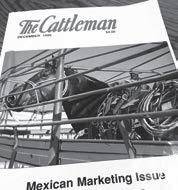

AQHA Legacy Breeder
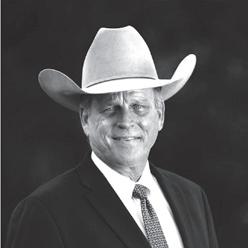
Weanlings, yearlings, 2- and 3-year-olds for sale. 832-494-8871 harrisonquarterhorses@yahoo.com www.harrisonquarterhorseranch.com
GIVE US A CALL!
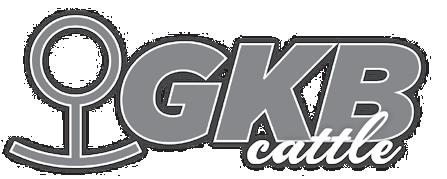


Joey and Susan Skrivanek, owners
Cell 979-224-4698 Home 979-567-3857
W. Mustang • Caldwell, TX 77836
j.skrivaneklaw@outlook.com
Nine miles east of Caldwell on Hwy. 21 or 15 miles west of Bryan-College Station on Hwy. 21

4609 Airport Freeway Fort Worth, Texas 76117 817/831-3161
Horned Bulls and Females 2348 CR 165, Kenedy, TX 78119 theuret@sbcglobal.net 210-315-0103



getaway home.
TEXAS PANHANDLE - Let’s look at this 6,000 hd. permitted feedyard w/953 ac. +/-, a recently remodeled owner’s home, 2 residences for employee housing, addtl. home on 6 ac., 5 pivot sprinkler irr. circles, truck scale, cattle scale, excellent perimeter fencing, located on pavement & all weather road, currently in full operation.
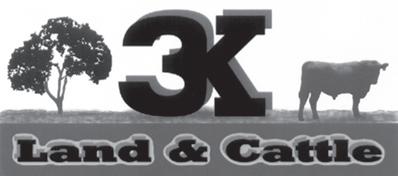
Registered Red Angus
Kay Ferguson
Charla Borchers-Leon

N. Wheeler St.
Santa Gertrudis
Purebred
Mary Kay Borchers
Victoria, Texas 77901

Star







361-575-1297
Braford F-1

Crossbred Cattle


Boothe 361-575-1297
361-571-9728
Santa Gertrudis
Harris Riverbend Farms
Cleburne, TX 76031
Glen
SANTA GERTRUDIS CATTLE


Breeding Santa Gertrudis
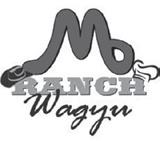

Box 869, San Diego, Texas 78384 Ranch: 361-701-5683

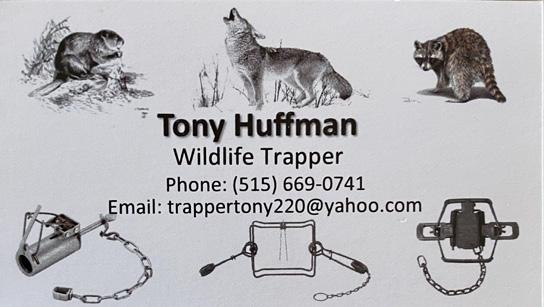

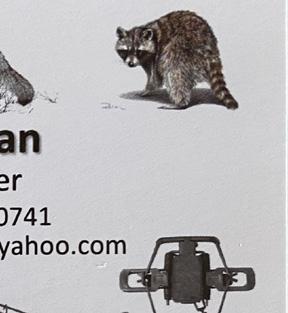
BRIGGS RANCHES

P.O. Box 1417 Victoria, Texas 77902 361/573-7141
Traylor Division San Roque DivisionSan Carlos Division Bloomington, TX Catarina,
TSCRA Ranch Gathering
Where: South Texas Maize, Hondo
When: 5:30 p.m.
Special Stocker & Feeder Sale
Where: Jordan Cattle Auction, Mason When: 10 a.m.
Stocker, Feeder & Premium Weaned Sale
Where: Jordan Cattle Auction, San Saba When: 10 a.m.
Ranching 101: Herd Health Plans
Where: Online When: 1 p.m.
THURSDAY, JULY 21
TSCRA Ranch Gathering
Where: Midwestern State University, Wichita Falls When: 5:30 p.m.
Replacement Female Sale
Where: Jordan Cattle Auction, San Saba When: 10 a.m.
WEDNESDAY, AUG. 3
Texas A&M Beef Cattle Short Course
Where: College Station
THURSDAY, AUG. 4
Special Stocker & Feeder Sale
Where: Jordan Cattle Auction, San Saba When: 10 a.m.
MONDAY, AUG. 8
Special Stocker & Feeder Sale
Where: Jordan Cattle Auction, Mason When: 10 a.m.
TUESDAY, AUG. 9
TSCRA Ranch Gathering
Where: Katzfey Ranches, George West When: 5:30 p.m.
TSCRA Ranch Gathering
Where: Stalwart Ranch Barn, Crockett When: 5:30 p.m.
Ranching 101: Sale Barn Best Practices
Where: Online When: 1 p.m.

TSCRA Ranch Gathering
Where: The Lodge at Pipkin Ranch, Winnie When: 5:30 p.m.
TSCRA Ranch Gathering
Where: National Roper’s Supply, Decatur When: 5:30 p.m.
Replacement Female Sale
Where: Jordan Cattle Auction, San Saba When: 10 a.m.
Weaned Calf Sale
Where: Navasota Livestock Auction Co., Navasota

A
Accredited
Angus
Bacica Farms
Cactus Feeders
Farm
Ranch
Beefmasters
Max Inc.
Cattle Raisers
S. Middleton
Cole & Associates
Haggard,
Ranch Co.
Farms
Concrete
The Dale Lasater Ranch
W. Kinsel
Charolais
Brahmans
Lambert
Creek Farms
Diamond Herefords
Diamond Ranch
Bros.
Gardiner
Neel Polled Herefords
Bull Enterprises
Riverbend
Herbster Angus Farms
Feeds
Ranch
Cattle
Cattle
O H Triangle Ranch
West Livestock Market
Land & Cattle
Outfront Cattle Service
Parker Friedrich Marketing & Consulting
Partin & Partin Heart Bar Ranch
Peacock Angus Ranch
Petta Ranch
Ranch
Indian Hills
Mound Ranch
Cattle
McAdams
Martin
Ranch
Family Limousin
Lee, Lee & Puckitt
Ranch
McPhail
Angus Ranch
Nutrition Center
Star Ag Credit
Star Angus
Ranches
Ranch
Simmentals
Ferguson
Ragland Mills
Cattle Co.
Rocker B Ranch
Rockin’ W Ranch
Rocking Chair Ranch
Roeder Angus Ranch
O Farms
Weigh Rental
Santa Gertrudis Breeders
Rosa Ranch
Sartwelle Brahman Ranch
Satterfield Ranch
Hereford Ranch
Brahmans
Scott Land Co.
Skrivanek Ranches
Slator Ranch
Stonewall Valley Ranch
Ranger
Cattle Co.
Texas A&M Beef Cattle Short Course
Beef Council
Christian University
Hereford Assoc.
Monthly
Thickety Creek Farm
Charolais Inc.
Huffman
TSCRA Membership
TSCRA Sponsors
Farris Ranching Co.
V8 Ranch
Walker Cattle Co.
Theuret





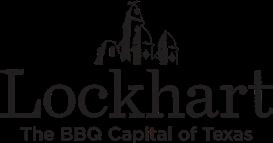
W.E. Connell, then-president of the First National Bank of Fort Worth, is pictured as the newly named Texas & Southwestern Cattle Raisers Association treasurer. Connell was appointed to fill the unexpired term of S.B. Burnett, who died June 27, 1922.
An association legend, Burnett was among the group of 40 cattlemen who came together to form, what was called at the time, the Northwest Texas Livestock Association. T C
